We hope that everyone remains healthy and safe.
|
- - all visits by groups and individuals as well as community support activities at the radio shop/museum have been suspended. We hope that everyone remains healthy and safe. If there is an upside to to being somewhat confined to home, I have tunneled into the "wood shed" and extracted a couple of basket-case projects one of which is the the 1935 Western Air Patrol 5-tube Super pictured above. More later - -
1 Comment
CL ad, Only a couple of hundred miles away. To the Radio Rescue Vehicle Robbin - er, ah, Sue! Seems that there are several Scott Phantom versions including the Phantom Deluxe and the FM versions. This is the 18 tube variety without FM. Probably the first thing people notice about Scott radios is the chrome - or the tubes or the - - -. Anyway, the chrome on this one was a solid 9 out of 10. If one of these has a lot of rust or, more often, flaking chrome the cost/difficulty of restoration increases exponentially. SEE: https://www.russoldradios.com/blog/77-chrome-plated-rivets As Found - In mostly original shape - only what's going on with that Candohm (top)? I used 2 of the new chassis-mount Ohmite wire-wound resistors for the replacement of the missing voltage divider (brown). Yeah, they are at a little bit of an angle since the new assembly could not use the holes for the original Candohm and I am reluctant to drill any new holes. I am happy to see a manufacture making resistors of this type. The only drawbacks are the cost and limited resistance values, which is why I had to use 2 wire wound axle resistors in the assembly. Some of the caps are really hard to get to/service. This transformer is following the 3rd IF tube prior to the 6H6 Detector. This is the transformer Associated with the RF AVC 6B8G . It is also hard to service and in this case a real pain since one of the windings was open. The only real option is to remove and repair the whole assembly. I counted the number of windings as I removed the old coil and replaced it with the same number of turns. The old windings were not burnt. See the little green stain on the form (center where the coil was removed)? This corrosion of the copper wire was found in multiple locations while unwinding the failed coil. Since I could not wind the new coil with the same basket technique as the original I measured the inductance of the original and matched it by removing a couple of turns on my new winding. Important: note the direction of the turns (arrow). As I recall, This coil was less than 60 turns. Caps restuffed and ready to reinstall. There were quite a few of the original carbon resistors that were out of spec. So I made some replacements using modern equivalents (or greater wattage) potted into glass tubing. The hard part is painting the bands which indicate the resistance. Glass tubing and a cutter. I mark out of tolerance resistors with a black dot as I do the initial survey - replacement in hand. Parts replacement finished, time for alignment. As I started the alignment I noticed audio levels were lower than I expected. I thought it would improve as I proceeded - it did not. OK! Everything looked good. All voltages were correct and the alignment results were as expected only with little improvement in audio level AND now that I could drive the output harder (following alignment), there was some serious distortion particularly in the bass response. You all know Occam's razor - If the speaker sounds bad, maybe it's the speaker. Well, it didn't hurt to check everything else first, but it was the speaker. Not a bad cone or transformer. No, it as much more simple. The voice coil former had been screwed - more precisely, there was a screw lodged between the former and he frame. The culprit - a wood screw. This screw seems to be of about the same vintage as the radio. It had been lodged here for long enough that it had made a wear-mark or dent in the coil form. It makes me wonder if the original owner had ever heard this radio working as it should. Spending most of a day finding a needle in a haystack, but a big improvement. Bramar cabinet with the old finish removed. As with the chrome chassis, the cabinet was in really good shape, but, as with most things stored in a garage for years, the finish was poor. Sealer applied. Toner added and the first topcoat. There are many versions of this cabinet as well as at least two finishes. One type has more toner for a darker finish. This is the lighter variety. A darker version can be seen here: https://www.russoldradios.com/blog/77-chrome-plated-rivets New grill cloth which is the old Grill Cloth HQ pattern (no longer available) and a new dial cover/lens which I fabricated on site. Almost makes you want to place the front side against the wall. ..
- - -Better living with chemistry from Chef Russ. The red goo was starting to get lumpy. Not much shelf life and too expensive to waste, I needed to get this project finished before the cost went up. The high-temp silicone molding material is always fun to work with, it seems to spread like some demonic force. No matter how careful I am it ends up on my tools and bench. It reminds me of the "Red Matter"from the Star Trek movie in which a very small amount was used to blow up a whole planet (Vulcan). Guess I better not drop any - ahh! Too late - - Above: Original grill on rt. On left is a temp cover to prevent finger-damage to the speaker cone. Going with what I have seen on my two radios, it appears that these models are often missing the speaker grills for the midrange speakers mounted on the sides. Of the 4 needed, mine only had one. Fortunately that one was in good shape and could be used to make a mold. The wooden box is used to form the red silicon mold. Some trimming of the new mold may be required. Don't forget to use a mold release agent. The side of the mold that you see was face down in the box/form. Above is a grill-in-the-making. In this case I used resin. The advantages of using resin is that it is readily available at hardware stores and that it can be tinted (tints are not at hardware stores. Sometimes "plasticizers" are available but they are intended to make "gel-coat" and not what I use.) The mix-ratio is variable depending on temperature and your desired set-time. The biggest draw-back is the difficulty in removing bubbles from the viscous mix. The shorter the cure time, the harder this becomes. One advantage of using the high-temp silicone mold is the ability to warm the resin in the mold. This will shorten curing time tremendously and help to eliminate the sticky surface that often occurs when molding resin. It will also reduce the time you have to work out bubbles. I used heat from the wood stove to harden these after they had begun to set up. The silicone mold will tolerate about 600 deg F, The resin WILL NOT(!) I would not exceed 100 Deg, by much. I have had trouble with resin parts remaining soft for long periods. Using the correct mix and temperature will reduce this issue. Use the least amount of tint possible to achieve the desired color. Above: A resin grill in place. It is OK and looks good from a few feet away but it is rougher than I would have hoped (most people would not notice), So I decided to make a few more using 2-part polyurethane "Model Pro". These came out of the same mold much cleaner with crisper detail and very few bubbles. But, as you can see in the "chemicals" picture below, the 2-parts, one clear and the other a greenish-brown, become bright white when cured. This stuff sets in 2.5 minutes and gets quite hot doing so. You have to work fast but the relatively thin mix allows bubbles to escape MUCH more easily. Using the high temp silicone is no worry for the heat produced. I would NEVER heat this stuff to cure and be aware that it can get VERY HOT all by itself. A good mold release agent is recommended by the manufacturer. It will keep the new part from sticking to your mold. It may also cause paint to fish-eye and other adhesion problems. Hint: Paint the white plastic grill with black lacquer first. Then follow with your custom-tinted, brown top coat. Another issue with having to paint the grills is that "mold release agent" that I keep mentioning. It can really mess up your paint. The new part can have the characteristics of silicone contamination. I found that the hardened part is stable when exposed to lacquer thinner for a SHORT time. I used a shallow metal pan to wash the part. Thin areas of flashing will also become soft quickly so they can be brushed off rather than having to cut them off. The thinner can remove MOST of the release agent but be prepared for issues. Apply the black primer coat first and try to spray your paint on as dry as possible. I have not tried non-lacquer based paints. P.S. I almost forgot to add, the black lacquer that I used was just out of a spray-can but the brown was applied with my sprayer, so I had the luxury of being able to add fish-eye reducer/flow-out to the mix. This was a big help in reducing these issues. Above: Painted poly grill Poly and resin grills side-by-side. The colors are a match since I used the same tints in the resin that I used to tint the lacquer paint. Made in the same mold: Left Polyurethane Right Resin The painted poly grill has a better finish than the resin grill. New Grill installed in the Saba 400. These were a friction-fit with maybe a little glue around the edge. It is possible that those that were missing simply fell out of the hole in contrast to the brittle/distorted plastic failures seen on earlier parts. Evidence for this is the good condition of the single remaining original grill used in the mold. Some, but not all, of the chemicals used. Wear your protection - - This is obviously not a kitchen project. If you want to give this a try make sure that you have a well ventilated and suitable place for the project. Wear protective gloves and clothing . Read and follow label instructions - and don't yell at me if you get red goo all over the place. I would estimate the cost of the pictured chemicals at about $200. Label on the shore 60 silicone "Limited Shelf Life". I would not count on this stuff remaining viable for more than a year. Unlike many two-part solutions, close is really not good enough for mixing in the hardener. A person really needs a scientific scale to get the 100 to 3 mix ratio correct.
With many of these projects, I am asked if I will be selling these parts. No. I have too many other projects. Of course, if you would like to install the hydraulics on the tractor for the new backhoe, I'll make you a pair of grills. Otherwise, that is what I will be doing for the next few days ;-) The CL post was old. It was not local. Diamond Oregon - where is Diamond Oregon? No wonder the two rare German radios had not sold, Diamond is in the shadow of Stein's Mt., near the Malheur Bird Sanctuary made famous a couple of years ago by the "occupation" - - - out in the Great Basin, basically a swamp in the desert of Eastern Oregon. So we jumped in the Radio Rescue Vehicle and headed East. We got to Burns and turned South. Stein's could be seen in the distance. The valley is lush surrounded by dry, desert hills. It is a paradise for birds - and mosquitoes. We stopped along side of the deserted road. Boy! There are sure a lot of gnats (needing my reading glasses). Thousands of - hey wait a minute - mosquitoes! We could not get back in the truck fast enough, followed by the swarm. CLOSE THE DOOR! Maybe that is why the radios were still there. All of the potential buyers had been eaten. I guess that I was occupied swatting since I forgot to take any pictures of Diamond. Maybe I just did not want to remember. I am sure that it is a nice place, sometimes, but you could not pay me enough to live there. Did I say that there were 2 radios? I meant three, two that I wanted and - a console. The Saba Freiburg Automatic 3DS is pictured above sitting on a Arabella console which I was talked into taking for $50. There just wasn't much time to negotiate. By this time I was feeling about a quart low. Nothing a gallon of cortisone couldn't fix - I hoped. We found the 12-tube 3DS sitting on top of a Saba 410 Automatic made for the US market in 1963, stacked like cord-wood in the corner of a bedroom. We discovered that the placement was more strategic than chance when we lifted the 3DS off of the 410. But the price was right ($250 each, about 1/2 the asking price). Prior to this year I had never run into a radio that had a thick, factory , polyurethane finish and at the time I thought it had been refinished, but no, it just needed to be refinished. The poly was so thick that it cracked lengthwise at least 3 times. So thick that it had pulled the veneer up along the cracks. Ouch! Another good reason to hate poly. But, hey, the radio still had the sales tag on it, right in front of a woofer where it would bob about like in the wind, but more on that later. We were out of there. Fearing the worst about refinishing the 410, I started on the 3DS Automatic. None of the radios worked - "They did work" when the sellers family brought them home from Germany. They weren't in the US military, so I am not sure how they would have acquired the US model 410 IN Germany. Maybe a person could just buy the export model. From experience I knew that finding export models of famous US manufactures in the US is rare. Finding either of these radios anywhere today is also rare and potentially costly. I was happy with the radios - and - so far showed no signs of having contacted malaria, or EEE, or ebola - - - scratch that. Remove the chassis from the cabinet without damaging any of the Saba "green cone" speakers or breaking a dial string, of which there are several. The good news was that this cabinet only needed a little glue, here and there, and some touch-up on a few scratches. After a few years a person becomes familiar with US made parts, enough that testing certain components is a waste of time - "THAT type of cap is always bad" - not many US parts here. There really aren't a wide variety of parts used in this chassis, just a lot of them. Still, much of the same applies. For instance, ALL of the caps with the dark blue labels are BAD After testing a few I knew that they all had to go. Good thing, they are easy to re-stuff. I do not recall having to replace any resistors on this one . Not so, the 410. I suspected the little red/polystyrene caps, having seen a few bad ones before, but, these were OK too. These "paper" caps had glass tubes, just like some of the replacements that I build, so restuffing (rebuilding) them was easy. They were sealed with tar. This radio had what appeared to be, original, European produced tubes, some of which had become weak. A few of these have direct, US made replacements. Some have US replacements that are similar. I replaced the weak tubes with exact replacement types by the appropriate manufacture. For example, a Telefunken ECC83 would be replaced with a Telefunken ECC83 rather than a US 12AX7, which would work just as well. I like to keep unusual radios as original as possible while still being reliable. It also needed a handful of the hard to find European panel lamps. Little grain-of-wheat lamps can be installed or even fitted into screw bases but lately I found some direct replacements. Cleaning of contacts, of which there are MANY, and lubrication can take a few hrs. Did I mention - DO NOT Break a dial string (!)? Yeah, I learned that on the 400 I worked on earlier: https://www.russoldradios.com/blog/40-old-radios All of the electrolytic filters were restuffed with 450V Nicheon caps. There are some motor-run caps in all of these motor driven, automatic models. I only replaced the ones on the 400 (link above) since the originals tested OK and finding the correct AC cap in my parts stash was unlikely. ESR seemed to be low (OK) so, if one of the tuning motors began to run slow I would replace them later with correct AC types. Really, there wasn't anything challenging about the chassis restoration. Now for the alignment which can be very challenging. First, take a look at the test cables I built, above. You might be able to get by with a bunch of clip-leads - no, you are going to blow everything up, better build the cables. One cable (not shown) is just a speaker cable extension. You really need the speakers for alignment and you don't want to remove them from the cabinet if it can be avoided. The top cable gives you all of the test points that you will need for alignment, As you can see it is terminated into a 7-pin miniature tube socket, so you need to find a 7-pin male connector. The lower cable allows remote connection to the multiplex adapter port. This is very helpful for working on the adapter. The connections are speced out in the manual. If you do not have the manual I would strongly advise you to not attempt alignment. This cable will work with the 410 as well. (Interesting note that I had been told that the test port on the 400 was for a multiplex adapter like on the 410 - it isn't.) The test/alignment cable will also work with the 400US. Alignment documents can be a little hard to find. Saba did not encourage field alignment, at least on the earlier models. When aligned properly, there radios have a search/AFC function that is partially mechanical. A motor constantly makes frequency adjustments and the action is visible in movements of the tuning knobs. When people visit, I like to turn on the radios and ask them to retune to a different station. Unless a person gets a firm grip on the knob the radio will resist and retune to the original station. If the control is moved enough to loose the original station, it will automatically move on to the next station in the direction that the manual adjustment was made - or you could just push one of the search buttons. Though few of these radios still have the remote, or they never had one, they had the capability to use a wired remote which included tuning, volume and other functions, depending on model. I have only seen pictures of the remote. Above is a shot of the tweeter configuration on the single channel (mono) 3DS. Why they did not maintain this configuration into the stereo units like the 400 and 410 is not clear to me. Above is the stationized dial and the tuning eye which is an EM34 that has 2 "shadow angles" one on top and one below. The indicators close sequentially as the signal strength increases. In this picture both indicators are closed on a strong station. Above is a demo of the 2-segment eye tube used on the 3DS. This video should give you some idea of how he automatic tuning works. Watch the tuning knob on the right Moving on to the 410. I needed to start the cabinet restoration on the 410 Continental as I was restoring the chassis knowing that removal of the poly finish was going to be a really ,slow, pain. This is the second poly finish on a German radio that I have had to deal with this summer. The first was a Grundig stereo with matching speakers. It suffered the same fate as the 410, long splits in the poly finish that also damaged the underlying veneer. When finished I gave the Grundig to a friend. It was a good prep for striping the Saba. I have dealt with thin poly finishes before by applying many coats of stripper slowly removing the finish. The poly is very resistant to chemical strippers and the veneer would not stand up to much physical abrasion especially with the existing damage. So, you can sand the cabinet when it is removed but sanding the poly off was out of the question. I ALWAYS strip cabinets outdoors. In this case, that is even more important. I usually apply stripper in the cool mornings to reduce evaporation which allows the stripper to remain active longer. This job was going to take days and that turned out to be enlightening. I started in the morning and after 2 or more applications, not much progress was made. The sun was approaching noon and the temperature was rising . I was both annoyed and impatient so I applied the stripper again. It began to bubble and steam quite vigorously. I though that this was going to be a waste of stripper - - but the poly began to peal up! What resulted was large pieces of the foam-like substance I am holding above. It still took a day and most of a gallon of stripper but I managed to get the poly off. A note: Good strippers are hazardous in many ways. "Green" strippers are usually too weak to remove poly finishes - or any finishes - and if they do work the resulting material is no longer "green" since it includes the old finish, not to mention the fact that you generally have to use much more of the ineffective stripper to accomplish anything. Most of the MEK strippers have been removed from the shelves at the big box stores. This is likely an attempt to avoid litigation from injuries caused by improper use - or - possibly, proper use. If they are worried about it, you should be too. If a job can't be done avoiding contact with the material and fumes - DON"T DO IT. So, do you think that I used poly on the cabinet restoration? Hell no! I used lacquer. If there is ever the desire to return to poly it can be applied over the well cured lacquer in a thin application and the lacquer is likely to save the veneer from a repeated poly failure. A couple of notes on the cabinet: This cabinet is very much like the one on the earlier 400. The only significant difference, besides the finish, is the use of white-wood strips used to high-lite the leading edge (front) where as the 400 used brass (colored) metal trim. The wood is easier to fix but I think the metal looks better. Saba named series of radios after German cities. The top of the line was named Freiburg. This must have been an annoyance to the lesser named towns, or maybe not. Anyway this US import model was called THE 410US Continental but the cabinet is stamped Frieburg which makes sense because it is very similar to the domestic (German) Freiburg models . This US model is similar to the Continental 410USE for the European market. See what I mean about the speakers. The 410 has 5 speakers with the mids (side) clearly being superior to the 3DS but they used a single forward facing tweeter which, to me, would seem to conflict with the newer stereo design. But you really cant take advantage of stereo with rhe speakers so close together anyway. But what do I know, It still sounds great. Hey, I have a cure for that speaker separation issue - later. Chassis look familiar? I guess that they had a good thing going, all they had to do was make it stereo. The output went from two EL84s running in PP to ELL80s, one per channel (stereo). FM was mono unless the 5 transistor multiplex adapter is plugged into the factory socket. I found an owners manual for the US model which was in English. It had service information/alignment that was translated from German. This is good BUT the translation is literal. It can take a while to understand the meanings, for example: "Tune L283 subcritical" which means detune L283 from it's peak. Inversely "Tune L283 critical" means, peak the output. This can take a little interpolation but it was a lot easier than trying to read German. The FM multiplex decoder uses 5 germanium transistors that often suffer from tin migration (tin whiskers). These can be replaced with modern types noting that the ground to the metal can may not be used. A Chinese replacement decoder is also available. Also, the tuning eye on the right is activated by an FM pilot, so it is either on or off rather than indicating level or position (rt or left as in modern stereo receivers) That 330K, 1/4w carbon resistor (orange orange Yellow silver) had become intermittent, mostly working when I was looking at it and going open the minute I turned the chassis over. The lead wire had become loose as can sometimes happen with this type of resistor. When it was open there was no audio on FM (it is in the IF string). Saba Villingen 400 Automatic Stereo (13 tubes)(left) and the Saba Freiburg Automatic 3DS (12 tubes, 18 watts of audio) Saba Villingen 400 Automatic Stereo (13 tubes)(left) and the Saba Continental 410US (14 tubes) (right) I moved the Christmas(?) sale tag slightly to the left to try to keep it from dancing around in front of the woofer. It also rattled a bit. Only drawback is a slightly less-faded spot where it was. The best way to get good stereo separation? - - - use two receivers. Running each receiver in mono mode gives you twice the power/overhead somewhere around 18W per channel. This may look a little odd but the results are awesome.
I still need to try to cast some replacement side-speaker grills. These seem to be easily broken and I need 3 of them. I would like to thank Thorsten Michael Ritzka for his help with finding schematics It has been a very busy summer - sorry. Watch for a posting on the $65 Scott Phantom restoration, soon. I have really never liked this cabinet design. It could have been more appealing if the colors/veneers were different - and the shape was less of a tombstone, cathedral compromise. But they did not ask me. I can see where they were going, kind of a "what's next" following a very attractive and successful cathedral marketing campaign. And, yes, I really like the 16 cabinet. There is reason to believe that others shared my view of the cabinet since a mid-production change resulted in a more conventional (yet bland) tombstone cabinet design using the same chassis with minor updates. However, the 10" speaker was reduced to a 8" version. Well, cabinet aside, the 116B is an impressive radio for the time, which was more or less, 1936. As-Found on local CL for $35 This is an 11-tube radio with an RF amp and 2 IF amps, all of which are 78s. I would compare it very favorably with any 12 tuber since the 12th tube in many designs was an eye-tube (signal indicator) which in the Philco is replaced with a Shadow-Graph which is superior in the sense that all eye tubes suffer from short life - possibly a year in regular use. Where as the electro-magnetic shadow-graph is still good 83 years later. A shadow graph is basically a standard meter movement where the pointer is replaced with a "vein" that covers and uncovers a bulb as signal increases. The cabinet and chassis were in great shape. Unfortunately the very dark colored cabinet section shows every abrasion and mark even in dim light. There were only a few replacement parts. Note the yellow cap in the lower right - a typical replacement for the short-lived "wet" electrolytic filters. One of the original can-caps was still present. I found an exact replacement for the missing can in the parts-stash and began the process of rebuilding or "stuffing". Note that the replacement cap is a 630V 10uf film cap. (metalized Polypropylene) not an electrolytic with an expected durability/lifetime benefit. Yes, the + stud/lead is a piece of Romex (TM) with its own insulation which assists in insulating the B+ if the original rubber insulator is degraded or missing. Filters done, time to do the rest of the caps and make replacements (molded) for about half of the original resistors. This process is discussed in earlier posts. Additionally, all rubber mounting components are replaced. Chassis ready to go, now on to the cabinet. Above: I have had to adjust the brightness of this exposure to assist in illustrating the process. The really dark cabinet is difficult to display accurately in a photo and is greatly affected by the intensity/brightness/direction of the illumination. Have you ever noticed that, following the removal (stripping) of the original finish, there is still an artificial tone to the wood? I believe. with pretty good certainty, that many manufactures used both toner and dye to tint their cabinets. Chemical stripper usually leaves the tint created by dying the wood behind, but sanding can remove most, or all, of it. Above, the cabinet has been stripped and several coats of dark walnut dye have been applied to the trim and arch. Don't confuse "dye" with stain. They are not the same. As I said, taking a picture of a surface that is this dark with enough light to show the tint is tough. In the pictures above, the picture on the left is as-found and the picture on the right is after dye, toner and a top coat. Pay attention to the areas in direct sunlight and you (might) see that the finish as a VERY dark reddish-brown (very dark walnut). You might also ask - why did he refinish that radio? Well, the problem with the photos also hides the issues with the dark cabinet. When I first looked at the radio in a moderately well lit room I thought that I would not have to refinish. But once the radio was well lit the stains (top) scuffs and scrapes were painfully clear. My first instinct was to tone the dark areas with Dark Vandyke Brown. I often use this toner on trim that appears black. VD Brown is a great color - when used in moderation or on small surfaces. But when applied heavily on large surfaces it takes on a greenish cast that I find disagreeable. (keep in mind that applying SO MUCH of any toner that any and all "highlights" are covered up is generally wrong - or at least inconsistent with the way it was originally done). If the original toner did have the greenish cast it may have been moderated by the yellowing of the top coat, but, I think that the tint(s) used in the 1930s were slightly different than those available today. So, what I did was mix up some lacquer with the Extra Dark Walnut dye as a tint. I also modified the lacquer topcoat so that it is closer to semi-gloss than full gloss, but(!) after a week it was buffed out. The large dark area also was the cause for modifying the gloss. I would have to see many more examples of original finishes to modify my color scheme but for now, this is my conclusion. Like I have said - I need a BIGGER bench!
Following alignment I found this radio to be very capable. The only issue I have with it is minor. When aligned as per the instructions I find that the top end of the broadcast band is SO hot that a long antenna just swamps the receiver. Actually it receives all of the local station with no antenna at all. My first instinct was to detune the IF slightly but this would affect short wave performance too. So I decided that a moderately sized antenna was a better solution, switching to a longer one for DXing on SW. Another thing that occurred to me was to peak the broadcast band near the center rather than the top as is generally done. As-is the over-driven phenomena is limited to 1.2mhz and above. There are two tie-ins to this , one being the shadow meter which is very responsive on the upper BC band and X-band and less so elsewhere and the X-band is also very hot, though listening there is limited mostly to beacons and such - nice beat, but vey repetitive. One other note in this respect is the option to add Philco's loop antenna to the connections provided for it. I would assume that this would reduce the issues found with a long wire. I don't know how well it would work for short wave. In conclusion, this is a very capable radio comparing well with other 11 and 12 tube radios of the time - I guess that I'll get used to the cabinet design - maybe. P.S. Get someone younger to lift it onto the bench. Harry sent me some tubes. I try to keep the correct original-type tubes in the radios that are on display. So I had been talking about finding the Arcturus made "Crosley" branded, BLUE tubes for my 1931-1932 Crosleys like the Buddy Boy. Most of these tubes have become harder to find than the radios. Several causes for replacing the original tubes are likely. First - "OH LOOK AT THAT COOL BLUE TUBE" which has a corollary, "I'LL SELL THE BLUE TUBE FOR $$ AND REPLACE IT WITH A CEAR GLASS TYPE" Second, in my opinion, Arcturas tubes were less than average in reliability. The company was very innovative but this did not translate into longevity both in the tubes and the company. So the original "blue" tubes often had to be replaced. At this point I should explain what a Arcturus "BLUE" tube is, but this site has already done a good job: http://www.bill01a.com/articles/arcturus-a.htm Having invented one of the first power pentodes is still not as important as the blue glass, at least in collector appeal. Here are 2 "PZ" tubes made by Arcturas and co-branded for Crosley. The PZ was developed prior to the RCA 47 (247) but was similar enough to be used in the same circuits. At some point Arcturas had difficulty sourcing the blue glass, even prior to the conversion to ST shaped bulbs. Pictured on the right is another PZ I already had with a clear G bulb. And, here is the box in which the blue tube was residing. Do you see any issues? Well, while being related to a 42 the PZ is clearly NOT. Besides the base configuration (it wont plug in). a PZ is a relative of the 47 which has a 2.5V filament compared to the 6.3V filament of the 42. No wonder it tested SOOO good. At some time someone must have tested it as a 42 on a TV-7 since it was marked 90(?)/50, a very high reading and indicative of TV-7 test values. No wonder, it was lucky to have survived the test! I know that this was prior to Harry since he does not have a TV-7. Is seems that nobody even noticed the difference, or the 5-pin base (a 42 has a 6-pin base). The tube required a rejuvenation since the high filament voltage had "paralyzed" the cathode. This brought it up to near new spec. True, the PZ in the box might have not been the original tube in the box. But even if it had been a "42" we still have a problem here. And true that today just about anybody can print and paste labels, but this tag is very "vintage" and appears in text and color similar to other Arcturus printed material. Note that one of the end-flap tags has also been changed to "42". It does not appear that the other "PZ" label had ever been covered. So, no - not true.
Spring cleaning time in the chassis/parts shed. I have accumulated quite a few late 20s metal box radios. All of them are very common. These radios are so common that shipping one usually costs more than the purchase price. So why is that? Well, besides them being popular in the 20s and having been built like a metal brick, nearly all of them have little chance of ever working again. Above are a pair of Crosley Bandboxes. Along with many of the metal-box radios that Crosley built they suffer from almost universal pot-metal component failures. There are about a dozen cast parts that are critical to the radio's operation, so much so that a single failure will stop most restoration efforts. I have salvaged a few of these unfortunate specimens, but realized that the spare parts were only good for other unrepairable models. So why bother keeping the parts? The metal-box radio pile also had 4 AK 40s and a pair of AK 37s, also among the restoration challenged. These will be discussed at greater length below. Above, the stator found in the Bandbox. This one has had it. The cracking/swelling pot-metal has caused the stator plates to contact the rotor plates. People have tried bending the plates so they don't touch but the linearity is lost in doing so especially since this is true for all 3 of the variable caps. The best that can be expected form such an effort is the ability to tune one or two stations with the rest of the tuning range, useless. Even if such a repair is quasi-successful, time will eventually lead to further expansion of the metal and failure. Below, the pot metal bracket, through which the rotor control shaft must pass, is also deformed and binding. Most of these look much worse than this one. Below is a collection of these pot metal parts as well as the proposed solution. Note that the pot metal on this stator is in much better shape. Chances are good that one day this too shall degrade but I am going to use this one as is. The bracket(s) were not so fortunate. At the bottom of the picture are 2 plastic replacement brackets and one has been installed in the assembly (center). While I was already on the path to design replacement parts, I had not settled on a method. I was moving towards recasting the components in resin when I found an old article showing the parts being made from old plastic decking. This article seems to be missing now, or I would post a link. Since I had a pile of old deck material out on the "back 40" it seemed like a reasonable idea to give it a try. The old material that I had was an inch thick (newer material is only 3/4" thick and has a laminated wood-grain, not recommended). It is easy to shape on a table saw. It is easily strong enough and accepts wood screws, so the original machine screws/nuts will not be reused. Now, from memory, the article mentioned above said that he had trouble with tracking/linearity and that is easily possible. Here are some notes to avoid that. 1. When cutting the brackets, shape the material in long strips. In other words shape the material by width and thickness, making all cuts possible prior to cutting it into equal length chunks. This will improve consistency. 2. The hole required for the rotor shaft must be drilled on a drill-press. It must be accurate and STRAIT! Do not make it over-sized, just adequate for the shaft to be pressed through the hole. Note that the hole is off-center. 3. A ground must be soldered to each of the copper retaining clips shown above. 4 Make sure that each of the mounting screw locations is identical. Above: This is the assembly that reused the original stators. Both of the pictures below show the unit in which I had to rebuild the stators using 3" #6 bolts and stainless washers. If you use larger hardware the rotor will impact the stator at the full closed position (or earlier). The original tuning drive gear bracket is also pot metal. I thought that this was going to be a challenge. Thanks to the ease of working with the plastic material, it was not. The shaft is pressed into the gear and will require a few gentle taps to remove and reinstall. I shaped the rounded nose (passes through the escutcheon) with my Dremmel tool. There are 3 more parts that must be addressed. And here is where the AK-40s come into the picture. The pulleys used on the Crosley were also made of pot metal as well as those used on the early AKs. Fortunately AK began to make them from brass at some point. So, below, you see that the outer 2 pullies have been replaced with brass AK parts. Note that the center pulley is the original with 3 screw hole used to mount the dial/gear. Great, right? No. Again tracking will be affected by this lash-up since that original part is slightly larger in circumference than the brass units. The solution to the tracking issue is to drill mounting holes into the center brass AK pulley and use it as well. The holes will have to be tapped to use the original hardware. Luckily the original Crosley bands are adjustable enough to accommodate the slightly smaller pulleys. At this point I should note that the Crosley is a good candidate for this "mod" since it's original "one dial" construction incorporated 2 additional trimmers used to compensate for tracking errors in the original 3 tuning cap assembly. These trimmers/padders are the 2 levers located on the far lower right and left. For some reason I found it easier to use these trimmers in association with the far right and left caps rather than the left and center as originally built. This only required moving one wire. A couple of more notes on this radio. Shields must be in place for alignment. There is a lot of gain in this radio. Stage coupling is an issue. Mine work best with low value grid leaks ~ 1m or even less. The first tube is mostly used to decouple the antenna/ broadband RF amp. You might find that the radio works just as well with this tube removed. Not suggesting that you do that, just an operational note. I found that on strong stations I was running the filaments well below 5V. It also works well with B+ at about 65V and audio final B+ at about 90V so you can lower your C voltages as well. Now, About those AKs. You might ask why I borrowed parts from one to rebuild the Bandbox. After all the AK was probably a better radio. I think it also looks better. It is AC powered rather than running on batteries like the Bandbox. The early AK metal box radios also had pot metal pulleys, but that was not an issue here. It seems that there is a radio-myth regarding the potted power supply that says that for some reason the filter caps are often good. This is just a fantasy. The effort needed to resolve this issue is beyond what most people want to invest in these rather common radios so it is easy to adopt this mistaken philosophy. The result is a radio with melted tar in the bottom and a failed power transformer - which leads to the second myth - AK power transformers are weak, which is also wrong. This, however, is a good way to end up with a parts chassis as was the case with several of the ones I had. So, rather than hoping for the best, how can you judge the viability of one of these power supplies? As seen above a simple measurement is the best way to start. There should be more than 200V on the B+ when the radio is in operation. Much less and your radio is headed for the parts-bin. Even if the B+ is only a little less, say 180 - 190V this indicates excessive draw which is likely leakage in one or all of the filter caps. Below, you can see what is inside of the "can". The best way to service the filters is to gently warm the entire power supply can in an inverted position allowing the tar to run out into a metal container. Other methods usually result in damaged components. Only enough heat is required to melt the tar. This temperature is not high enough to damage the paint on the can. The added benefit of rebuilding the supply is the ability to replace the original wire which, by now has become brittle and unsafe. Below you can see the components, rewired and repositioned in the can prior to replacing the tar. The 2 studs in the center are the ground. Sometimes it is best to bend these tabs upward to allow for easier passage of the components. It is always beneficial to remove the 2 nuts/bolts. Another tip is to cut all of the wires as short as possible prior to melting out the tar. This is especially true of the wires leading to the rectifier socket. Also remove the cork found there. Below is the underside of the rectifier socket. Cut these wires as short as possible to prevent binding as the tar is removed. Don't forget to service the 2 glass-tube resistors on the B+ and detector B+ while you have the supply apart. It is easy to forget about the bypass cap that goes between contacts 3 and 9 since it is the only one that does not have a leg going to ground (and is not one of the filters). Above: repotted prior to reestablishing the connections on the power supply board. Now, you will have to find parts for your Crosley elsewhere - - -
OR, What to do with that old desk-top computer tower. Four or five years ago the hard drive on my HP Media Center desk-top was dying along with Win XP support. It seemed wasteful to throw it out after all it was only 10 years old (ancient). So it sat in the garage until it got in the way. Surely there must be something useful in all of those drives, memory and processors. Na, not really, except maybe the 300W power supply. These supplies provide 3.3, 5, 12 and -12 volts, well filtered with lots of current available. Do any of these voltages seem familiar? Well for me I quickly realized that this would make a great supply for those old 1920's tube radio filaments. Fifteen amps at 5V. You can run a lot of 01As off of that and a few (dozen) more 199s from the 3.3V. Too bad that the supply is not isolated and has no HV output. Still it looked like an interesting project so I removed the supply and scrapped the rest. It took about an hour to replace the electrolytic caps which are usually the cause for failure in these devices. Lotta' wires - These supplies can be purchased new and are rated/sized by wattage. This one is about 300W but you can get bigger and smaller ones. All of them have a lot of duplicate connections. Besides the output voltages there are several connections for protection circuits that must be connected to prevent the supply from shutting down. But mostly, there is a lot of duplication. The conductors come out in a wad. I would prefer a bit more order but I was not going to redesign the supply. Since the supply is of the switching variety, you might find as much as 60V on any conductor as measured to ground. This could work - but not well, especially if you wanted to connect your receiver to earth ground. Add Isolation Transformer - If you traveled to Europe in the 1960's, you might have carried one of these adaptors with you - just to run your US electric shaver. Not so necessary now and likely to put a dent in your airline weight allowance - or anything it crushes in your suitcase - but great to convert to an isolation transformer (left of the PS). So now I had isolation. I should mention that both of these parts/assemblies could add a significant cost to this project IF you have to buy them, but, they should be relatively easy to scrounge. WOW it's almost done - NOT! Now I needed to hit the internet, since, I could have built the HV supplies and the metering, but why spend a week on a $3 part? Most of what I needed was available on E-Pay or Mouser and when all was done it is interesting to note that the meters and inverter supplies cost about the same as the connectors. The banana plugs and alligator clips all came from Mouser, quick and easy. Trying to figure out what to buy on E-P was a bit more challenging. I needed A, B and C voltages. The A and C were already available from my old computer supply but B+ would need inverters. I had plenty of 12V, so an inverter that would give me up to 200V running off of a 12V source was needed. There are plenty of cheap, mostly Chinese, supplies on E-Pay. None of them have schematics or specs beyond absolute ratings. The same can be said for metering. I needed meters suitable to monitor the B+ (200V). It would be nice if they could be used for the A and C voltages as well. For about $3, inc. shipping, I found these. They also incorporated an amp meter good to 10A. The 3 inverter supplies I chose could produce about 5W output. So as voltage-out increases current must decrease. At 180V that is about 27ma. Good enough for several 171As and 110ma at 45V, good for a lot of 01As or 199s. Fortunately they can protect themselves from over-current. UNFORTUNATLY both the meters and the inverters are common ground. I was also going to need a cabinet. Something resembling a 20's radio would be great. Something with a small footprint would be better. The top is screwed on so it can be removed for service and the front panel is only held by friction/fit so it too can be popped out for service. I bought a rough, 1' thick mahogany plank. I needed about 2 board feet for this project at a cost of about $6 per BF. I saved the rest. I thought that the slanted panel look would be accommodating on the bench and used a piece of 1/4 inch plastic for the panel with the back side painted black. Cutting all of the holes in the plastic panel was a pain - probably the hardest part of this project. But, I managed to get it close enough on the first try. As mentioned, the PS was going to be common ground whether I liked it or not. Really not to big a deal but issues include: Current metering - since the meters measure amps through a shunt to ground (return), the current must be added if more than one ground is used UNLESS the device has separate isolated return(s). If each A, B or C voltage is being supplied to a separate, isolated, device no problem using each meter to monitor current consumption. SEE the video in which I use the A supply to monitor all current consumption. A meter with the shunt on the + side would have been much better allowing metering on each source. Also, the meters require 4V - 28V for their own supply, which is also common ground. No output can be arranged in series. For example 100V + 100V = a short since the + can't be wired in series to the next source ground. Issues for isolation to earth ground. Note that I added a green ground connection, which works for me since the shop is the only building on the ground and electric co's transformer. Performance elsewhere might be noisy - at best. Isolation transformer required. C voltage is available from the computer supply but care must be observed in wiring. From my supply I can generate up to -12V but the meters will not measure - voltage. This means that the + side of the meter must be to common ground and 4V to 28V must be provided to run the meter without causing a short. An additional C voltage could be added using another variable. No current will be indicated by the meter since the C connection on your old radio draws almost no current. The C source needs a load resistor - about 100K, just to keep the associated rheostat within a reasonable range. My control is 5K to 25K. If your control is 0 - 25K, add a series 5k resistor. Schematic for the Freed Eisemann test subject showing the power connection color code used on the PS. The Freed Eisemann 50 is a 6 tube TRF with 01As in all positions except the AF output being a 171A. All of the metering really help in trouble-shooting 20's radios. There is a small amount of hum but it is coming from my part 95 transmitter rather than this supply. Note that the B+ current indicated on the 5V supply meter is about 15ma (1,242 B+ off to 1.257 B+ on). ONE MORE NOTE on these meters - One reason that they may be so cheap is that the 3rd decimal point never lights - 99V reads 99.00 but 100V reads 1000. Also, cool in the dark - see video. Russ UPDATE: In a related discussion on ARF there was some desire to raise the voltage on the 5V supply to near 6V. A simple modification to the 5V metering will raise the 5V supply to 5.6V and the 12V supply to 12.8V. This is accomplished by dropping the voltage on the pink wire by connecting a 2K resistor from that conductor to ground (any of the black wires). It is likely that 6V or higher can be achieved through other modifications, but, using a resistor smaller than 1.5K will cause the supply to shut-down.
5.6V is more than enough to power 01As and the like, allowing for some attenuation through the radio's filament control. - - "Just throw away the turkey." YUM!! Speaking of turkey, take a look at this one. This is a 1946 Zenith "Universal" or "Wavemagnet" set that is a close relative to the TOs discussed below. It is the YX version (6G001YX) which is black vinyl covering an aluminum cabinet. The majority of these came with a wooden cabinet which I prefer, but, none the less, this is an unusual model deserving restoration. Above: As Found This chassis worked but the audio was low, there was an intermittent crackling in the audio and the antenna seemed to be ineffective at best (loss of gain in RF stage). It had been about 1/2 recapped. The repair incorporated a lot of these twisty-splices. They are similar to some splice/repair aids sold around the same time as the radio's manufacture, though these are home-spun. The idea was OK if "getting it working" is the primary concern, but, the one above, and many of the others could have used some more solder. Mostly, they just add to the unoriginality advertised by the "yellow caps". Note the Zenith cap barrels on the bench to the right. They were pulled from my replacement stock and will be used to replace the yellow caps. The filter(s) can had been restuffed, but incorporated more twisties and rather than making a direct connection to the posts, the electrolytic caps had been spliced to an insulated wire and protruded through a hole in the center of the base. This made for an ugly, busy, repair which also included a new ceramic resistor (5W wire wound, original was 2W). Most Zenith Chassis are full of orange "Zenith" paper dielectric caps. I would suppose that shortages drove the factory to use non-Zenith labeled caps at times. I would say that there is about a 99.9% chance that these are original since lead dress was exactly like the Zenith labeled caps. I can almost visualize the meeting where engineers at Solar concluded that burying their paper dielectric caps DEEP in a wax body would prevent moisture from intruding into the paper, which caused failures. It didn't help. They still fail at about the same rate as the orange caps though the leakage might be a little less. What is for sure is that restuffing one of these is a challenge. There is a paper label but it is not strong enough to be used like the cardboard tube of the orange ones. In earlier restorations, like the Westinghouse refrigerator, I carefully cut and extracted the original cap from the wax, but only succeeded about half of the time. There has to be an easier way, and there is - - Above: the first step - remove the original label. About 3/4 of them will slide off with no trouble. Below: Use 2-part molding putty to make a mold from the original cap (paper label removed first). When the putty sets-up, pull out the original cap body. Throw it away. The wax used on the original is hard to melt to a liquid state and cools way too fast. I used some wax from another project. The only complaint is that I would have preferred it to be a bit darker brown. Unseen is the small hole at the base of the mold from which the wire lead emerged. To fill the mold first place the new cap so that it's lead penetrates this hole, but allows an opening to pour the new wax. (trying to locate the hole with the tube full of hardening wax is a bad idea) Melt the wax - I set a metal pan on the shop wood-stove for a minute. Don't use bee's wax. It is likely to break apart. Pour the hot wax into he mold then insert the new cap so that the wax flows aroud it resulting in the new cap being centered in the new wax body. Take care that you do not force a stream of hot wax from the mold. This is likely to happen as the diameter of the new cap approaches the diameter of the tube. SO USE CAUTION. Needles to say, don't try inserting a new cap that is larger than the tube. 400V caps might be desirable as compared to the larger 630V ones. I have asked a couple of the bulk vendors for availability of the smaller 400V caps. I will update as I get more information. The lower voltage caps are available through some of the large jobbers but have a prohibitively high cost. Let the wax cool and pull out the new cap. Trim any flashing. Install the old label. After: Above Before: Below The restuffed filter can was rebuilt again and all of the twisties were removed along with the unnecessary wiring. Most of the original rubber insulated wiring was in good shape. Chassis reinstalled, aligned and ATP.
The Zenith TO is a Classic regardless of model. The black vinyl covered box is not particularly attractive. You never hear of them being described in terms used for 1930s wooden cabinet radios. I don't think I have ever heard one described as Art-Deco or any of the other common (if still incorrect) terms used in for-sale ads. No, the attraction to this radio is much more utilitarian. First it was truly portable containing both batteries and adequate antennas. It was compact for the time. And, most of all, It worked well, really well considering that later models used only 5 tubes. To me, this attraction is more like that associated with some of the early tube testers and other test equipment. This is not the kind of radio that looks good displayed on the fireplace mantel, yet, no collection is complete without one. What?! Did I just say that no collection is complete without one? Well , I guess that I am going to have to figure out what to do with these. Above is a G500, the first model to use 5 miniature tubes Black-Beauties/Bumblebees, probably one of the worst mass-produced capacitors of all time, are a common issue for post-war radios. It is a generally accepted belief that they can not be re-stuffed (rebuilt) and therefore any restored radio that had been constructed using them will inevitably turn out looking like the "before" example, two pics below. After: Restoration including the rebuilding of numerous Black-beauty capacitors. Before: A previous repair which used twisties to avoid cleaning posts, filters mounted under the chassis, rather than restuffing the electrolytic can(s), flying connections (at least 1 miswired), several varieties of modern capacitors and resistors, and a lot of singed/burnt plastic insulation on wiring. Having said all of the above, this is still a pretty standard repair ("restoration"). This is why these radios have been sitting around for so long. Even though this example was working, I had considered giving it away or just throwing it out since it did not meet the standards set for the rest of the collection. Selling it to some unsuspecting CL buyer was out of the question. Note as well, that both locating original parts and correct placement was going to be a real challenge. What I needed was a way to restuff existing, original caps or create new replacements with that vintage look. Above you will see option 1 - restuff the original Black-Beauty caps. No special tools are required. All you have to do is line-bore the original cap. You can do this with a drill press or just a hand-held drill. What's important is: Holding the cap securely without crushing it (it becomes weaker as the material inside is removed). Drill speed, so it does not bind or get too hot. Maintaining the Z axis (in a strait line). Making the hole big enough to accommodate the new cap. Any failure to maintain the 4 conditions listed above will result in a broken/crushed housing, which, if minor, can be repaired with super glue, but further machining will be difficult if the integrity of the tube is compromised. EASY!
An H500 TO looks very similar to the G500 though one uses a 5-tube chassis and the other uses the 8-tube chassis. Above is an A600, one of the last versions of tube-type Transoceanic. Above is the restored A600 chassis.
OH NOOO!! There are at least three ways to do this! Which way is easiest? Using the glass tubes. Which way is cheapest? Drilling out the original caps. If the original caps are missing, such as in my G500, you must either find originals (I'll bet you have thrown many away), or make some. If you choose the mold method, which is the most difficult to get started, you will need to build a form. I have built several sizes that can be reused. The one you see above has an adjustable base so that thickness can vary depending on the part being made. You can use silicone from the hobby store but it results in a mold that is flimsy and probably will not stand up to more than a few uses. Build your forms sturdy and accurately so they can be reused and most important, so they will not leak as the compound hardens. Use mold release. You will need an accurate scale to mix the components 100/3 by weight. Though the red stuff is expensive ($90/gal) the hobby-store stuff probably costs more for the same quantity. I am just guessing, but, the HS stuff is probably close to shore 30A, So thicker walls will be needed on the mold so it will not twist or deform. Cast replacement above. "Sand" resistor needs new sand. Above is the underside of a 8-tube chassis which uses the standard paper caps of the time. The paper caps can be restuffed .
So there you have it. Restoring one of these radios to the original appearance and function is not impossible, just time consuming. As always - if you are going to do a job, do it to the best of your abilities |
AuthorRuss Webb Russ Webb & Fuzzy
Best Buddy, Radio fixer Categories
All
Archives
December 2023
|

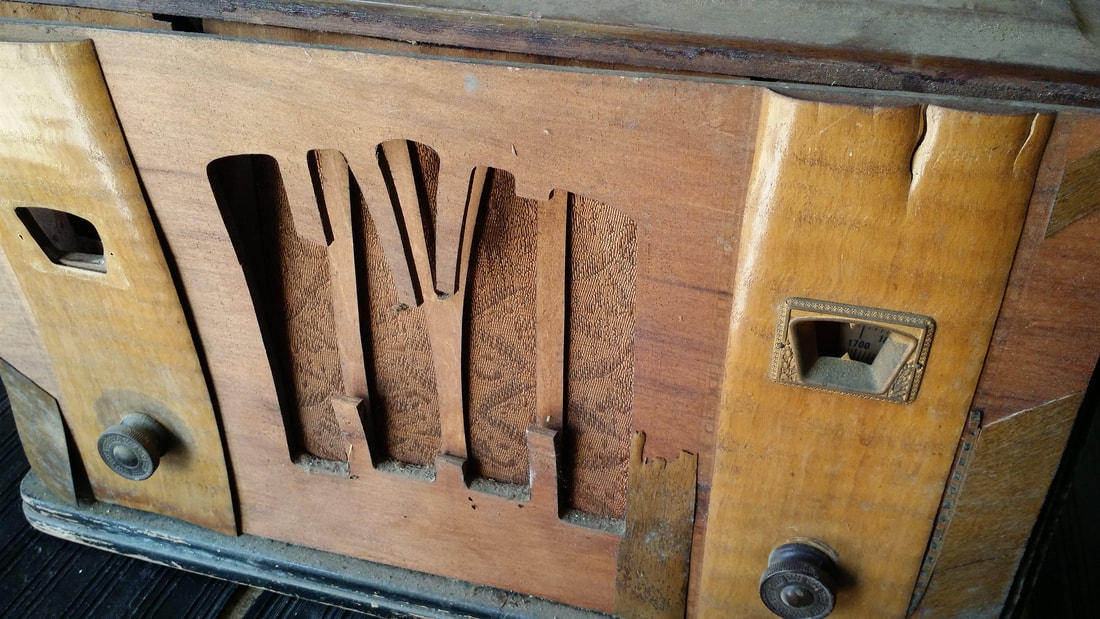
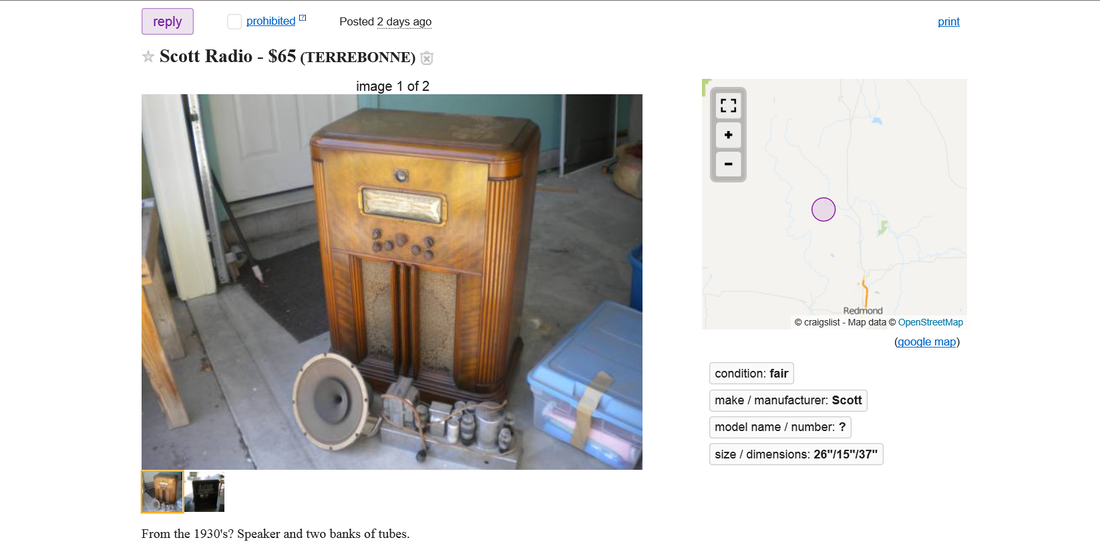
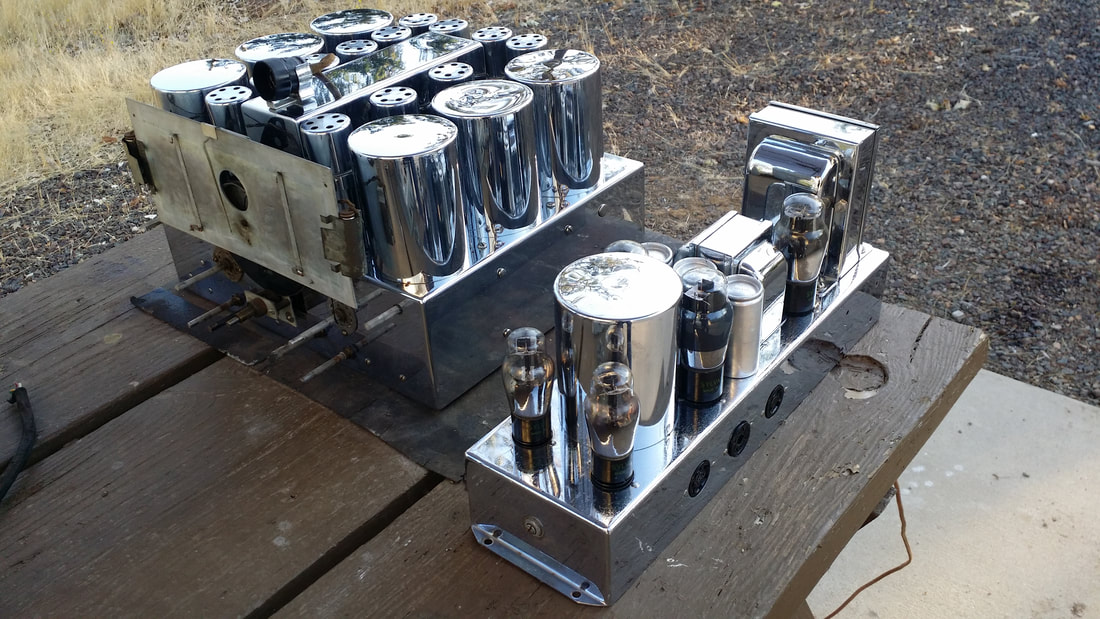
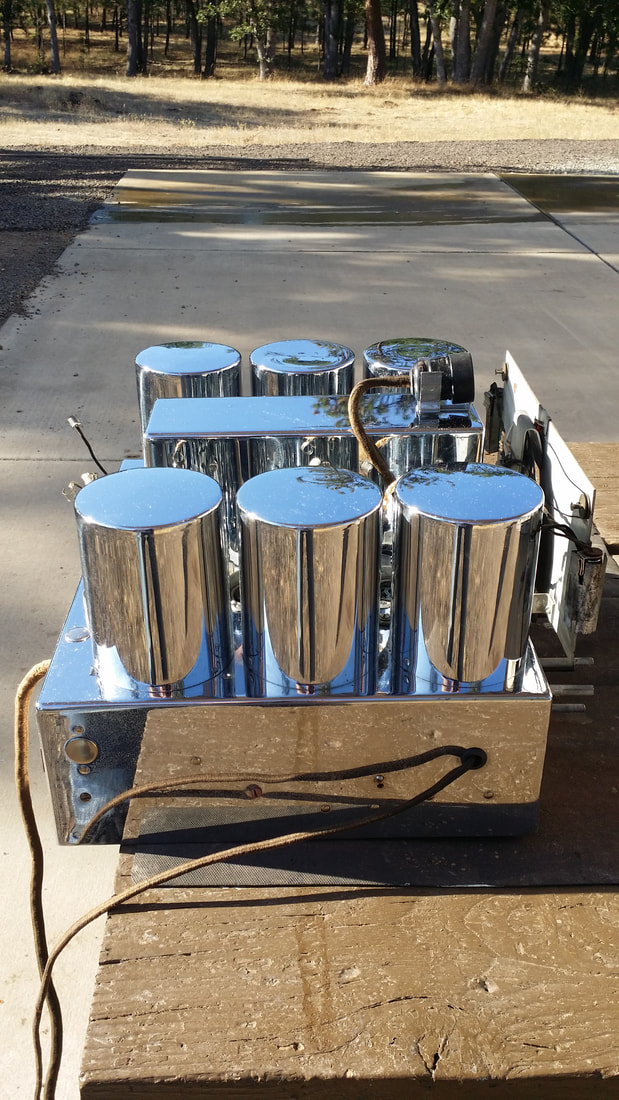
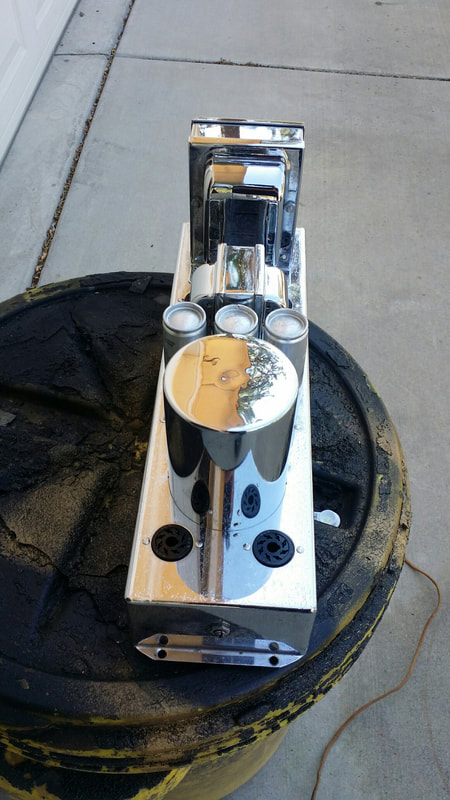
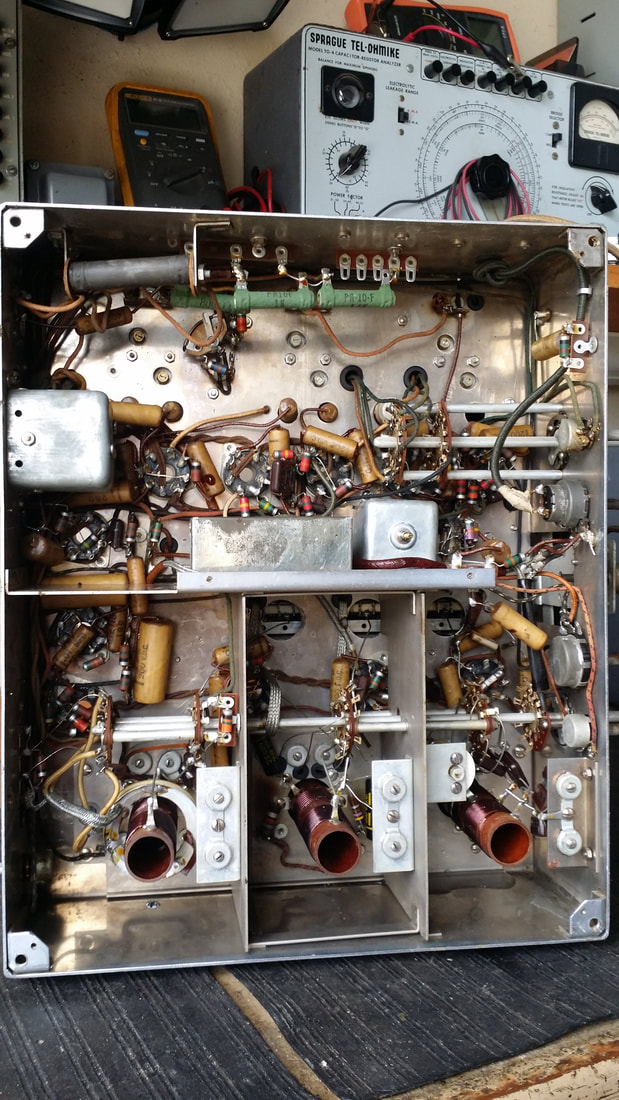
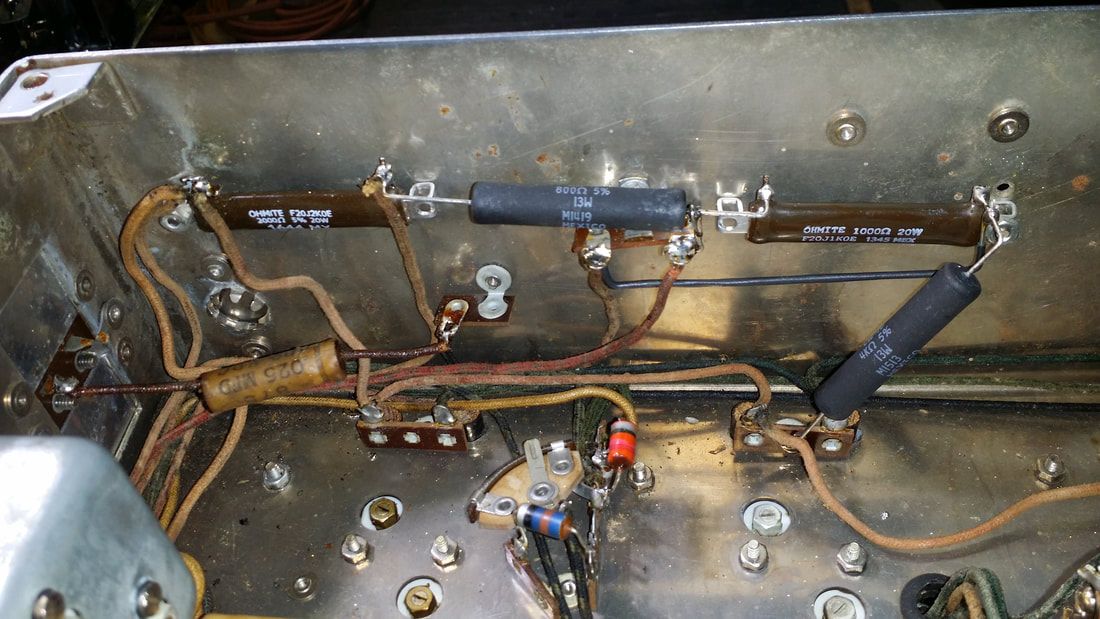
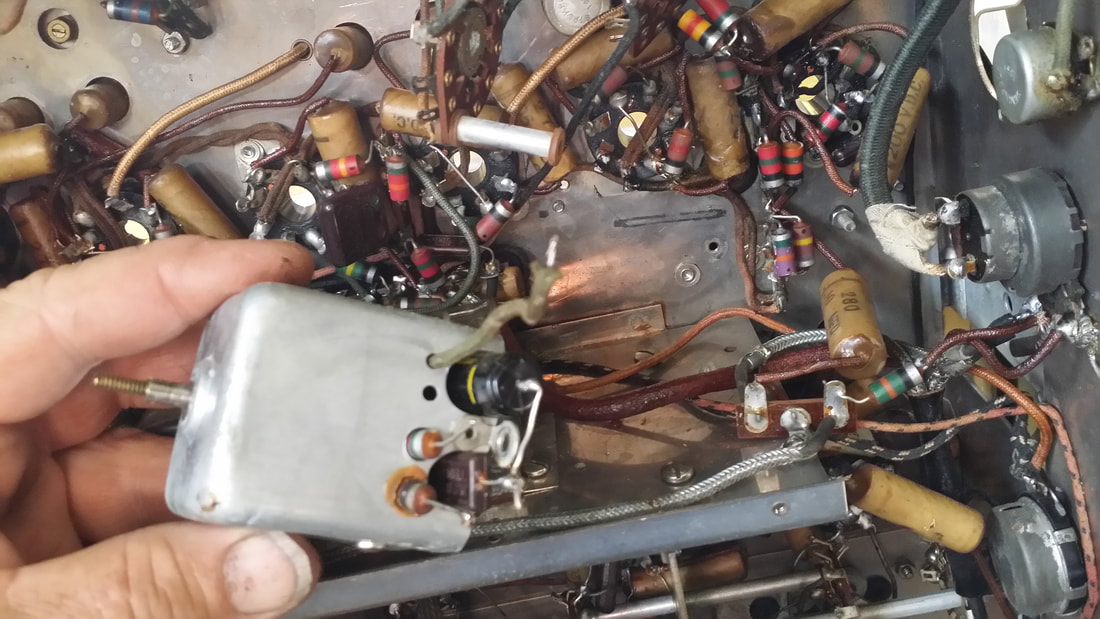
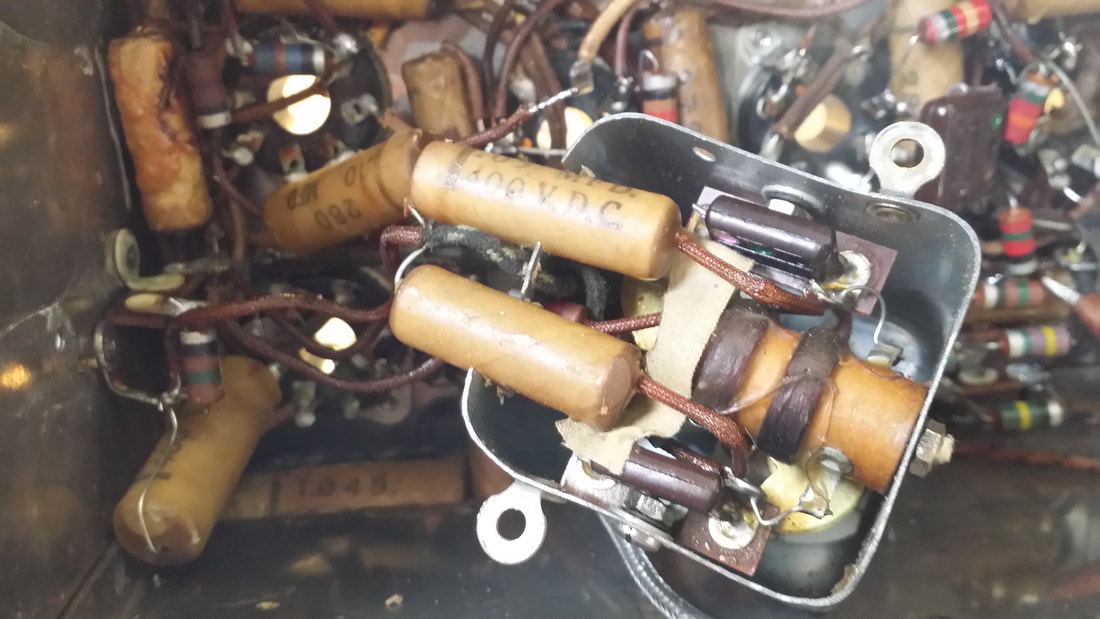
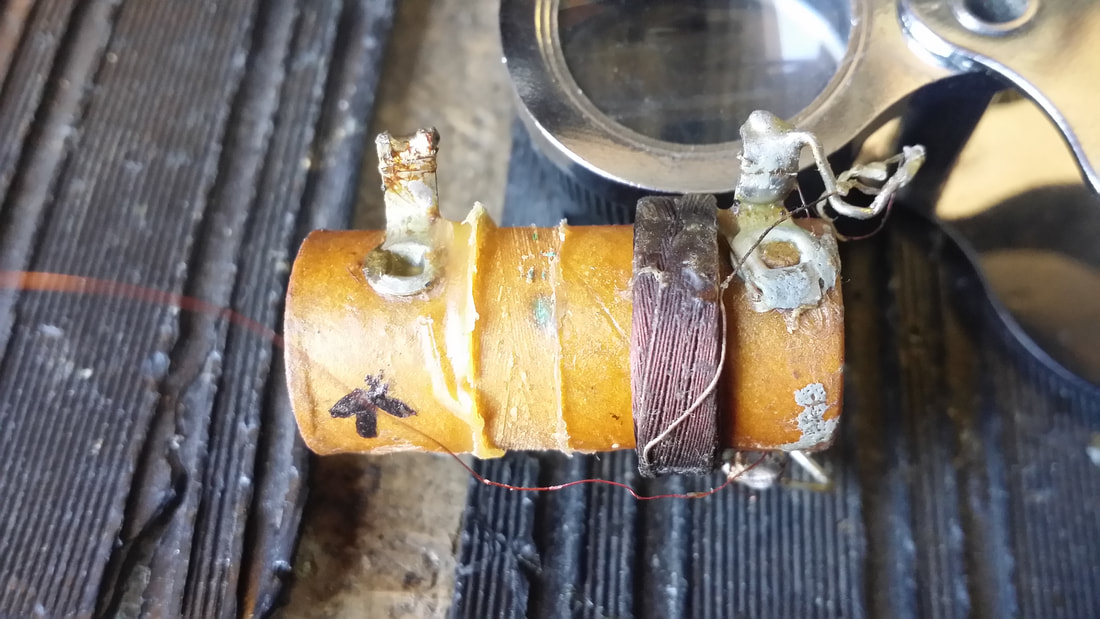
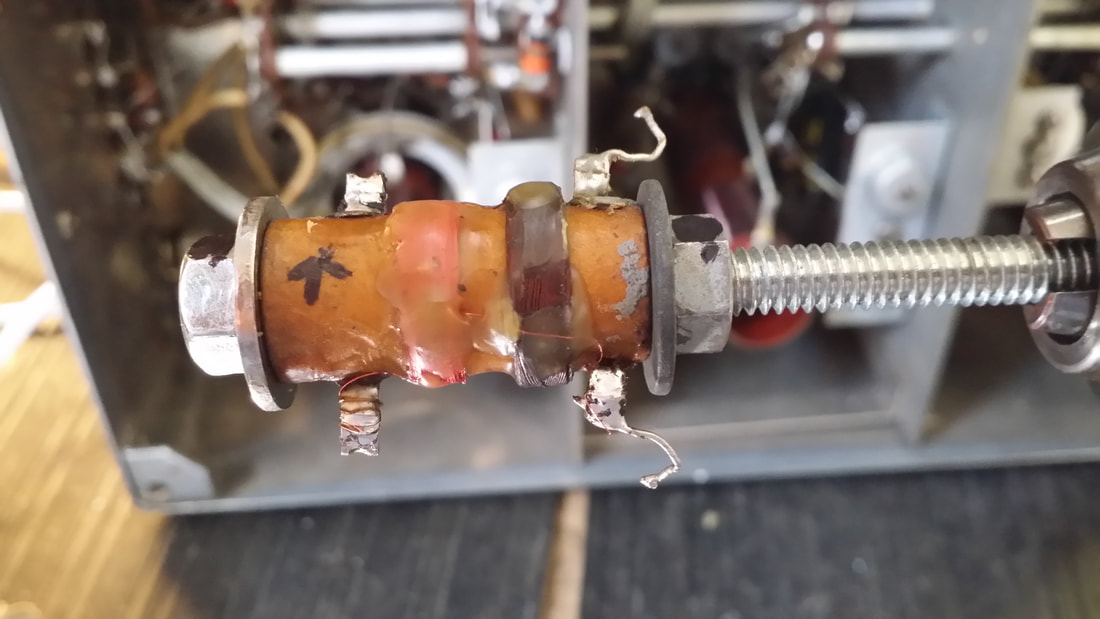
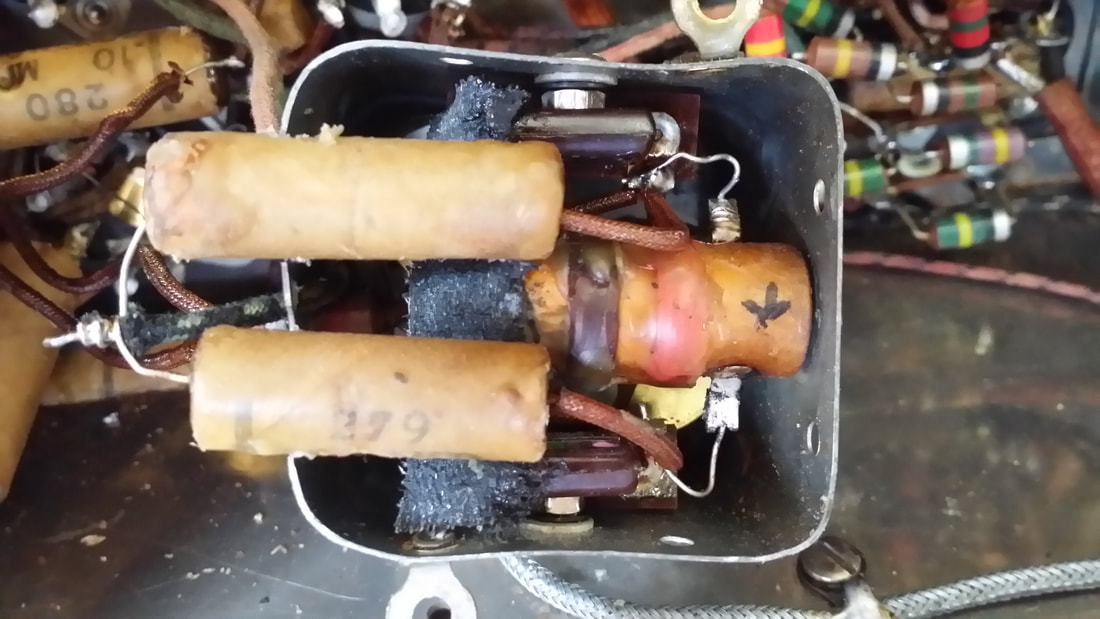
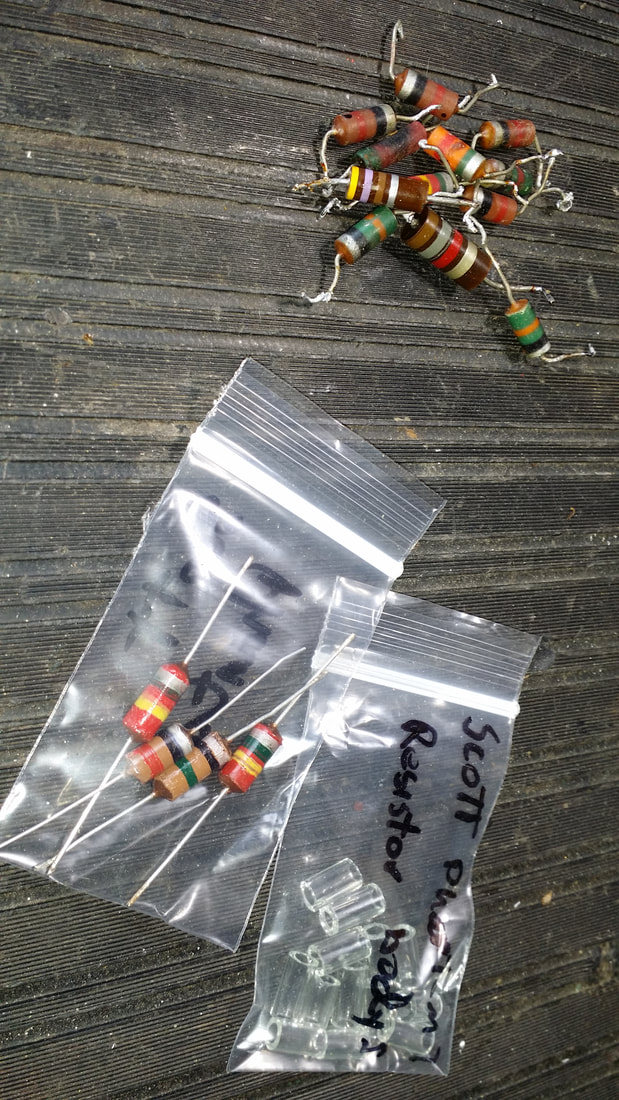

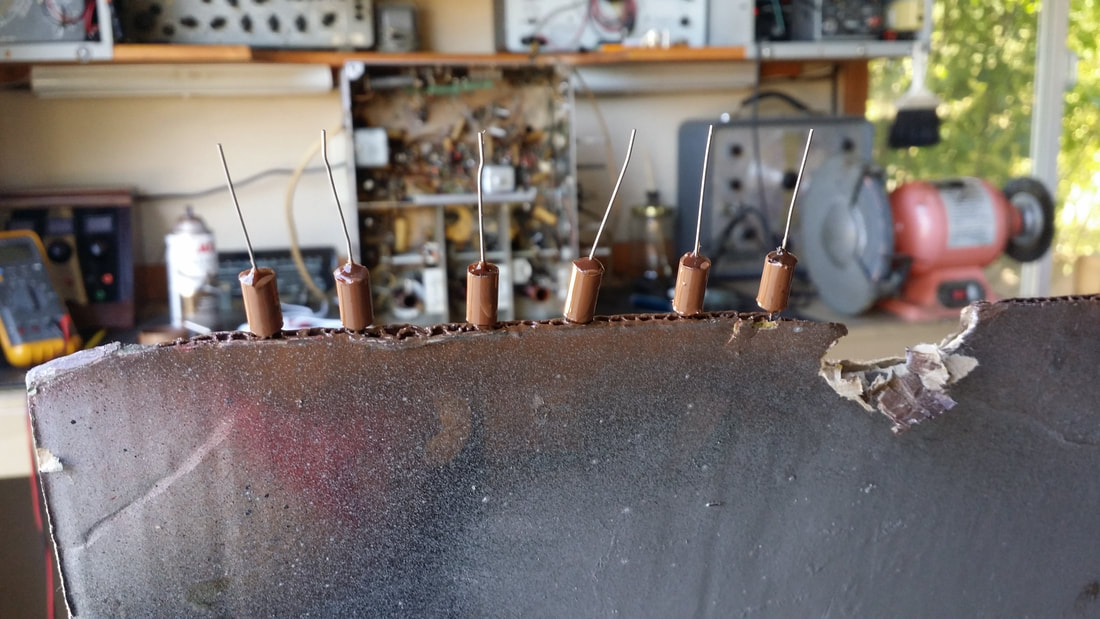
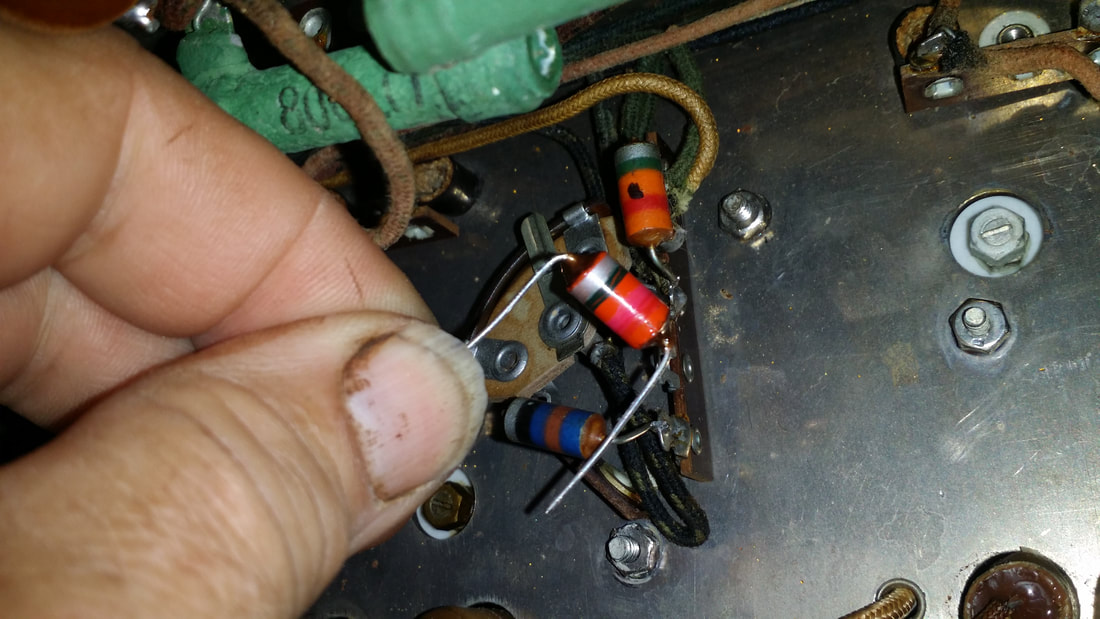
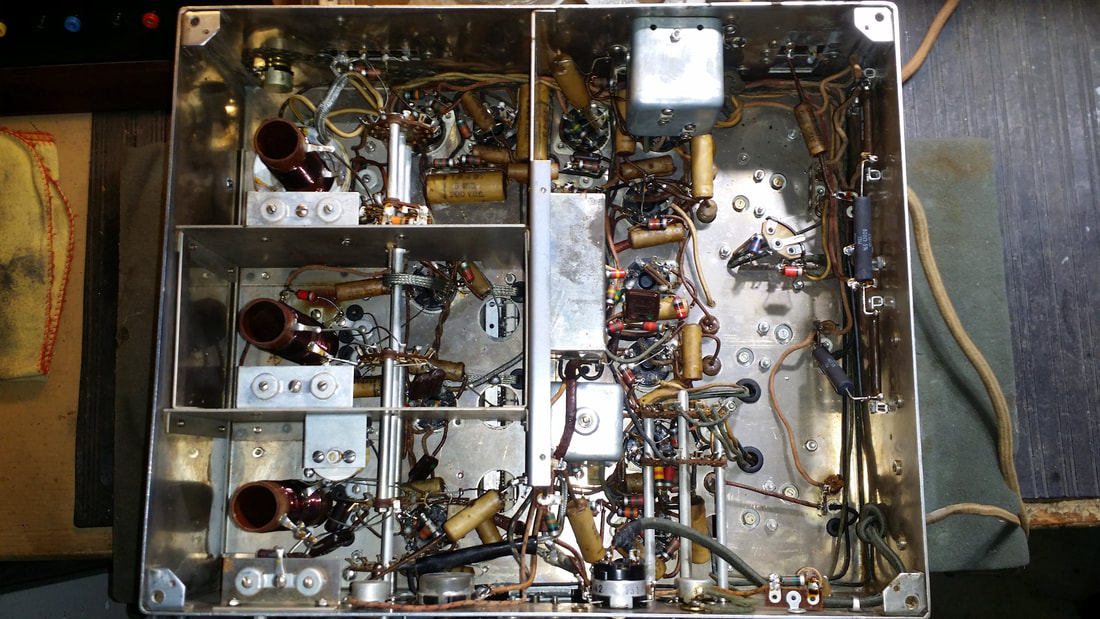
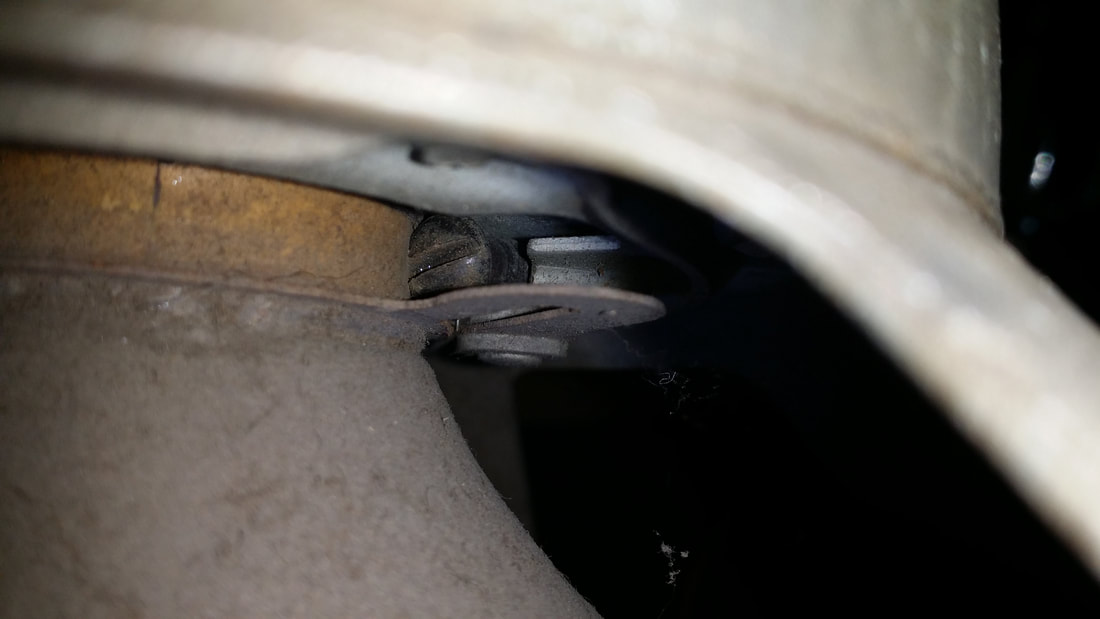
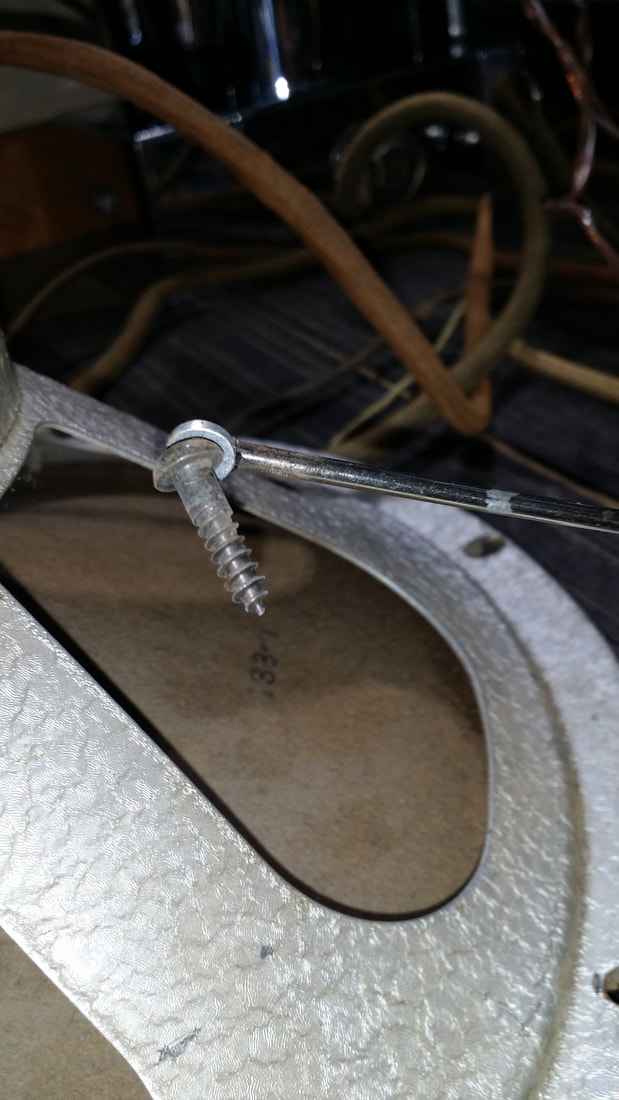
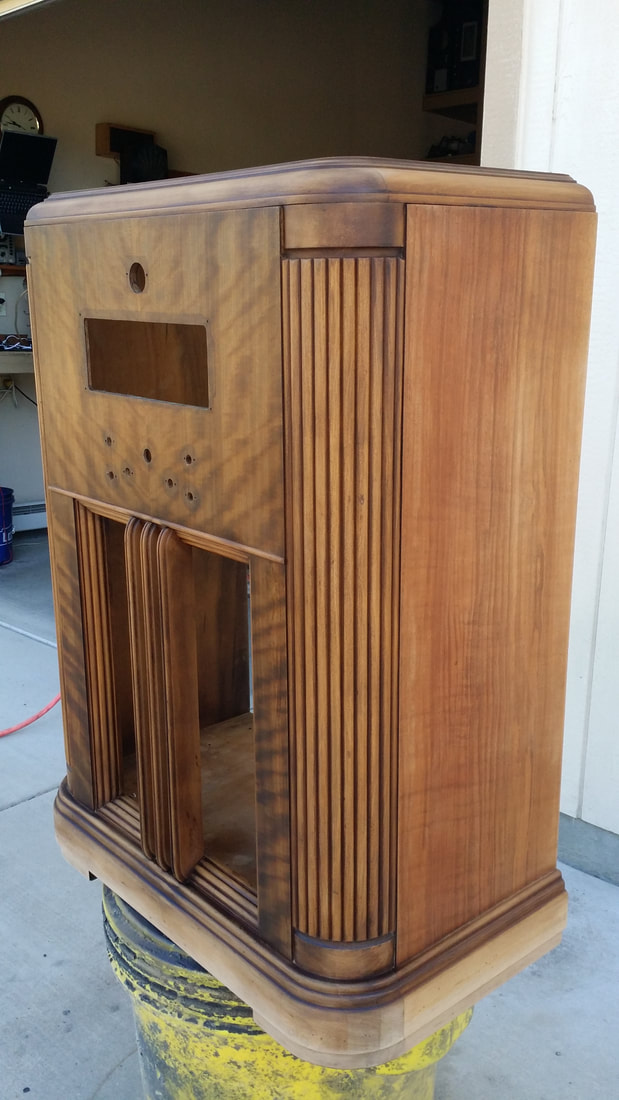
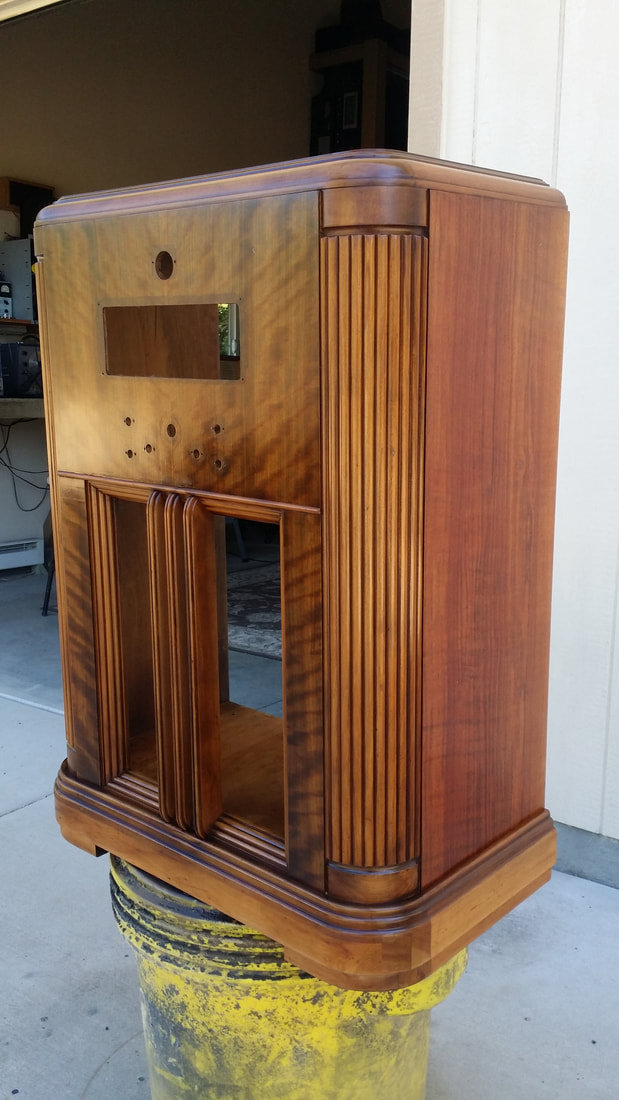
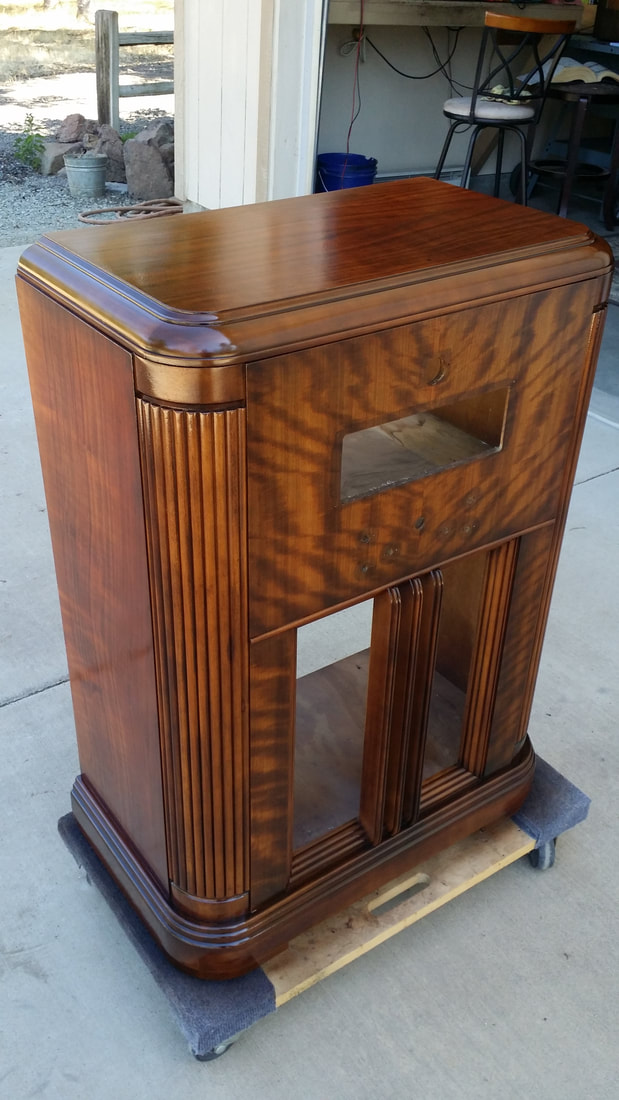
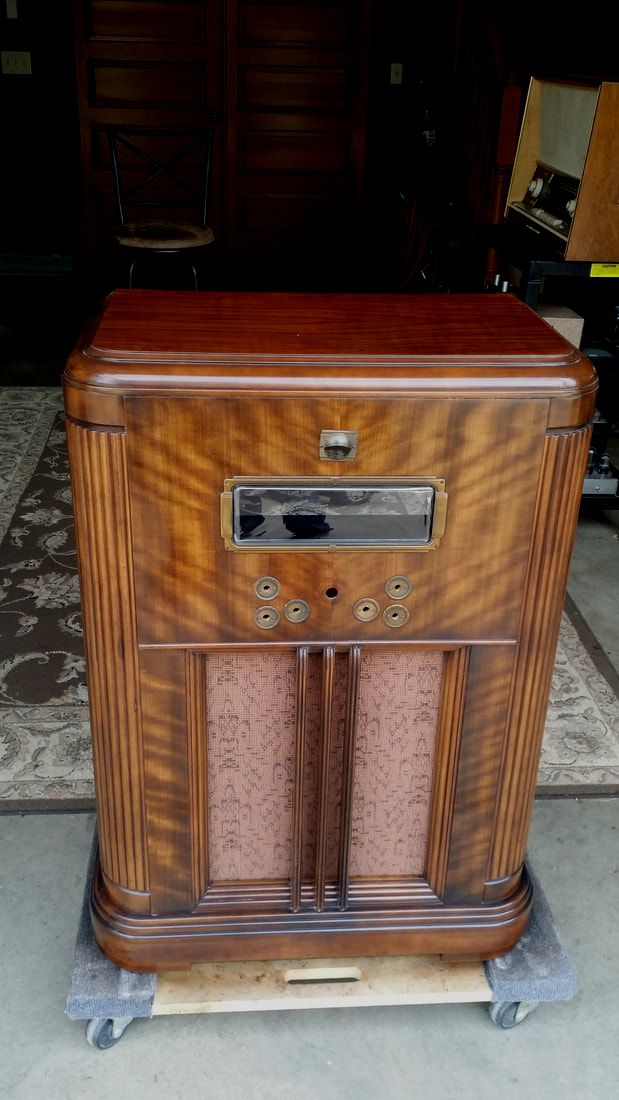
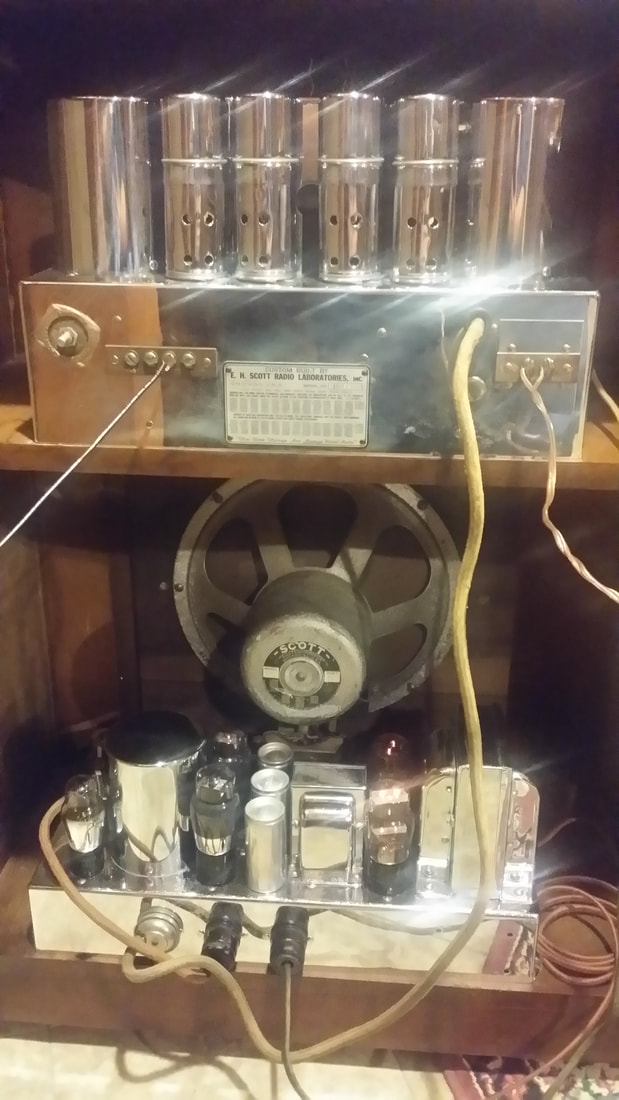
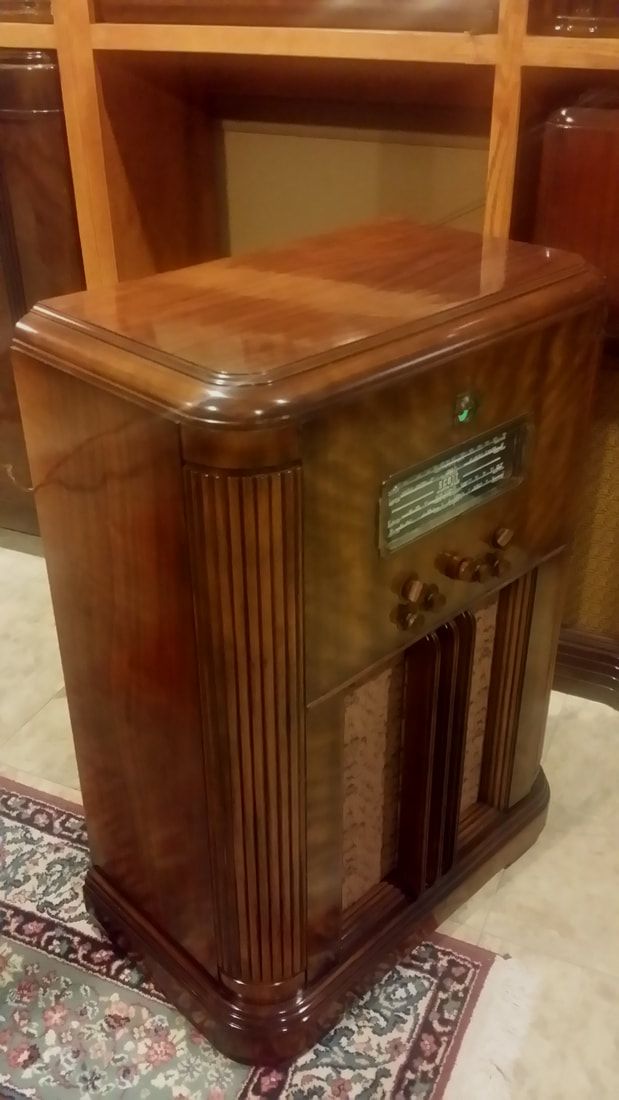
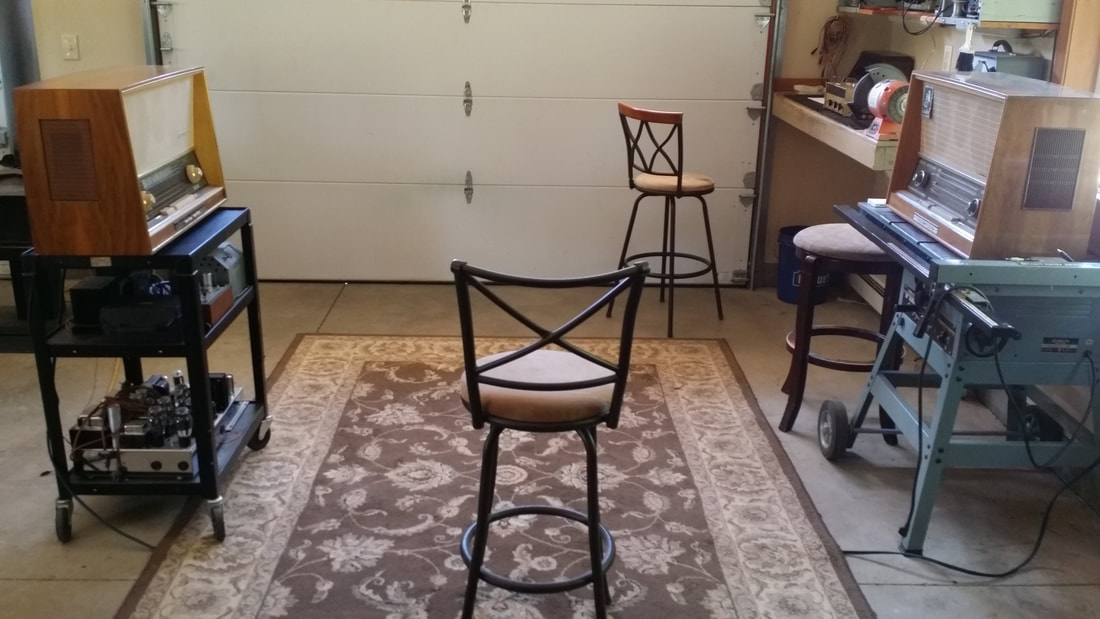
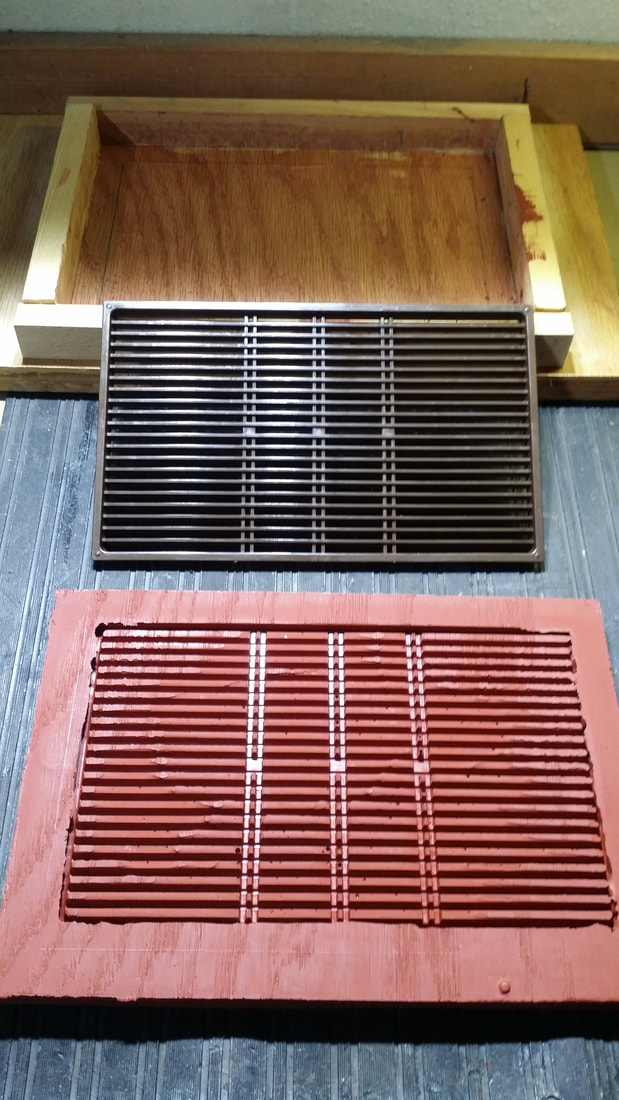
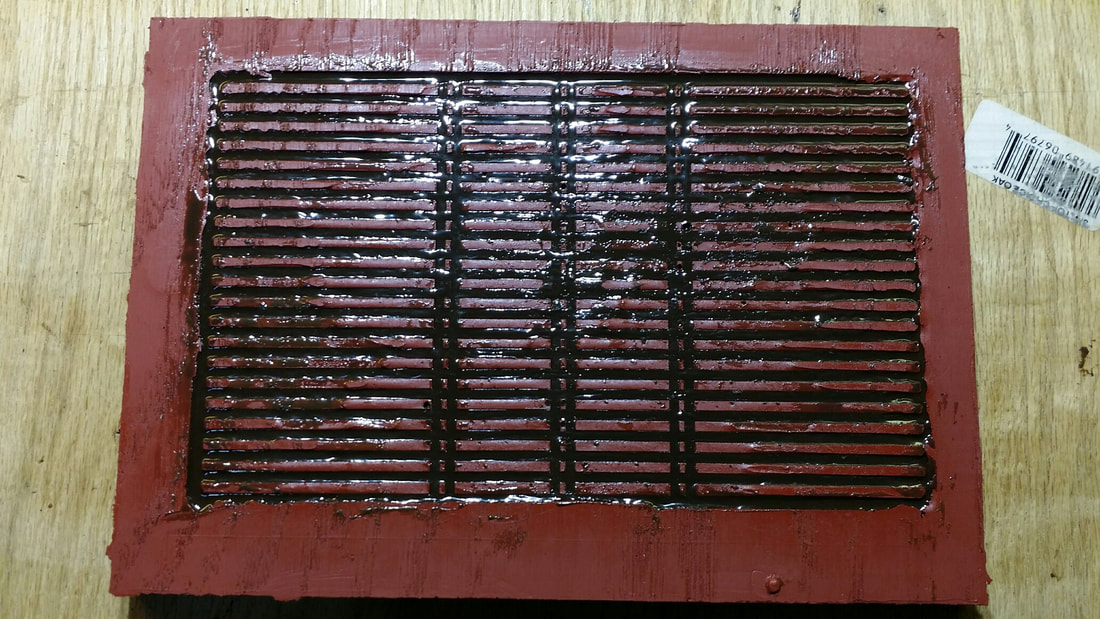
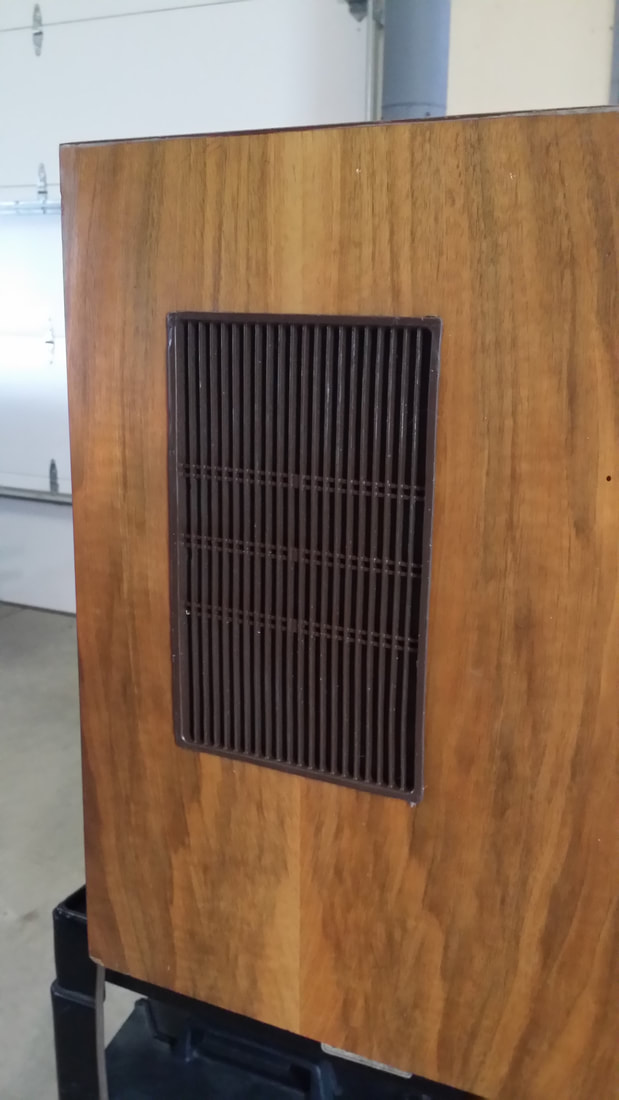
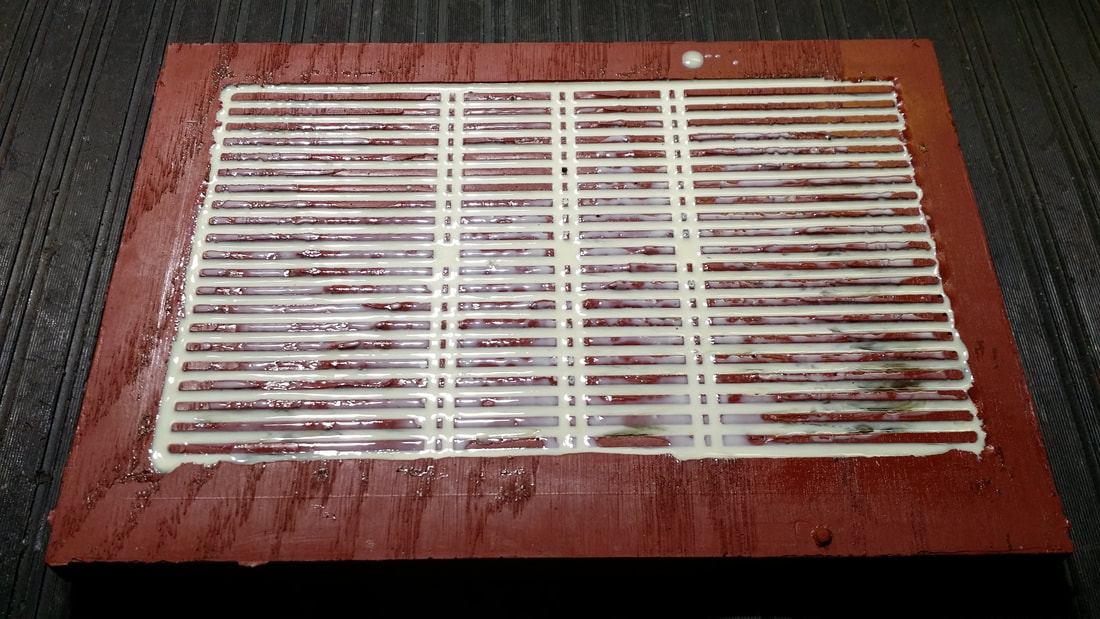
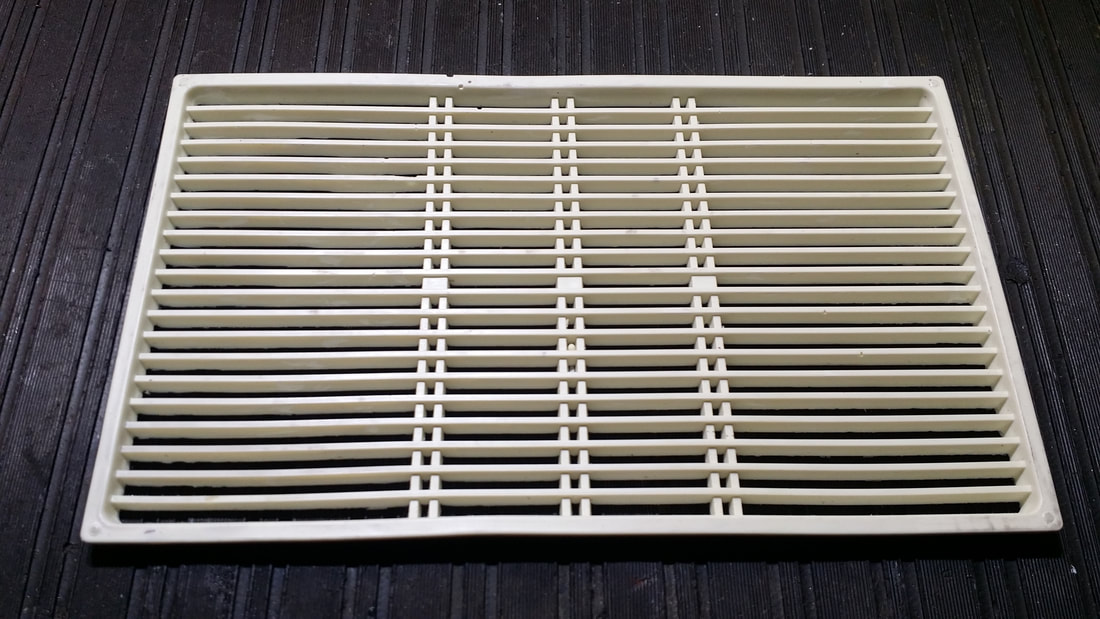
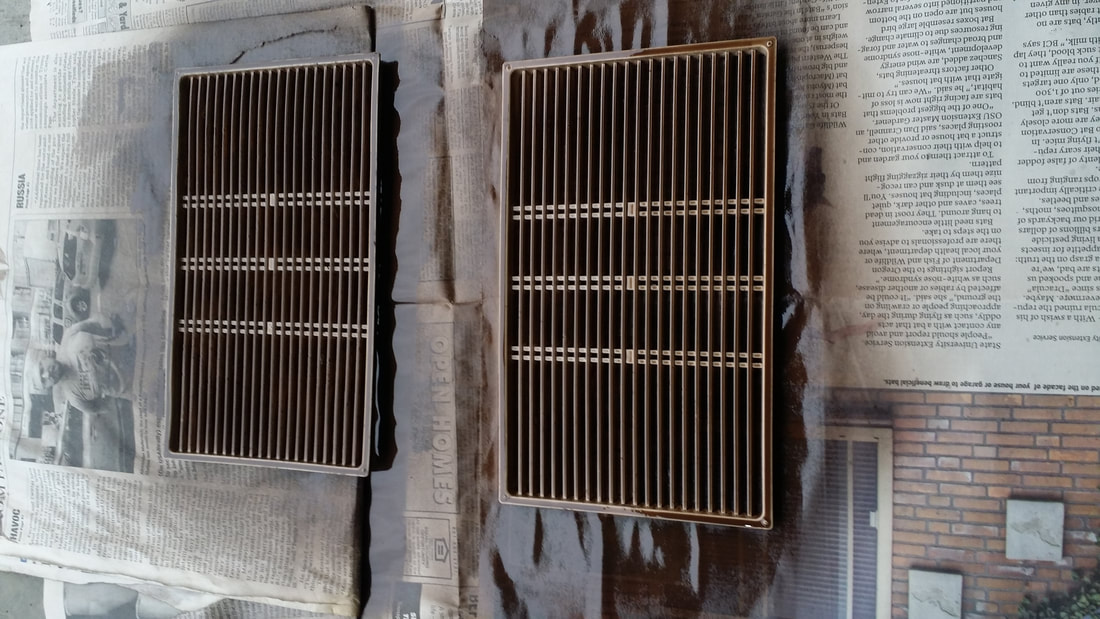
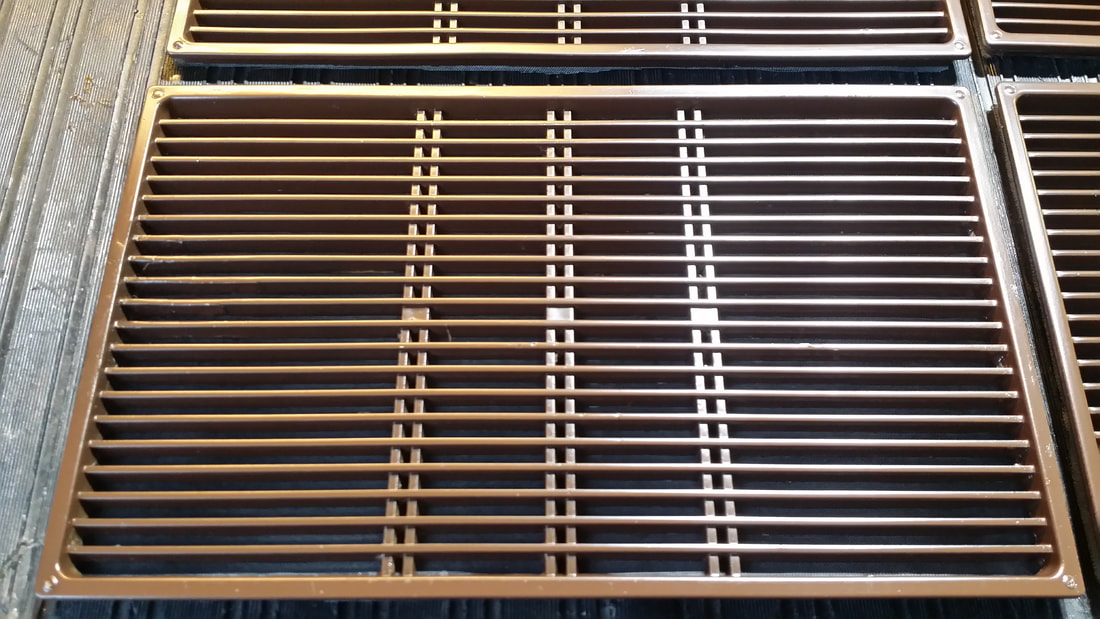
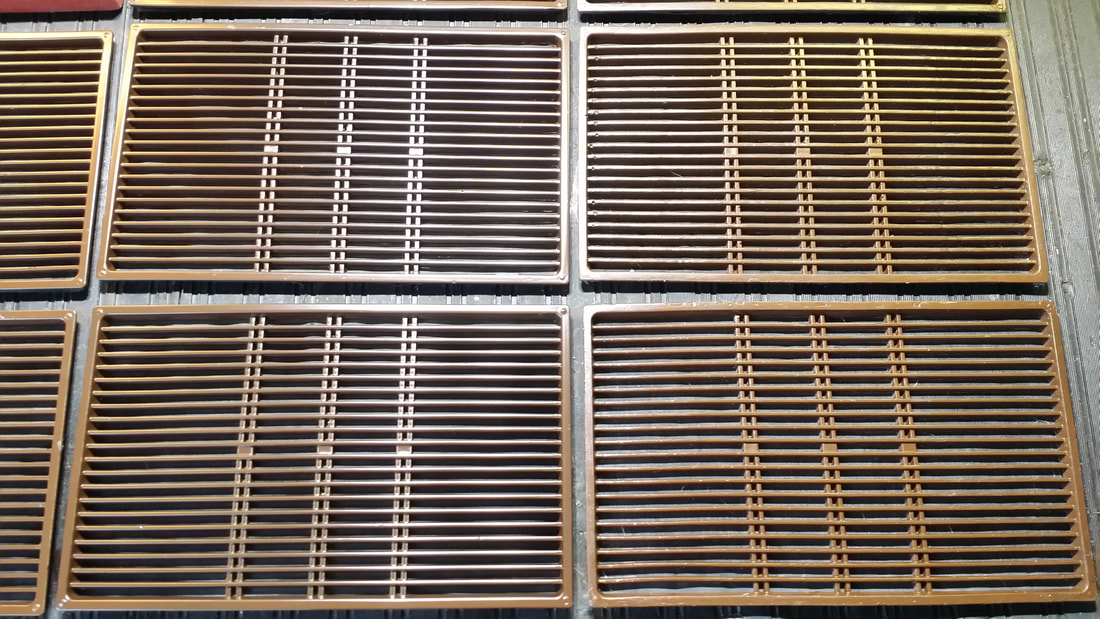
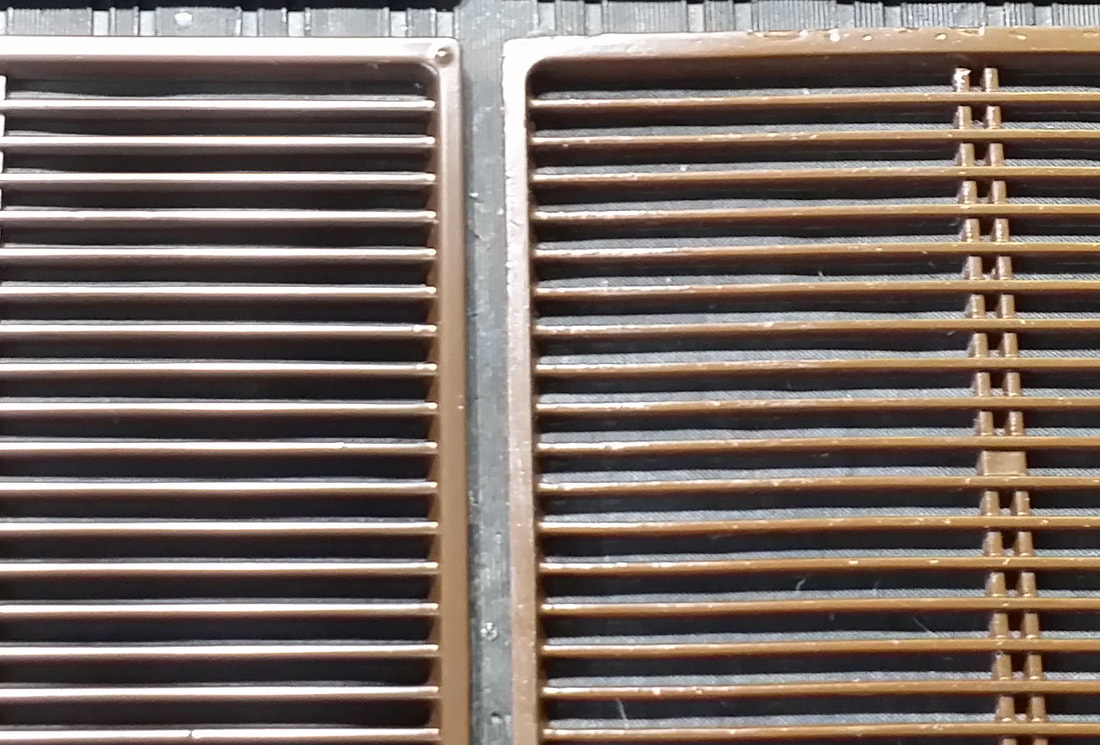
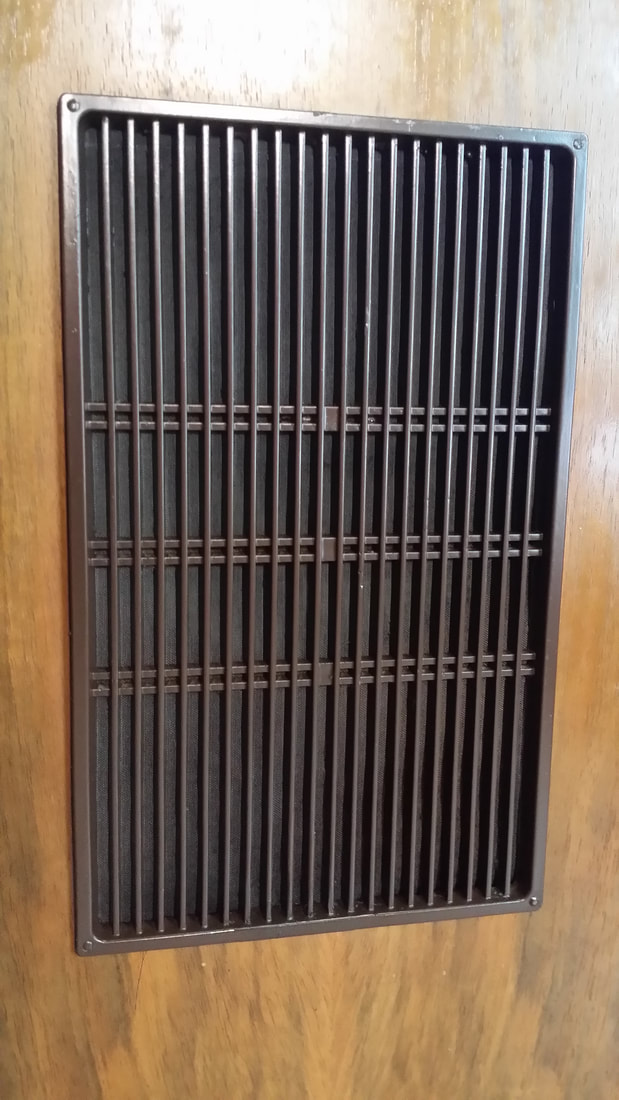
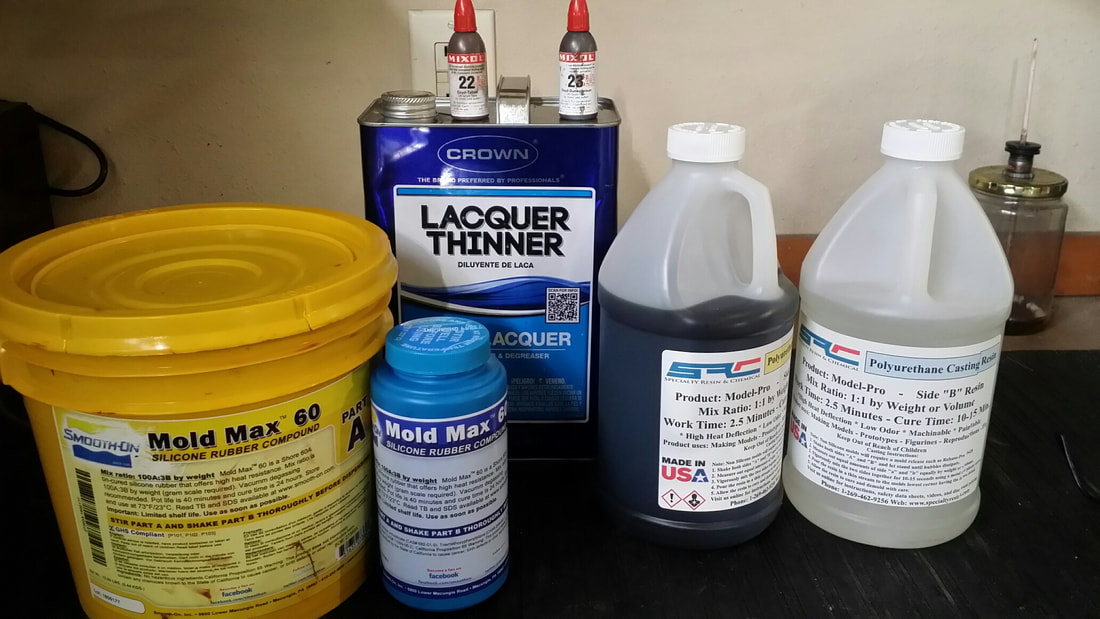
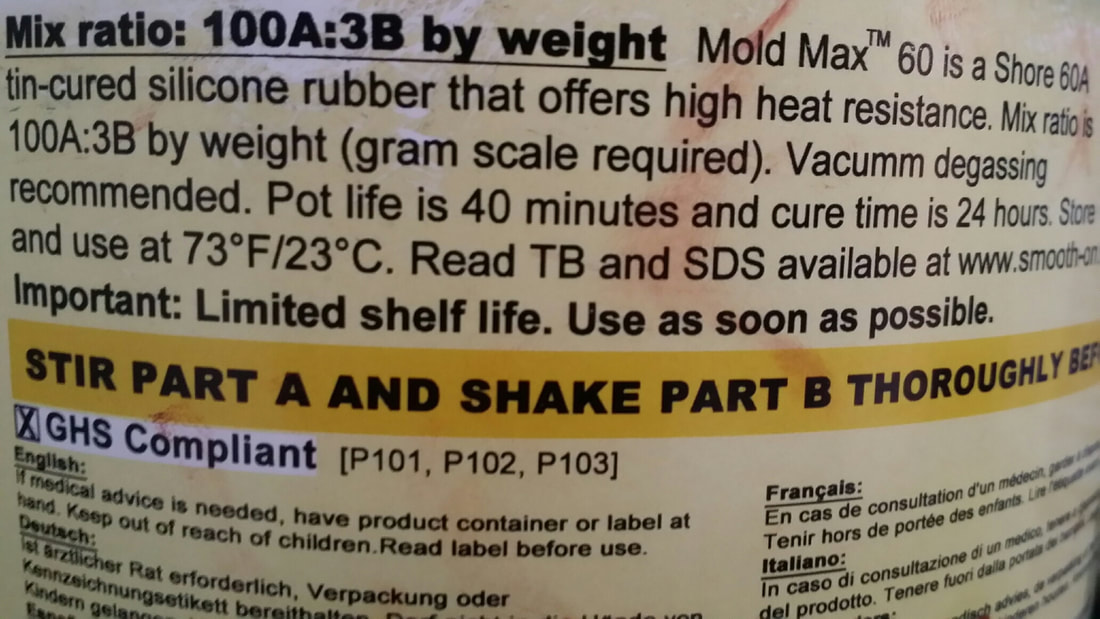
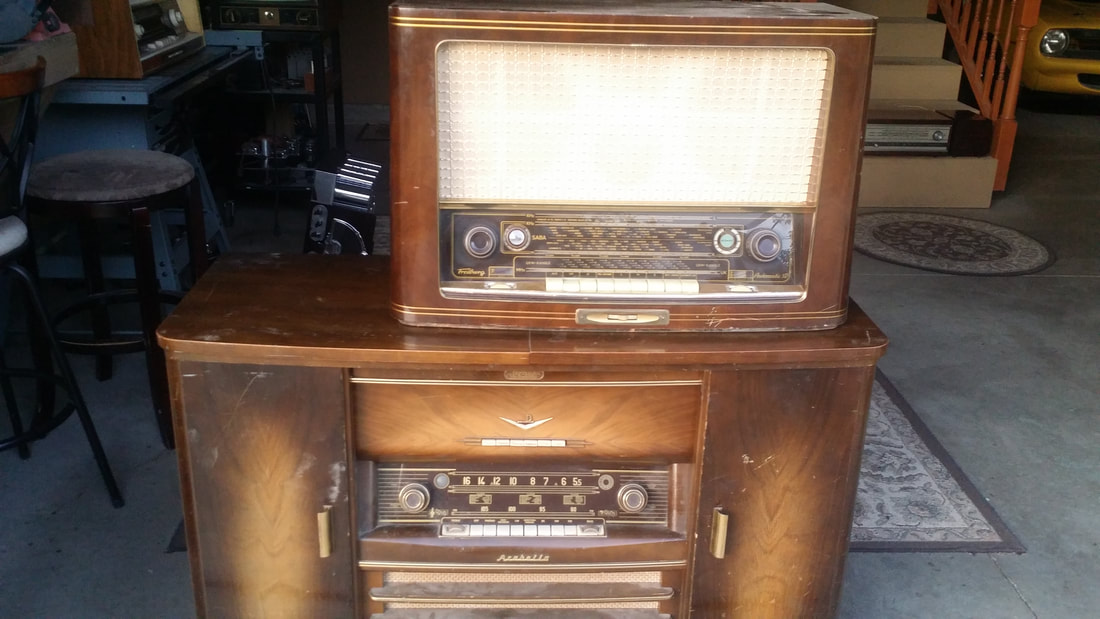
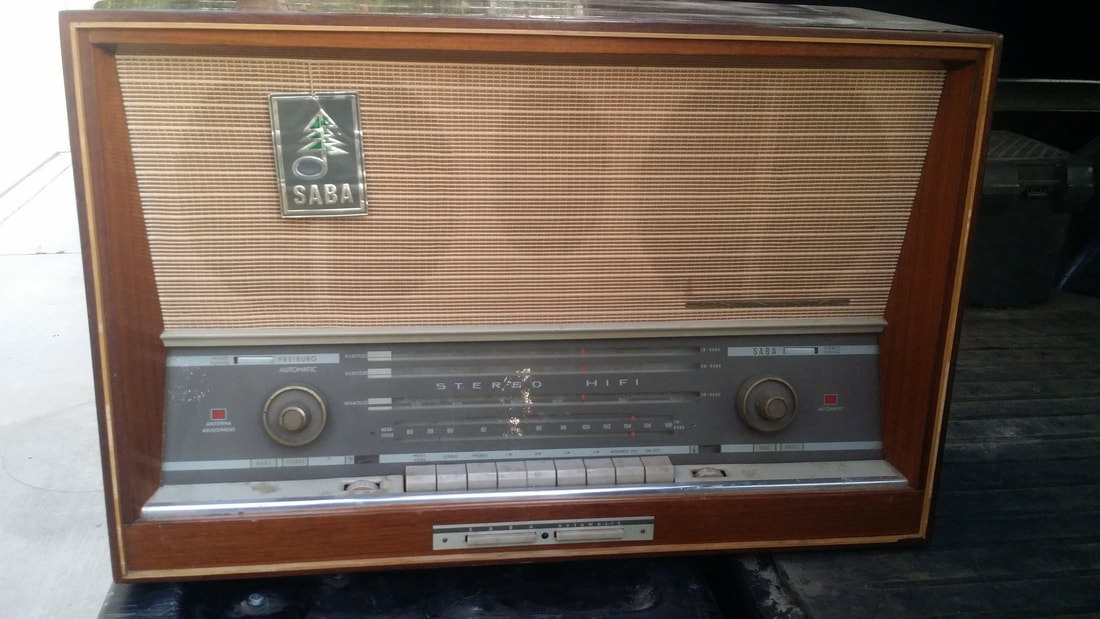
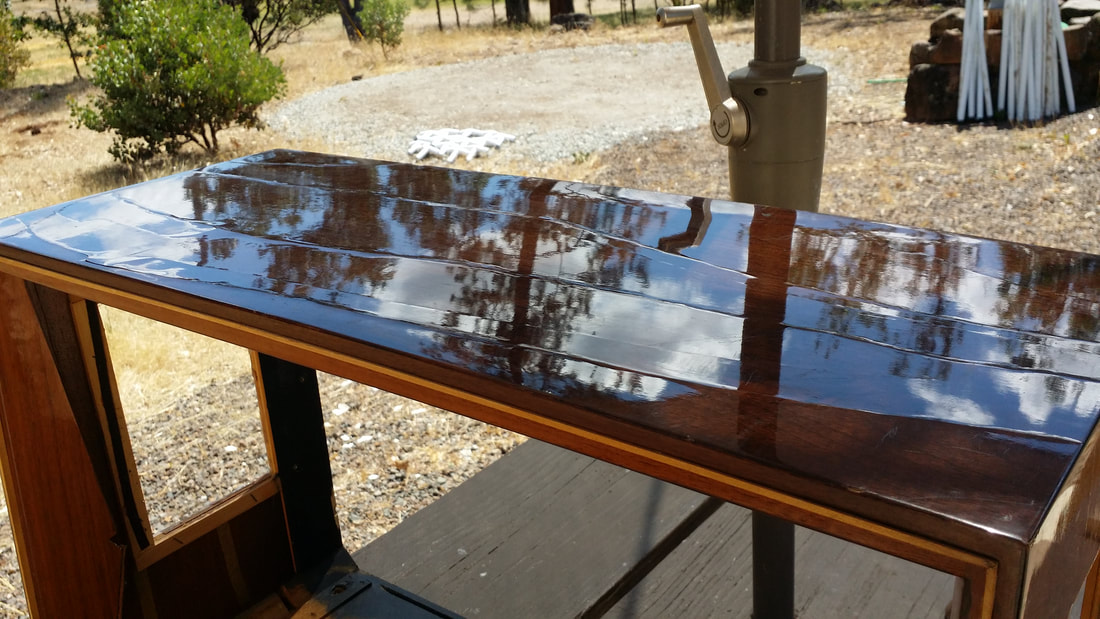
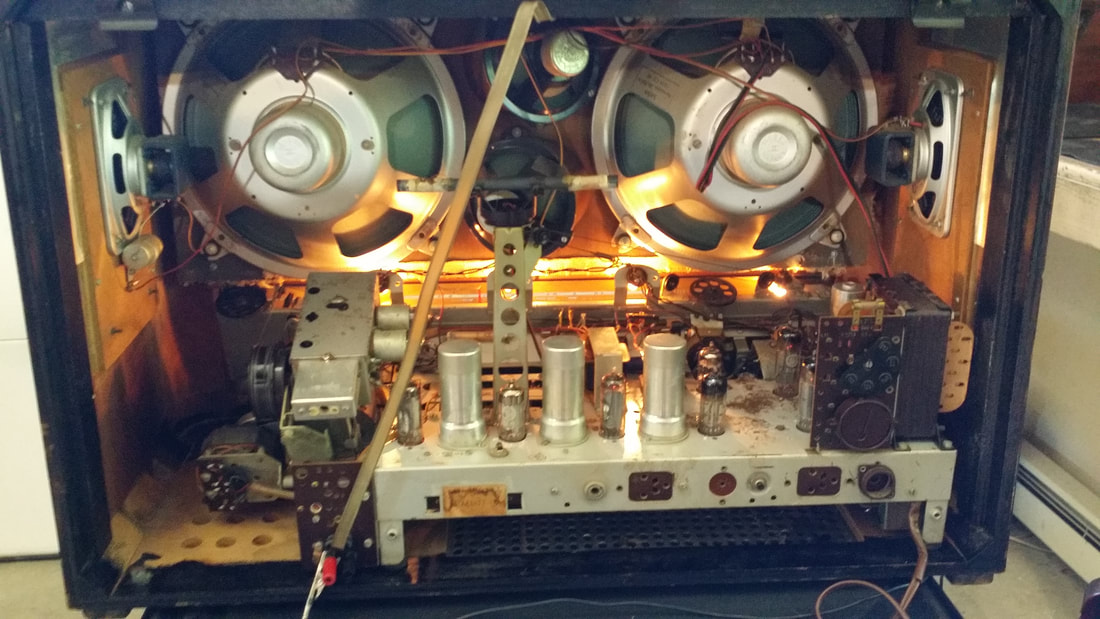
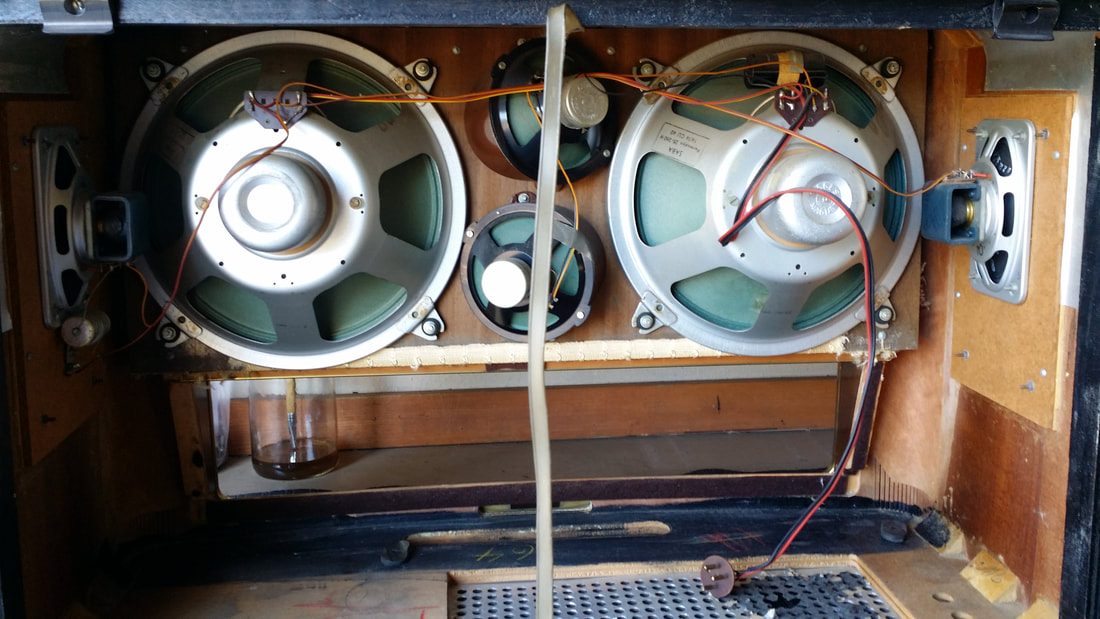
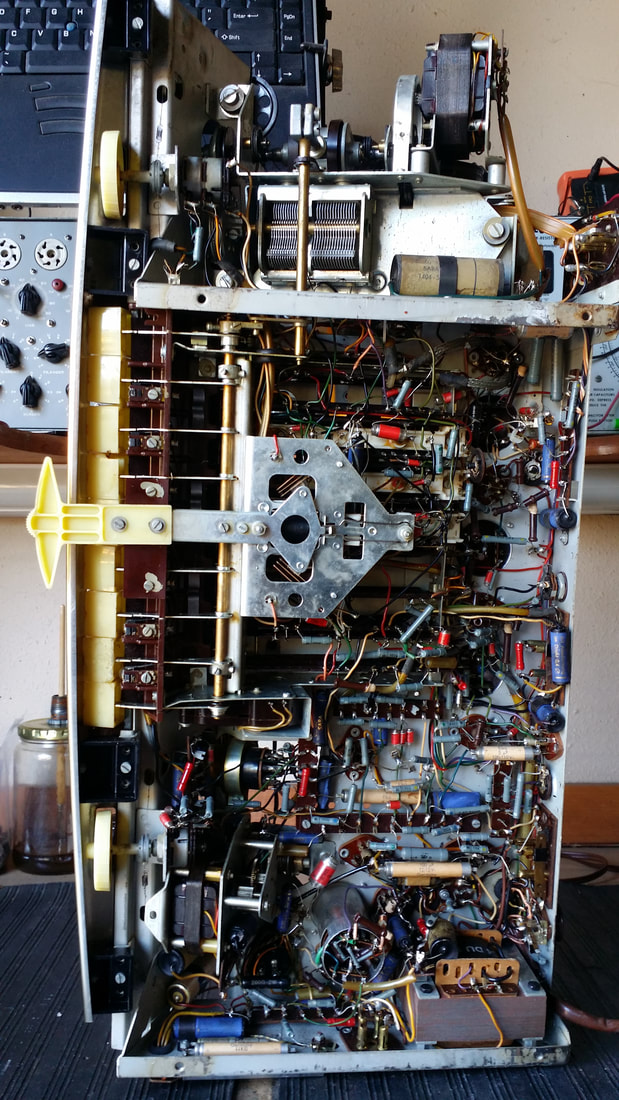
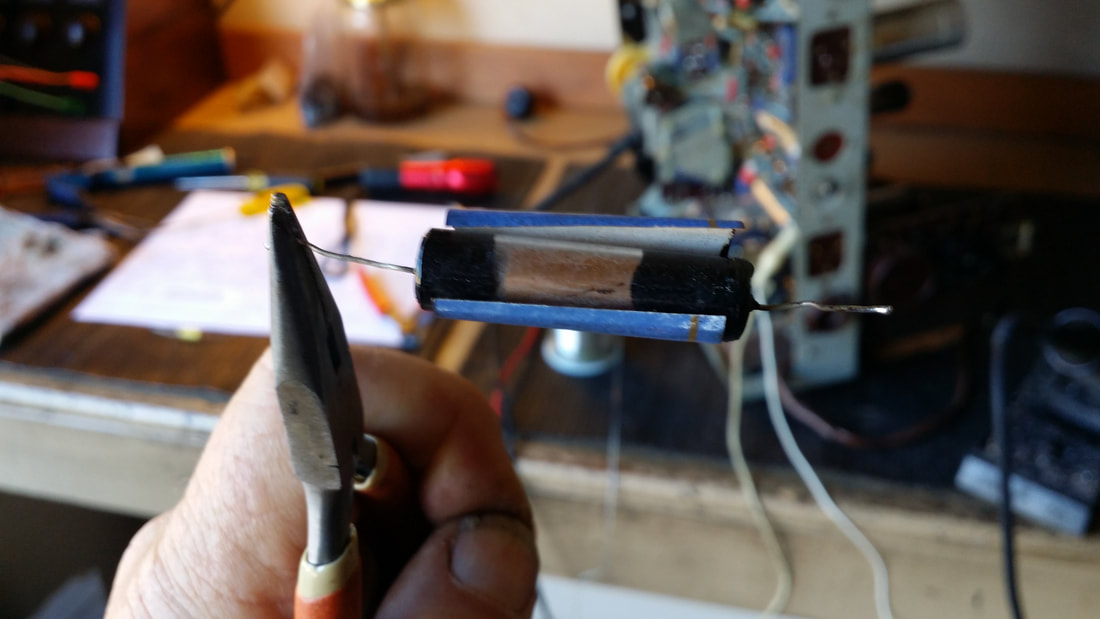
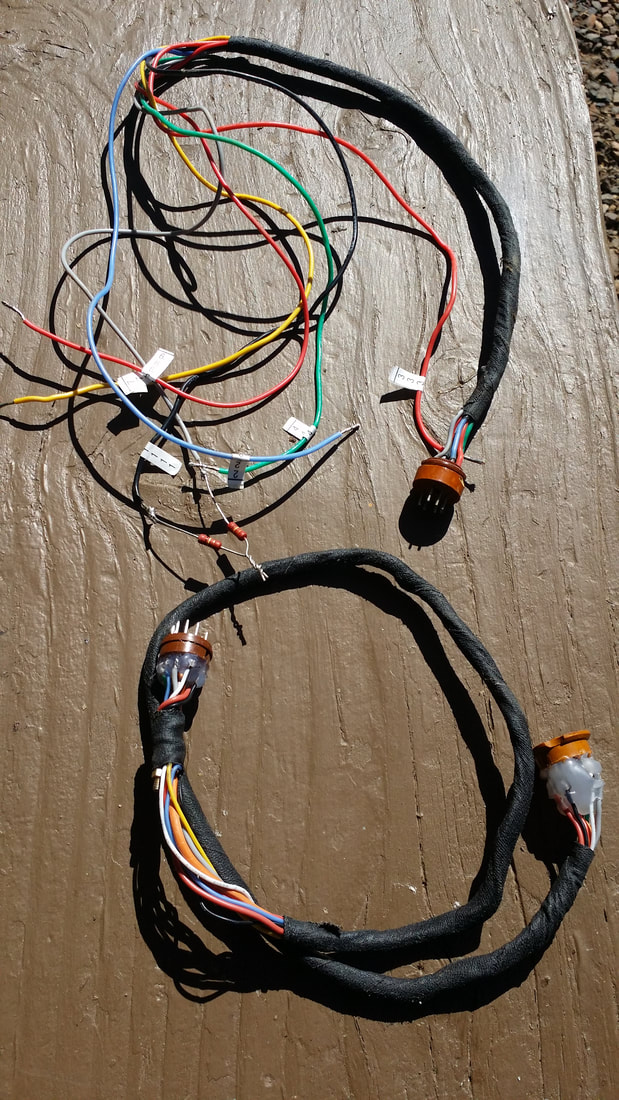
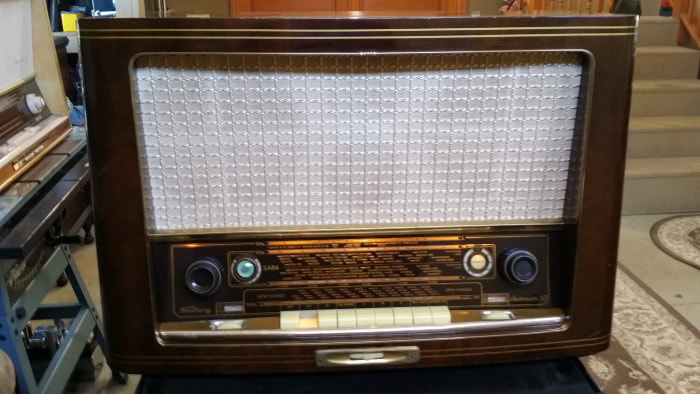
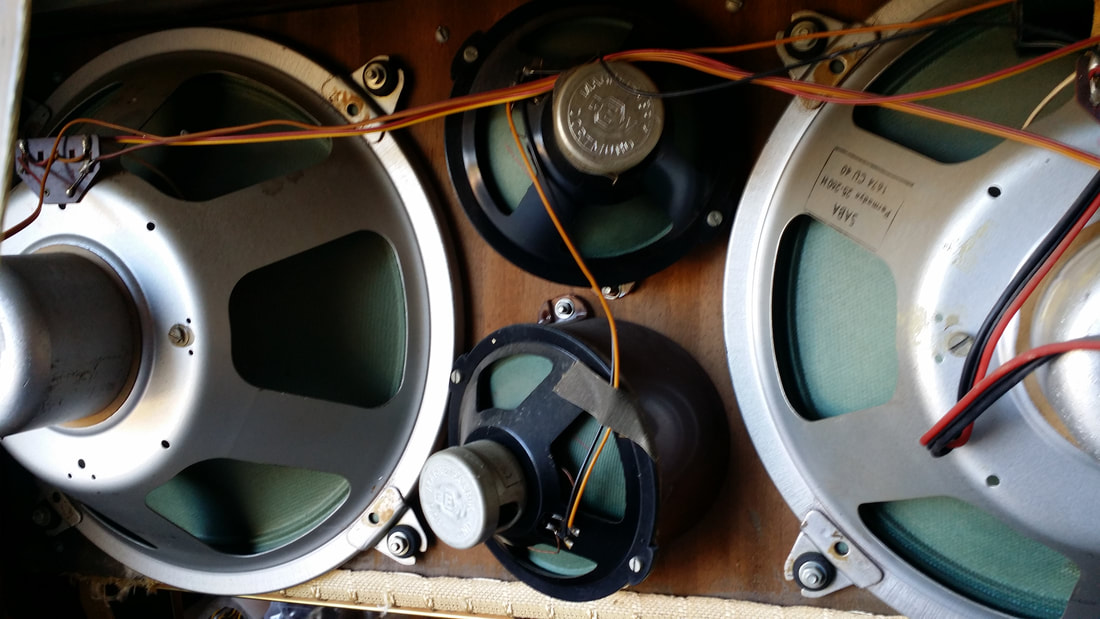
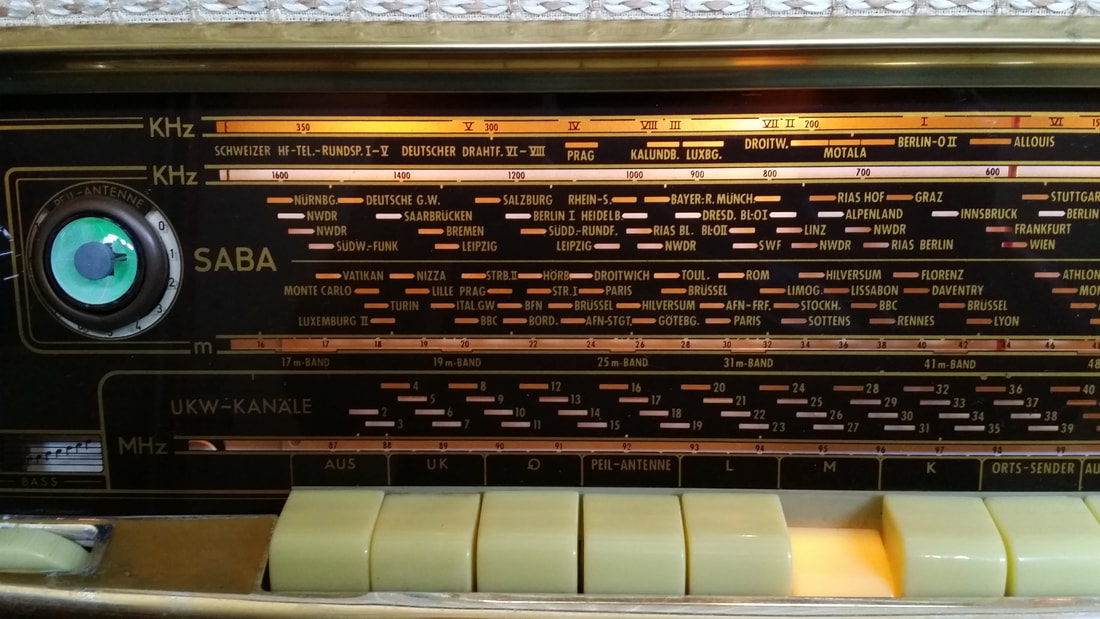
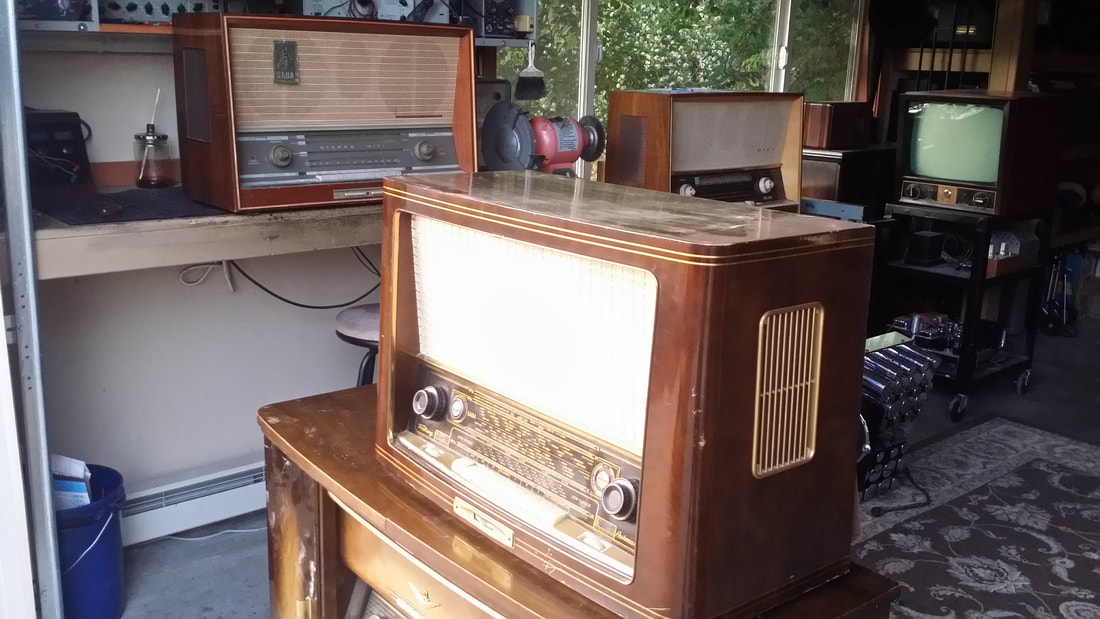
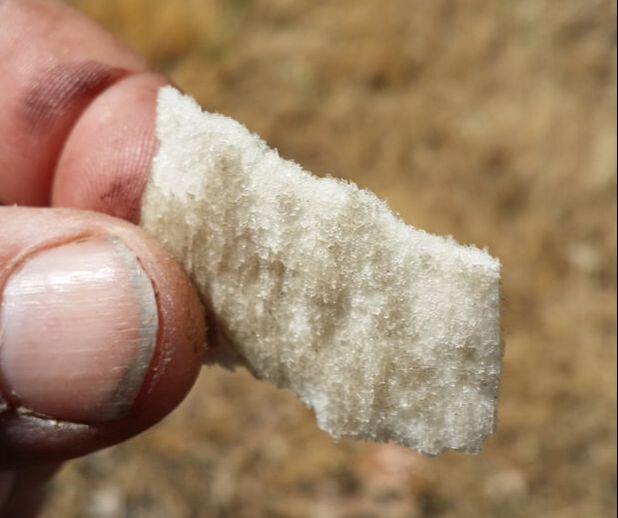
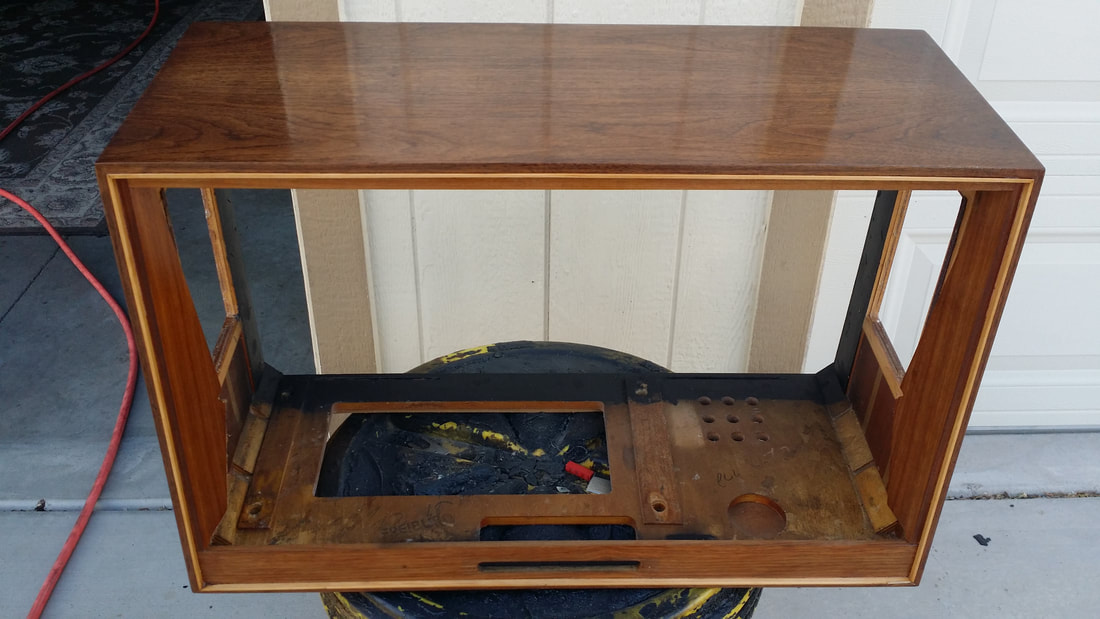
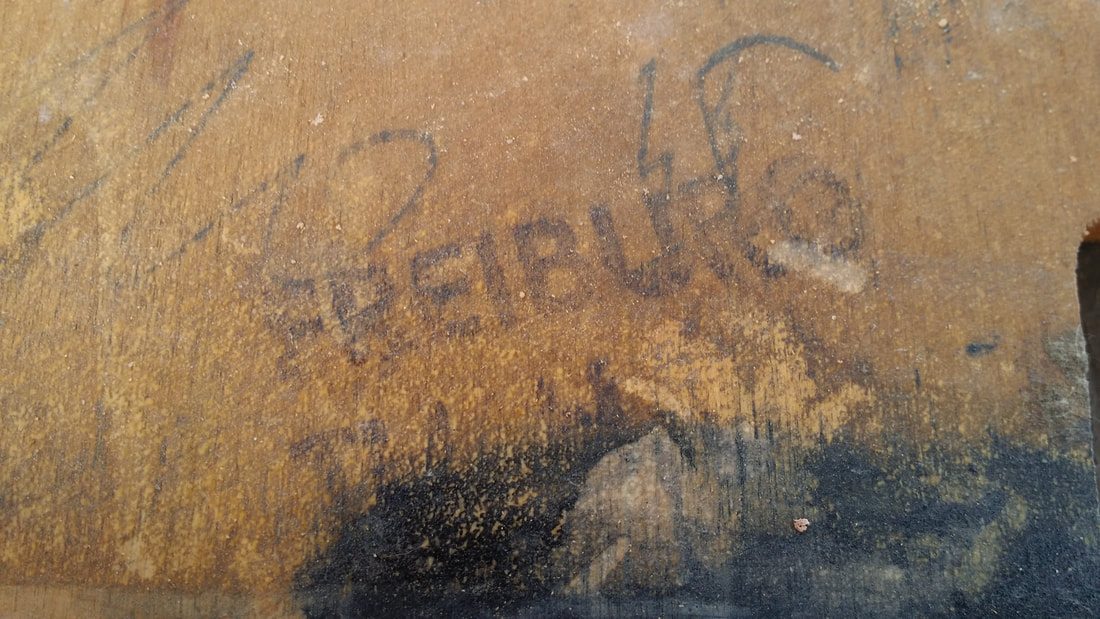
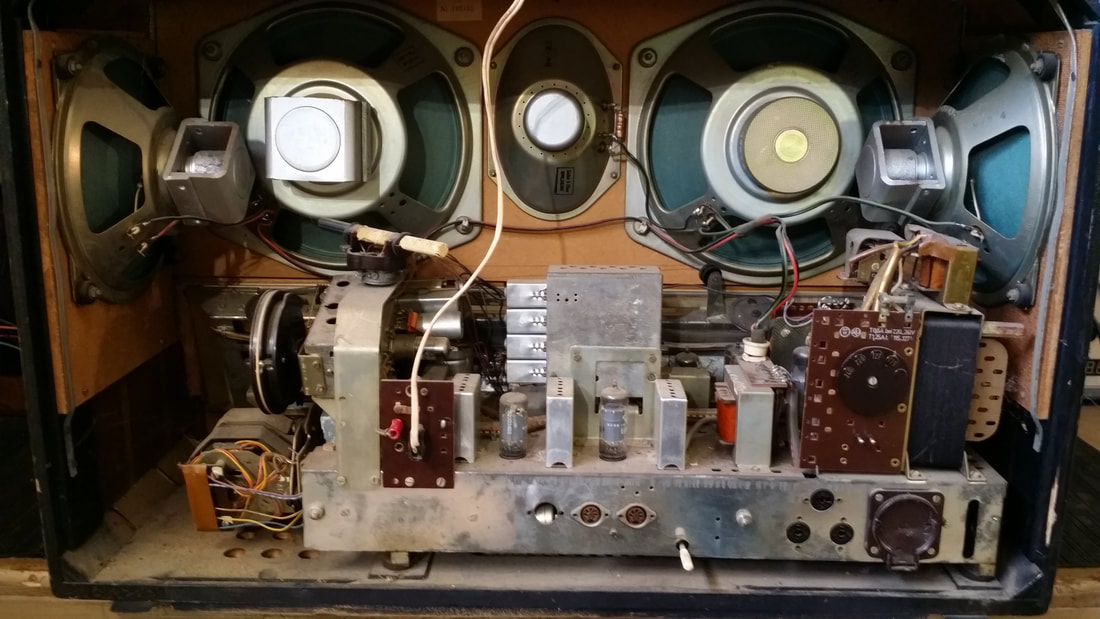
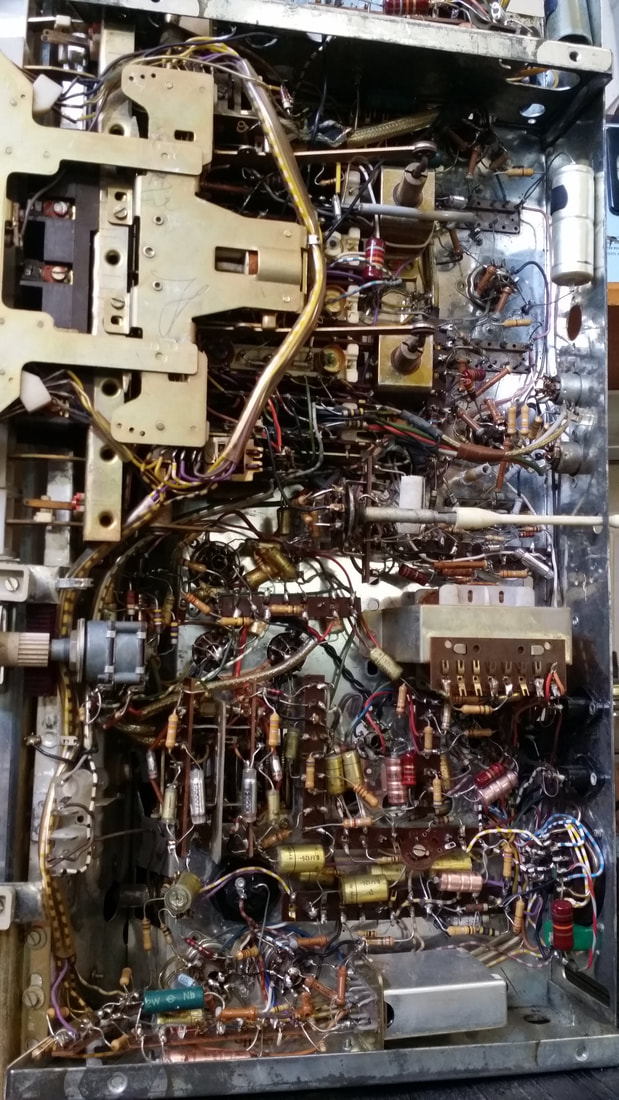
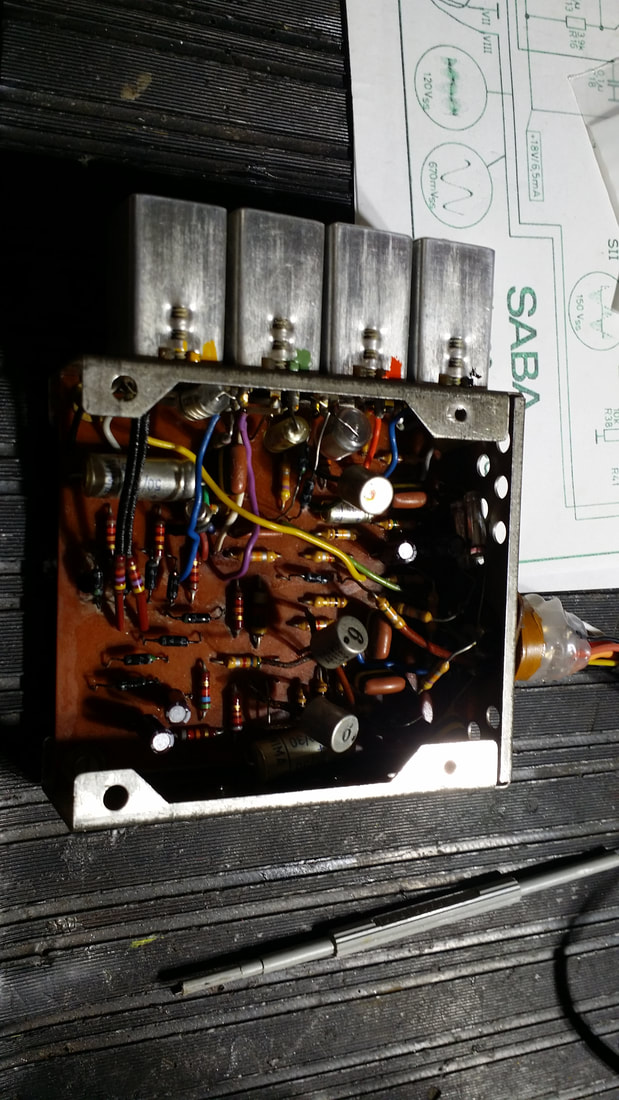
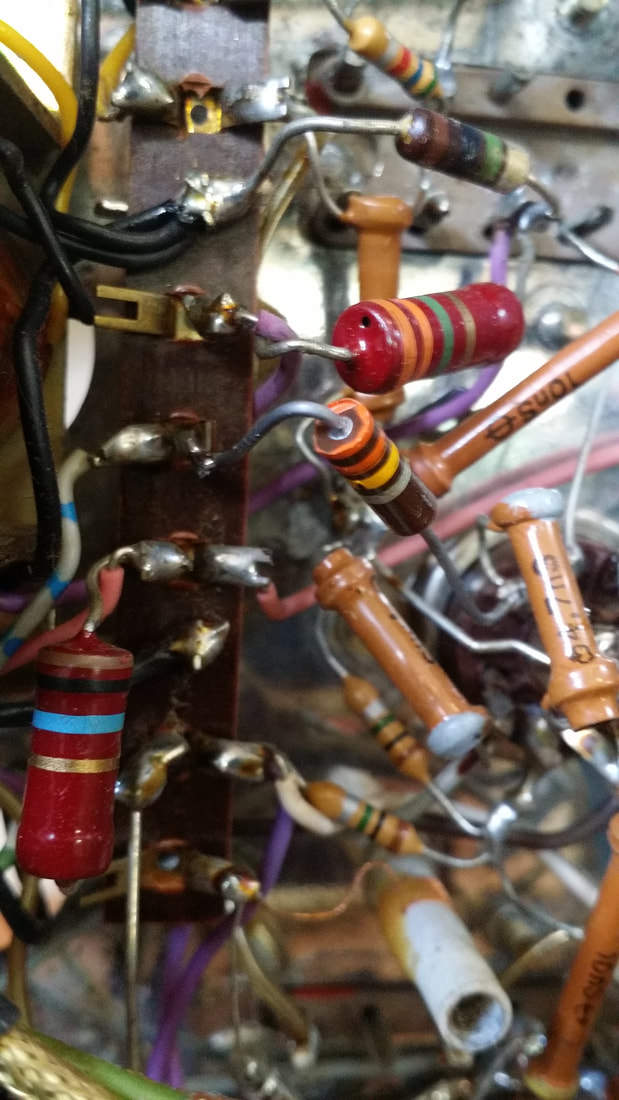
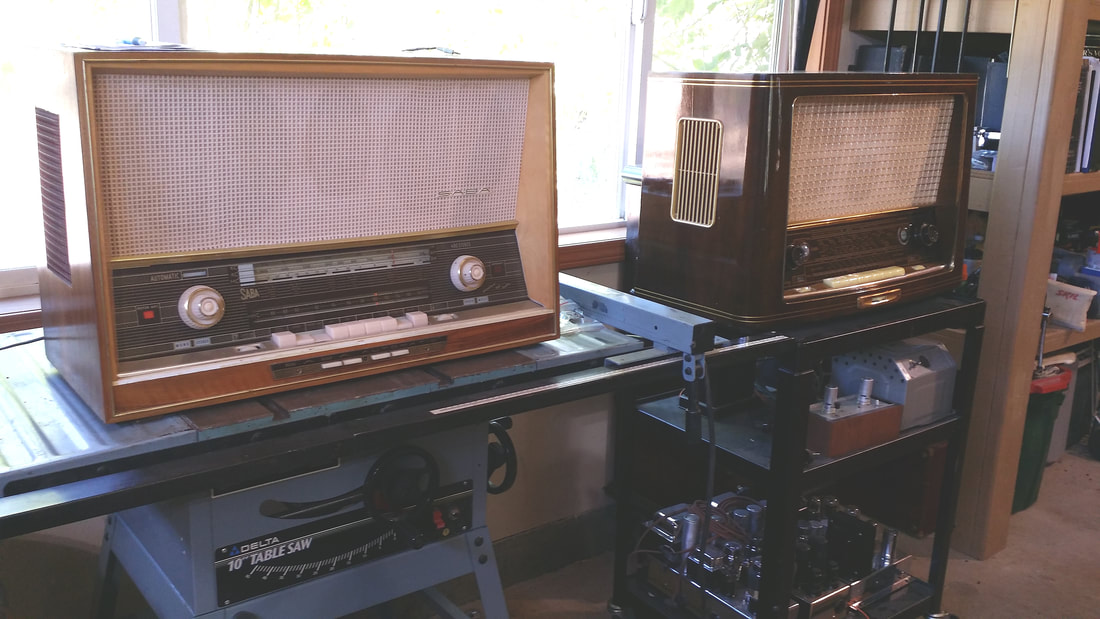
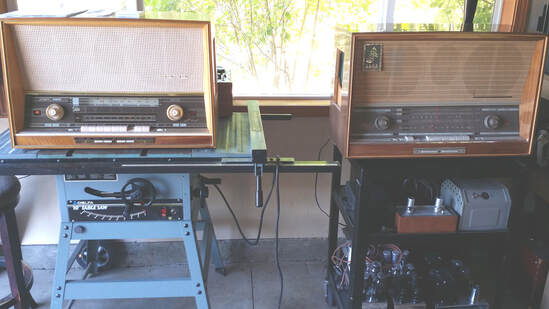
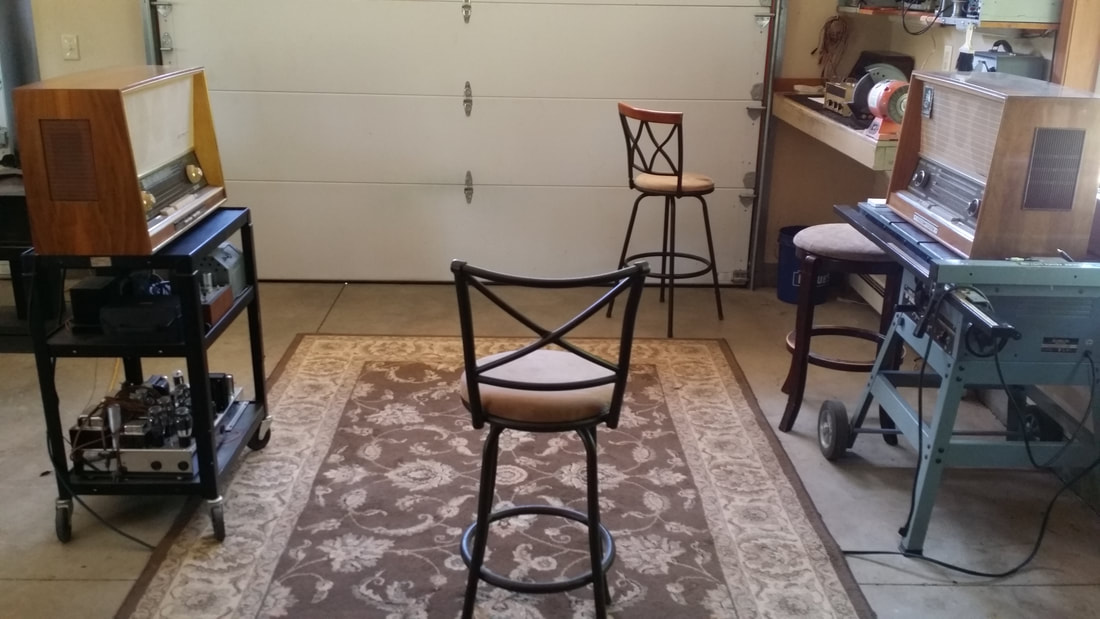
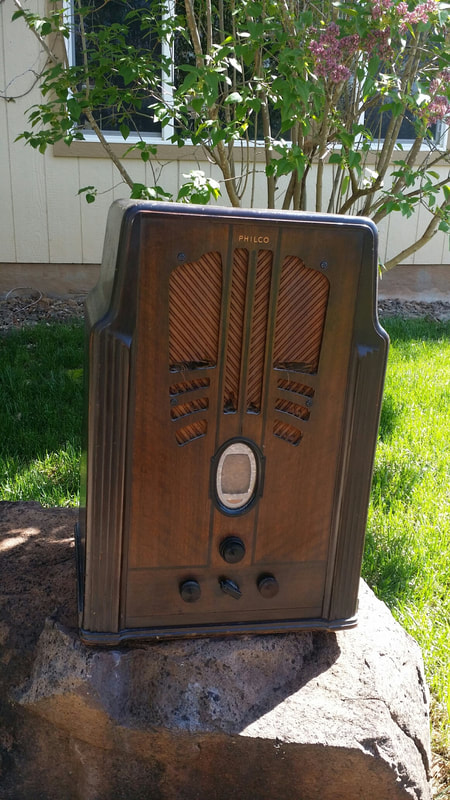
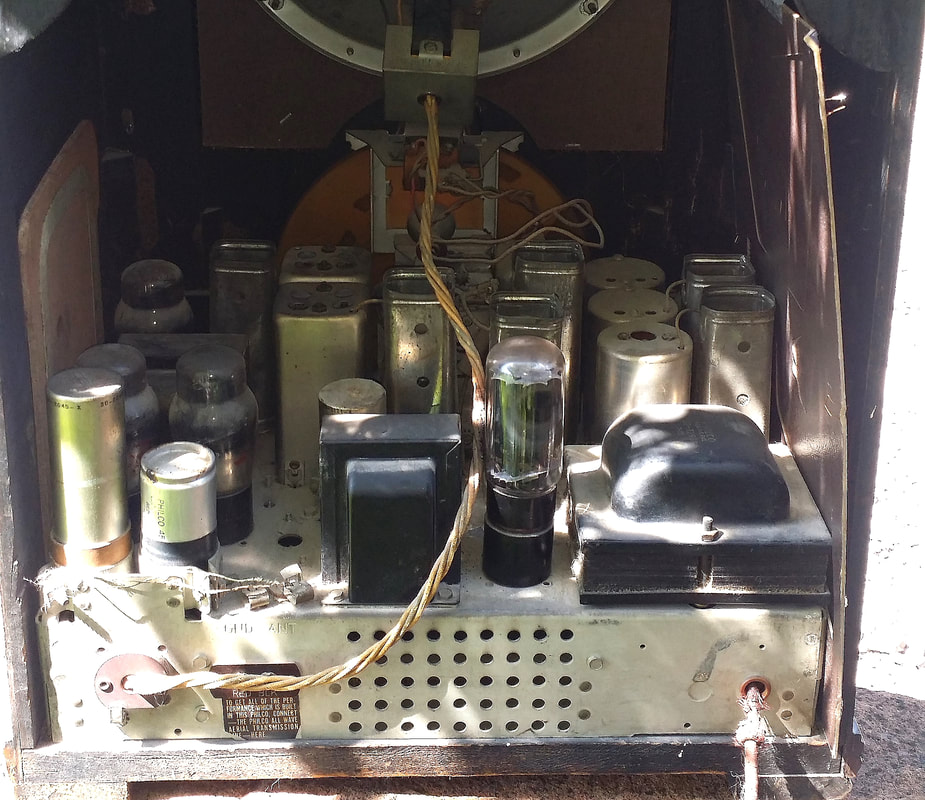
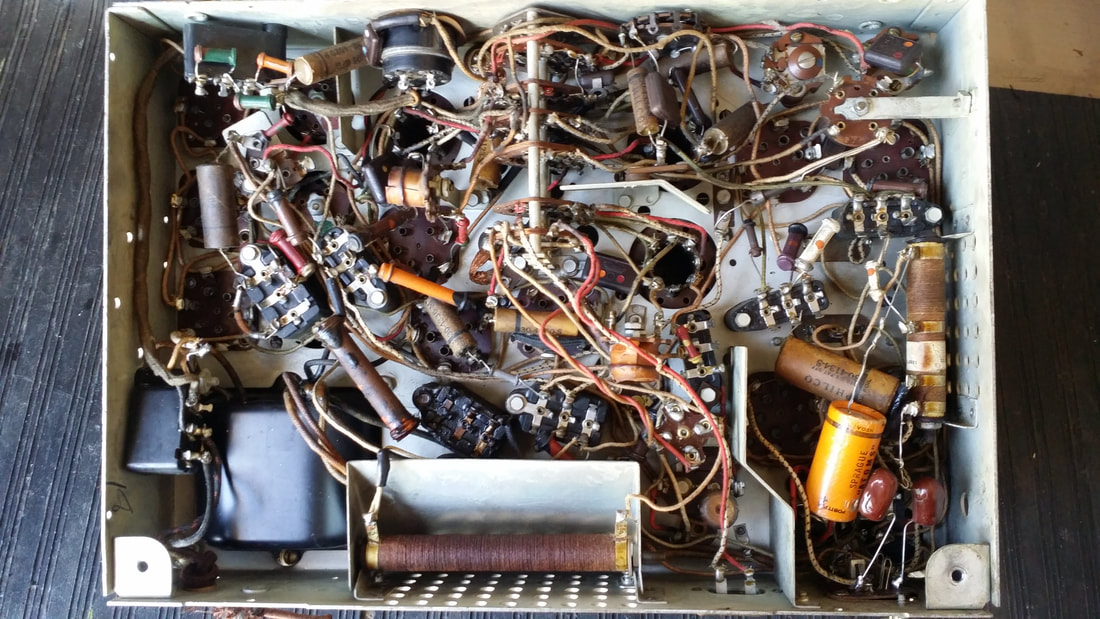
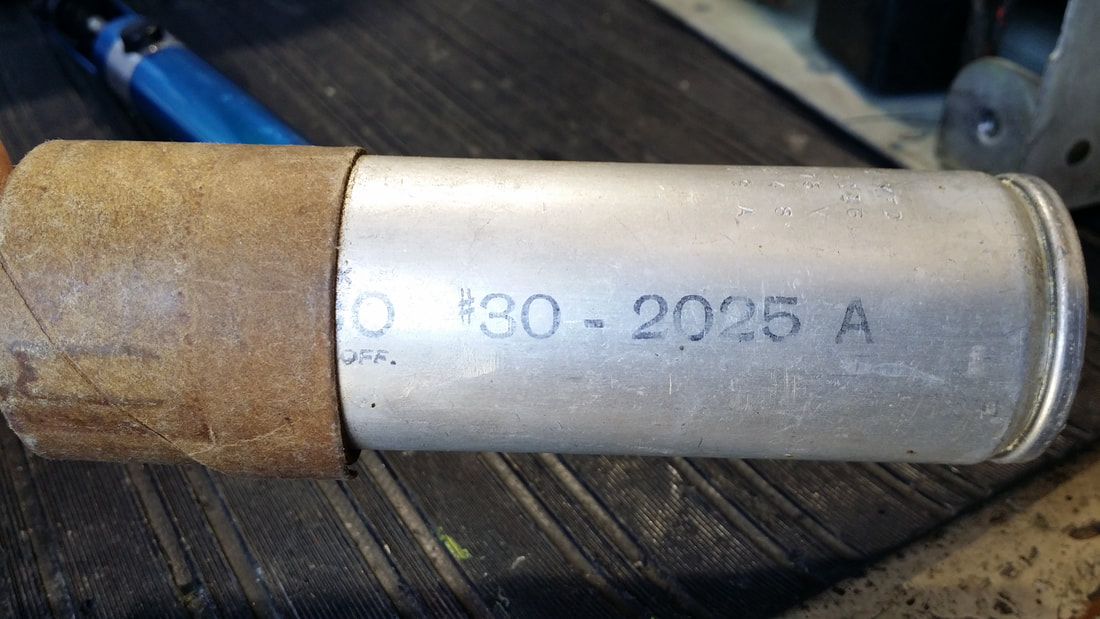
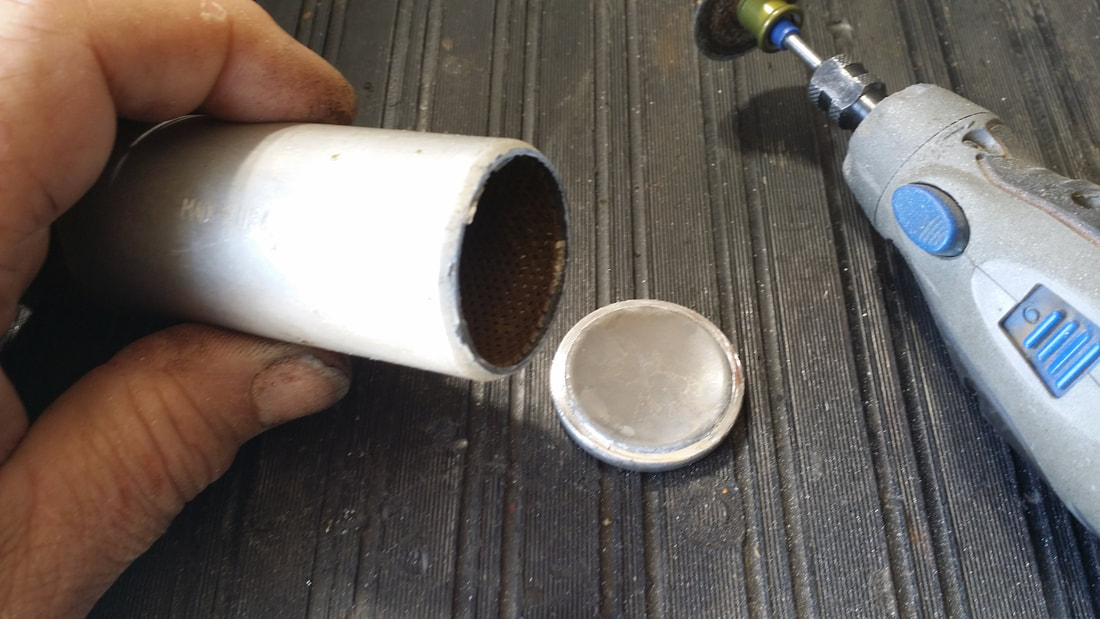
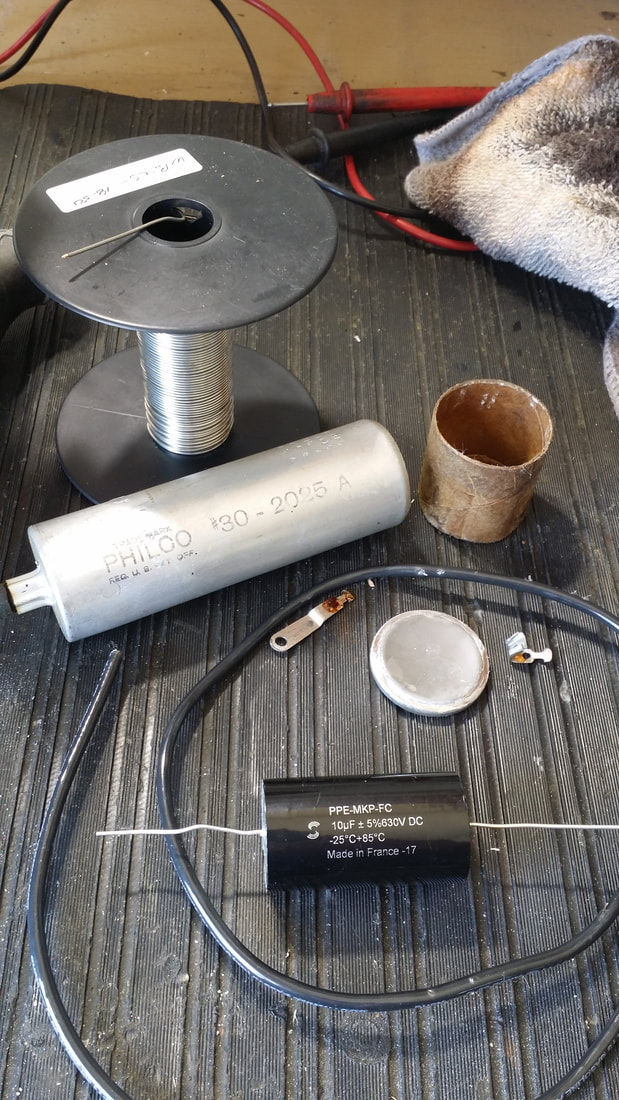
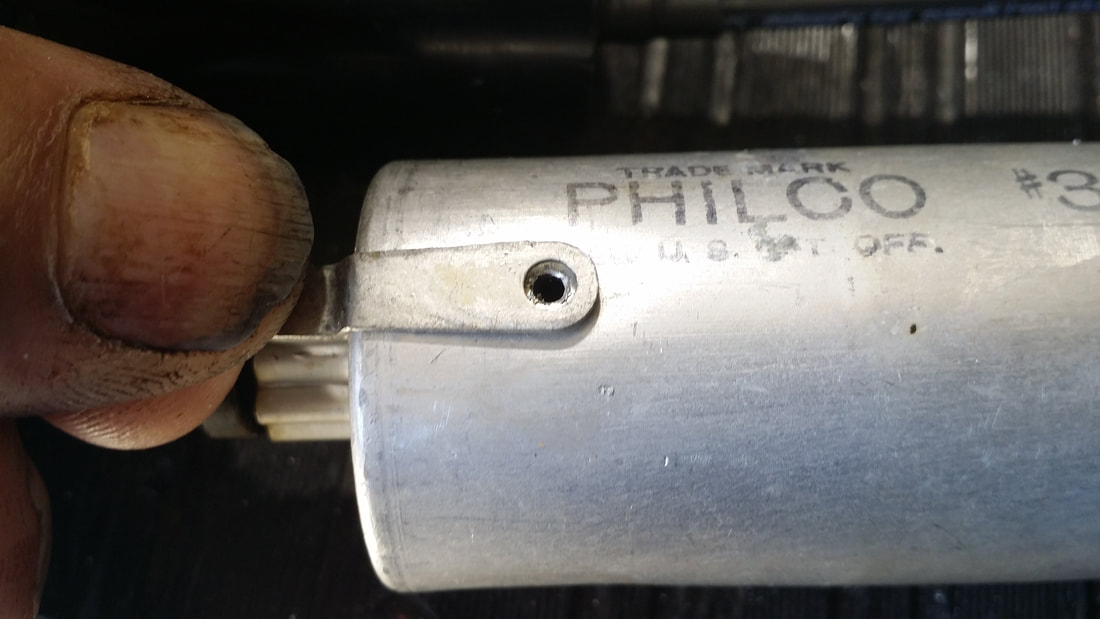
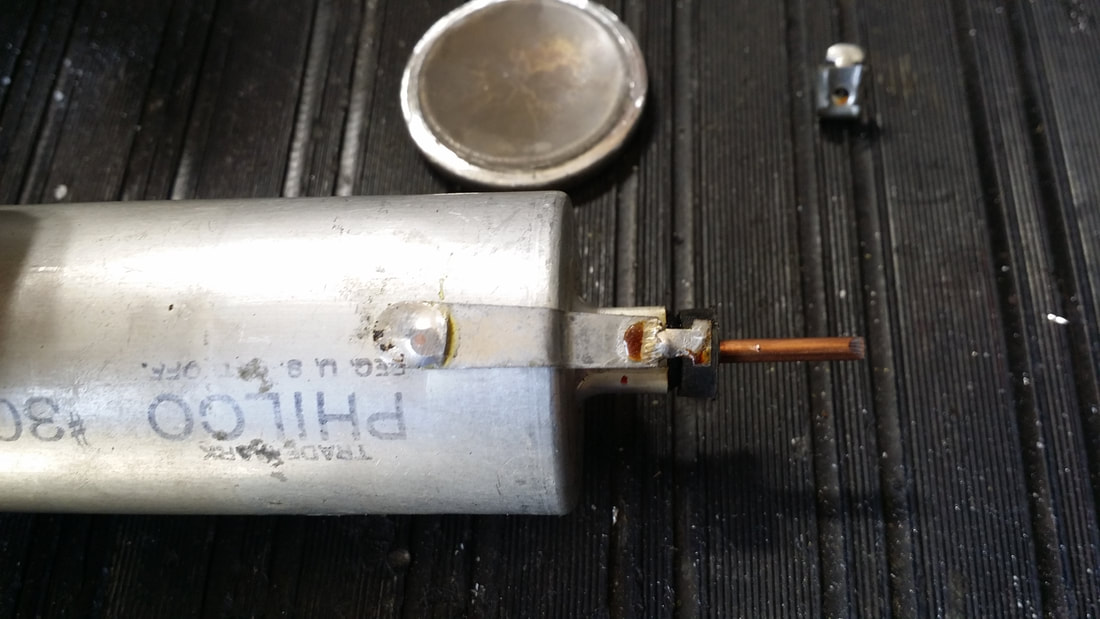
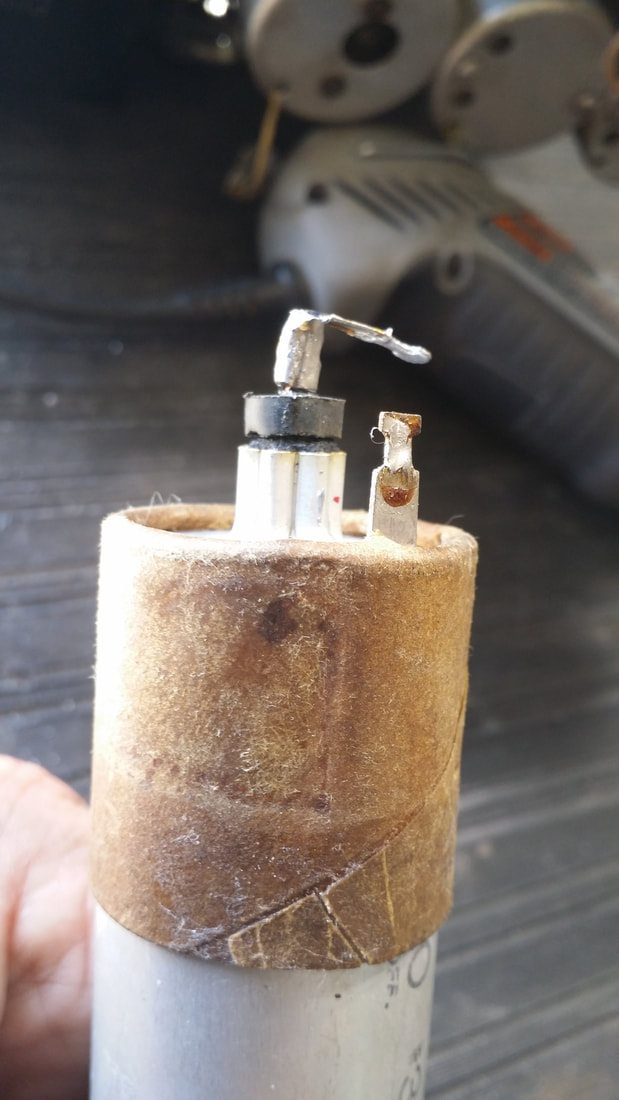
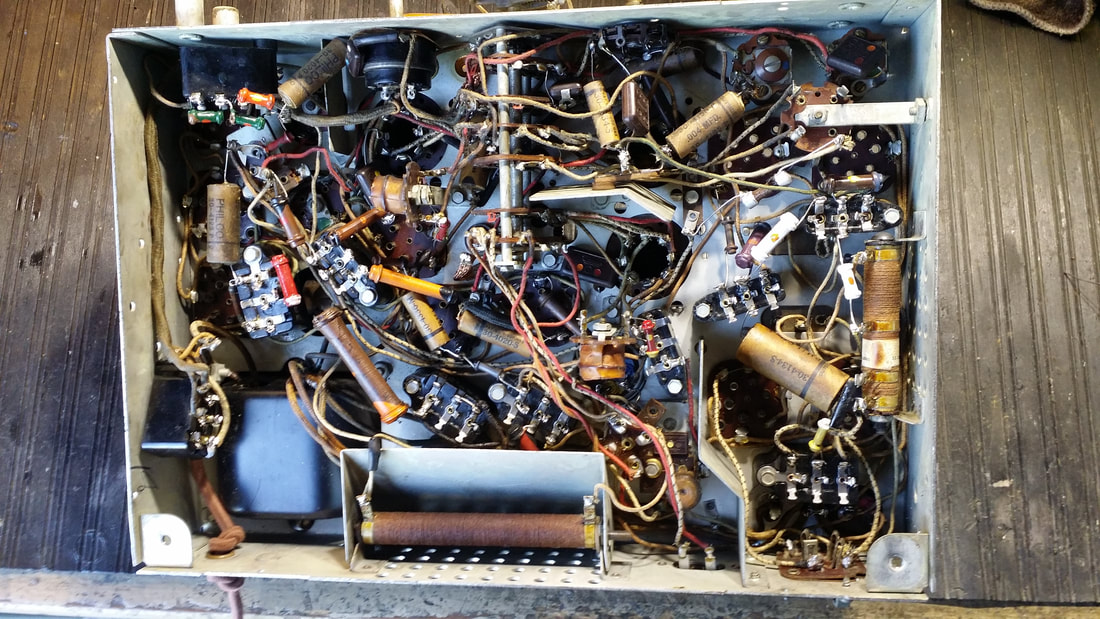
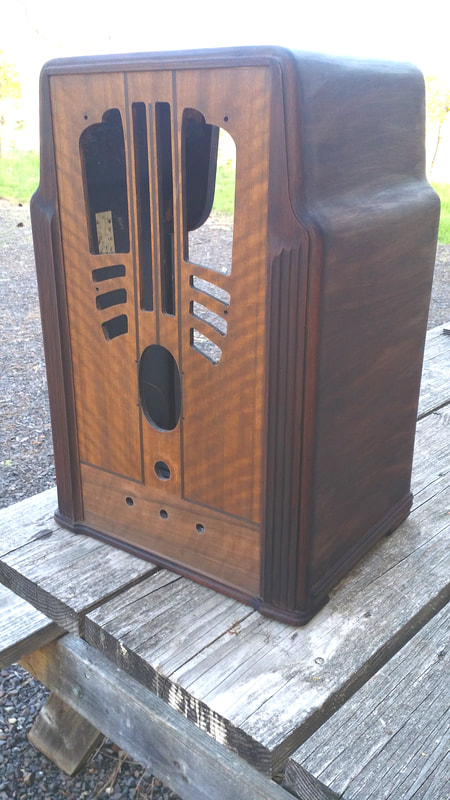
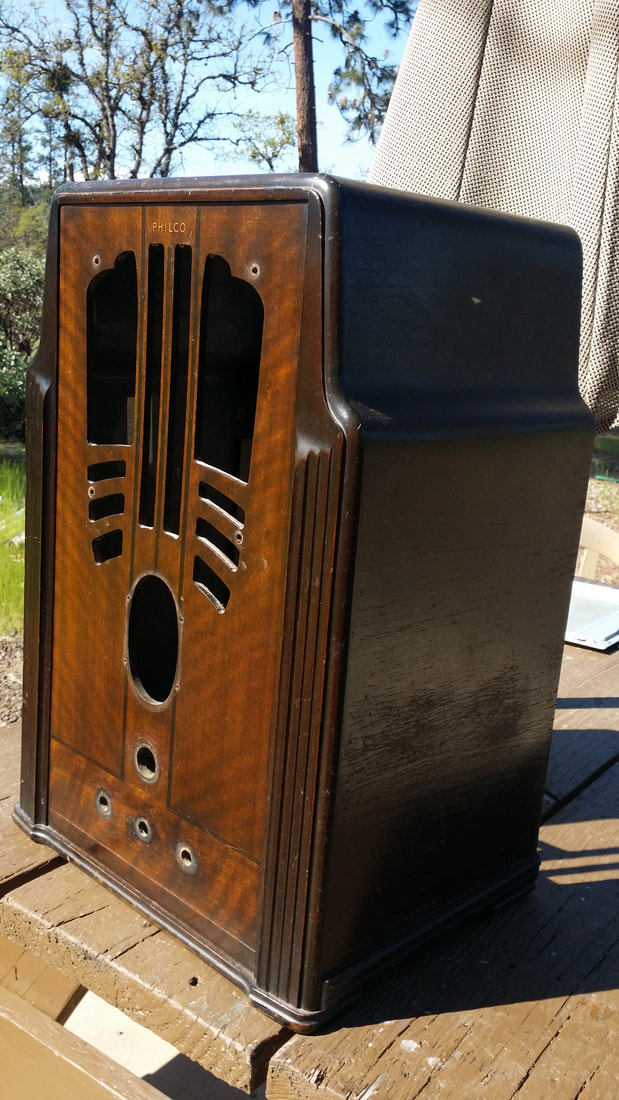
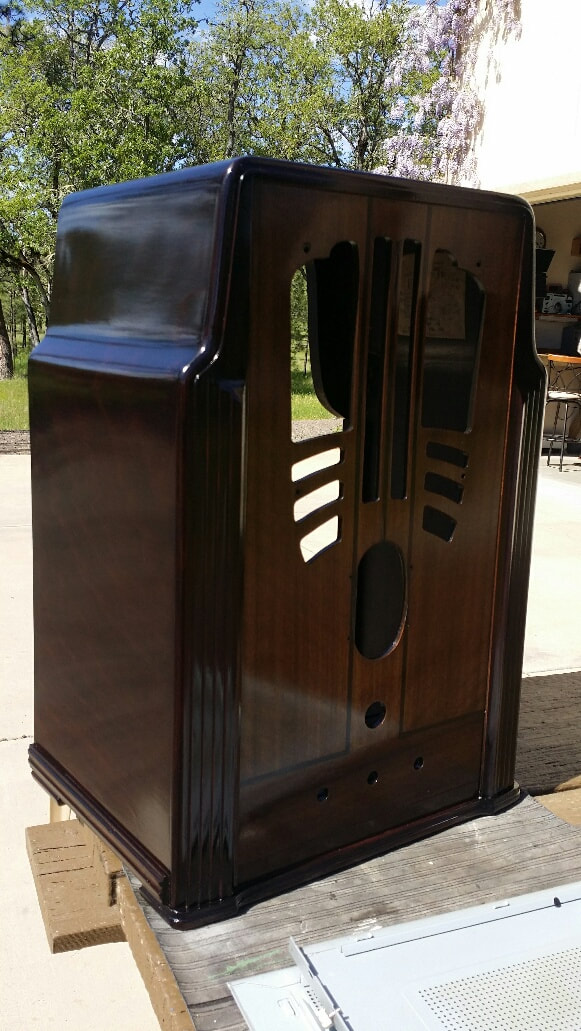
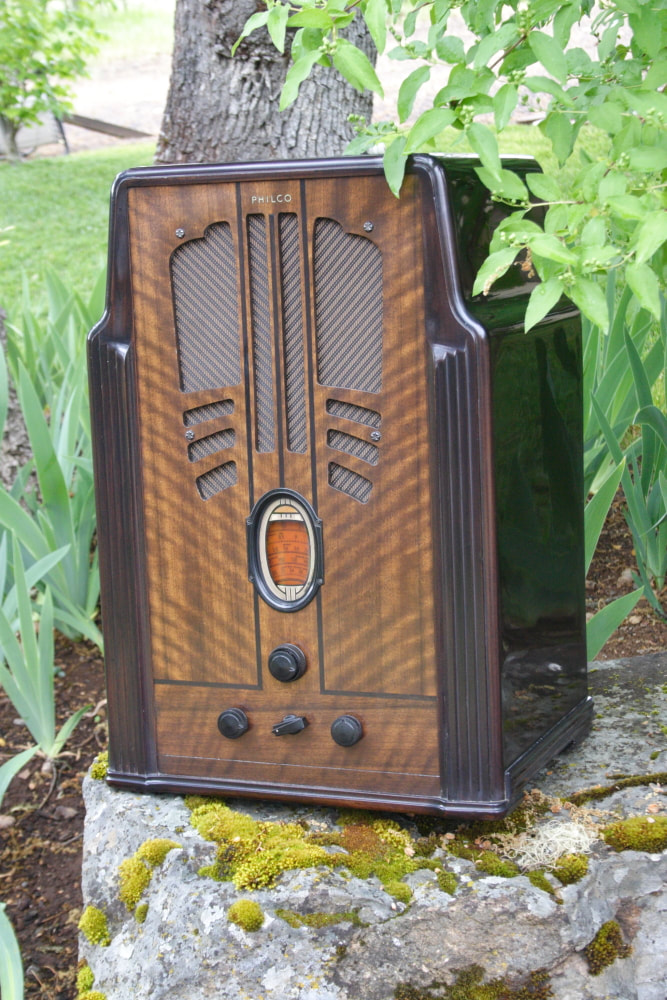
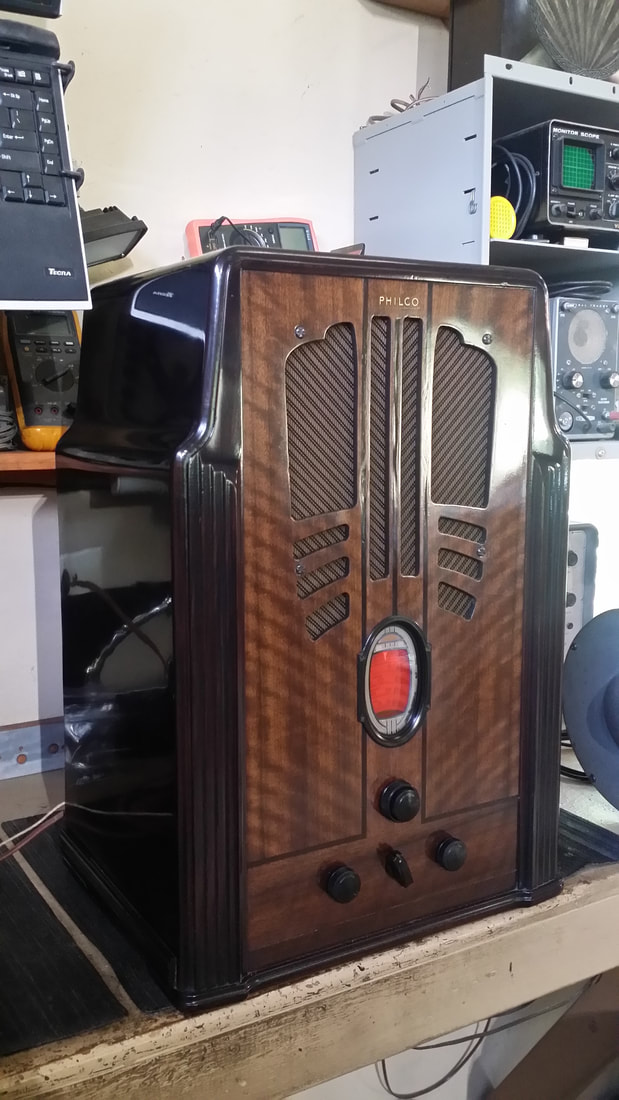
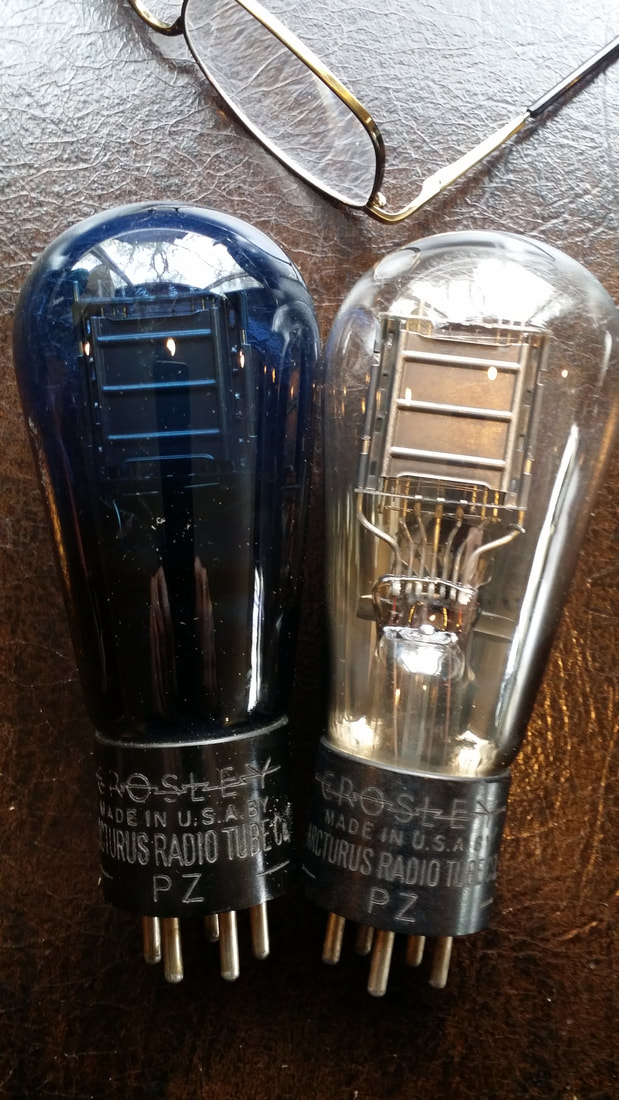
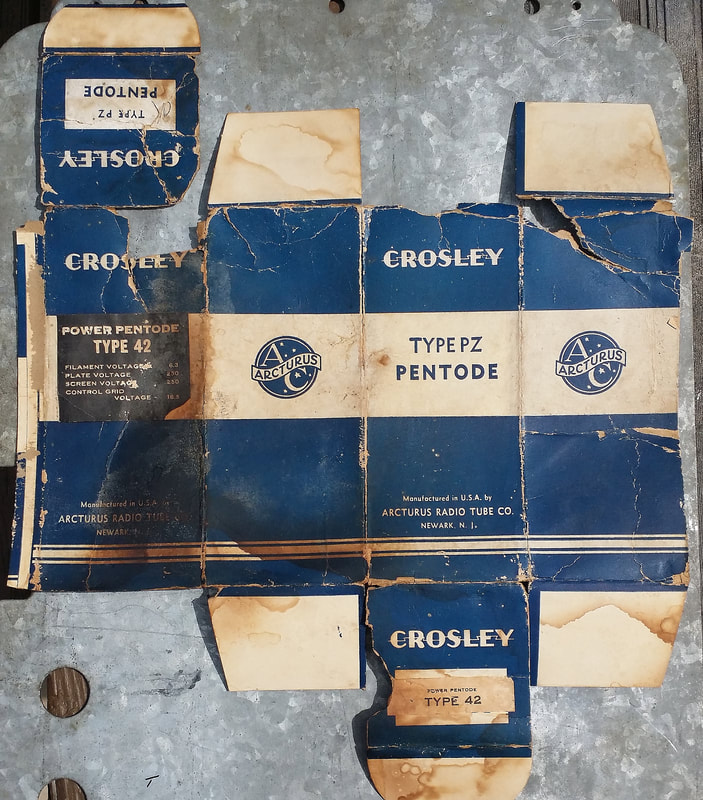
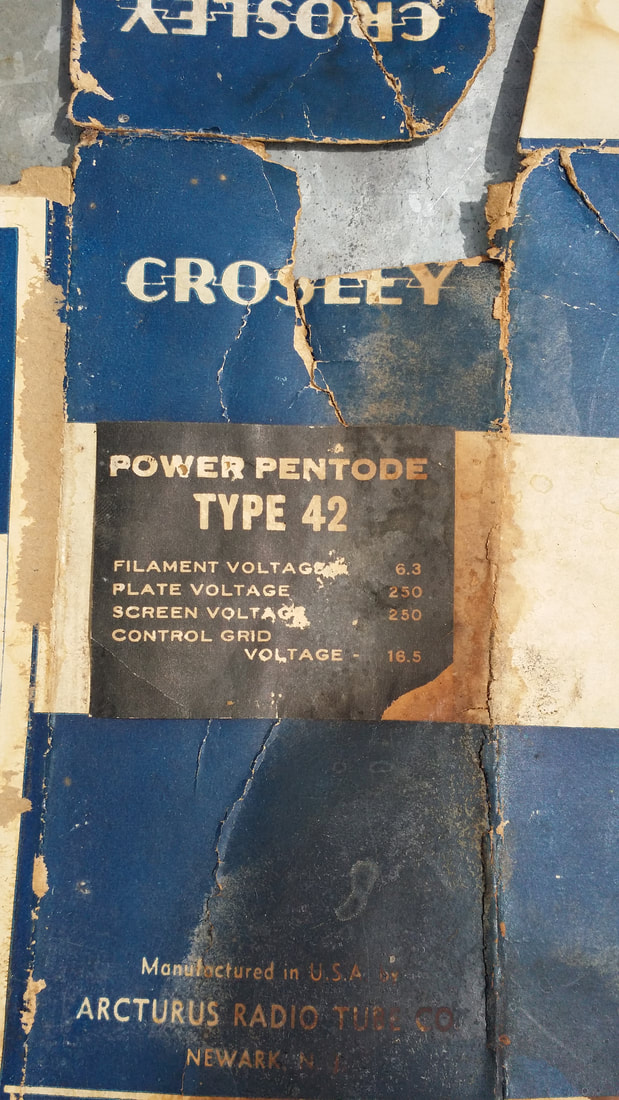
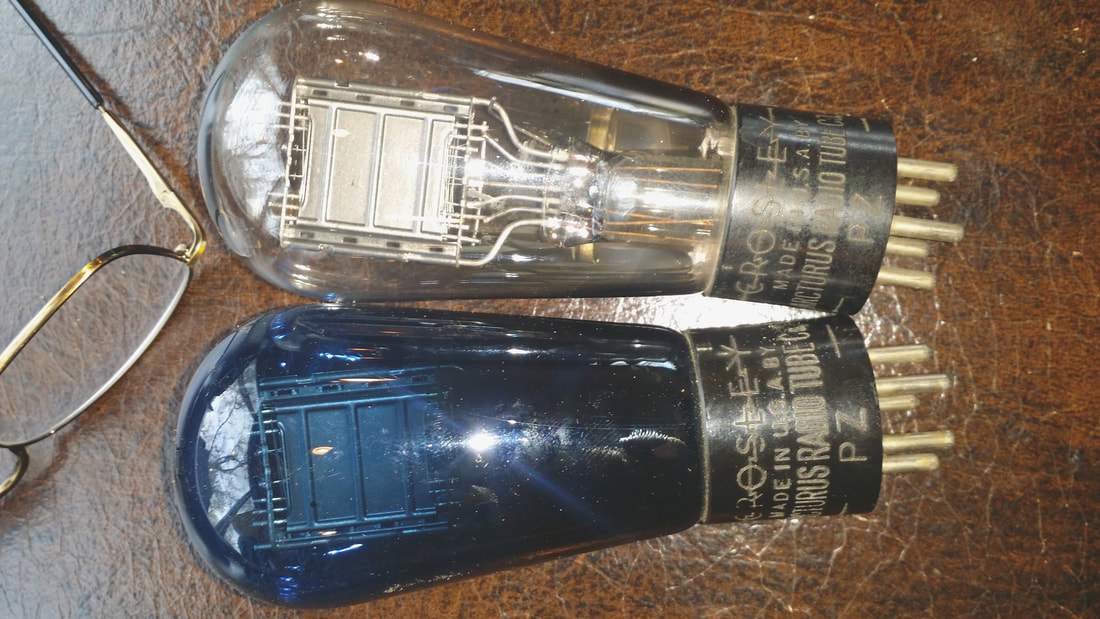
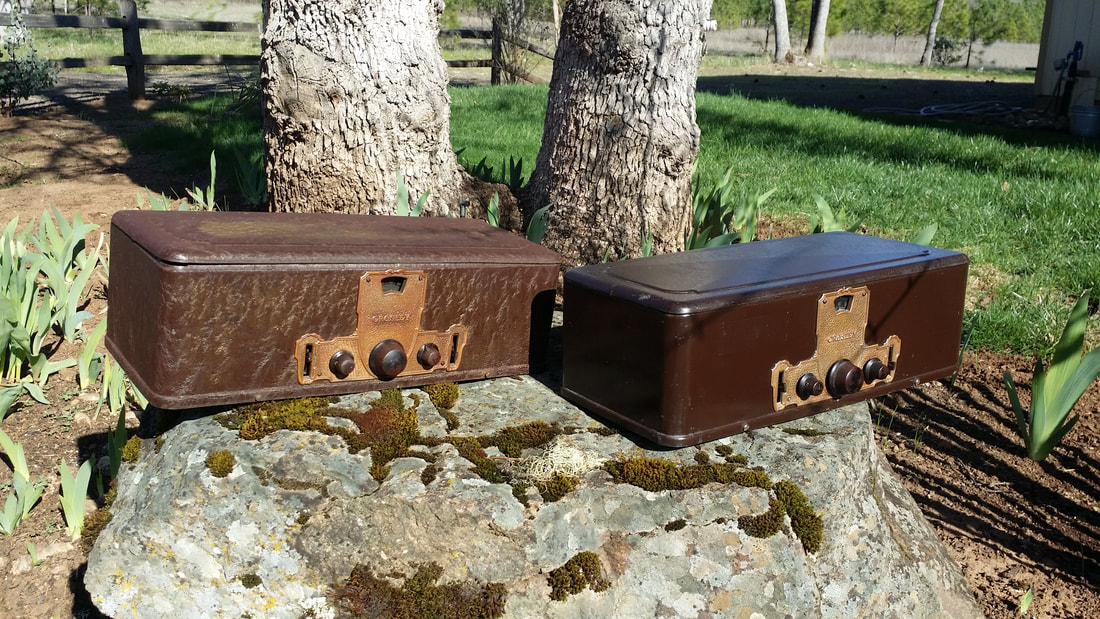
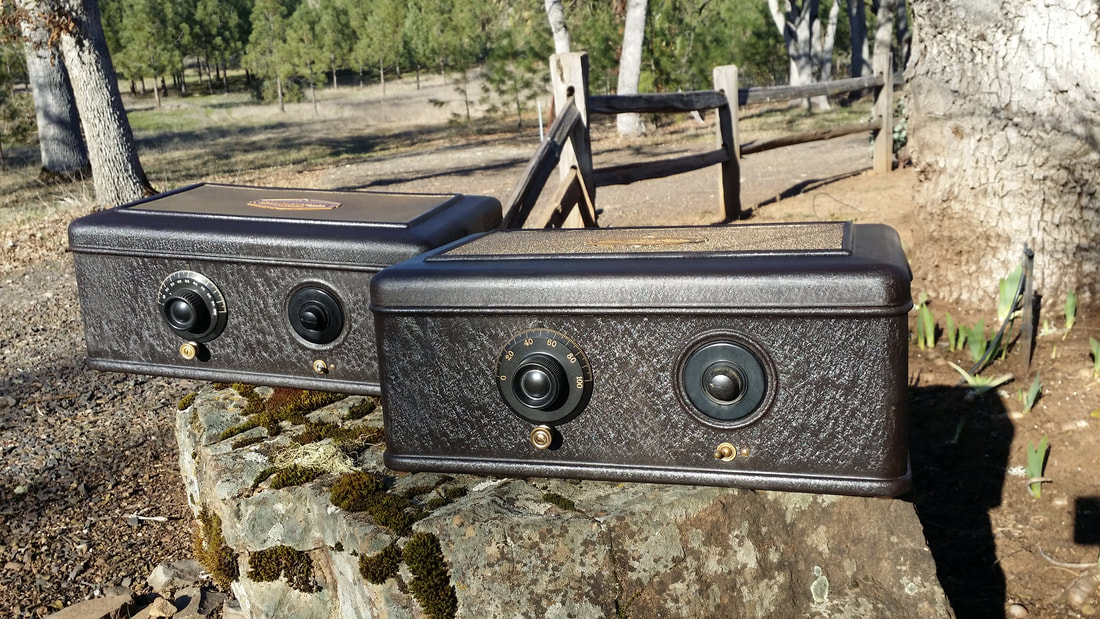
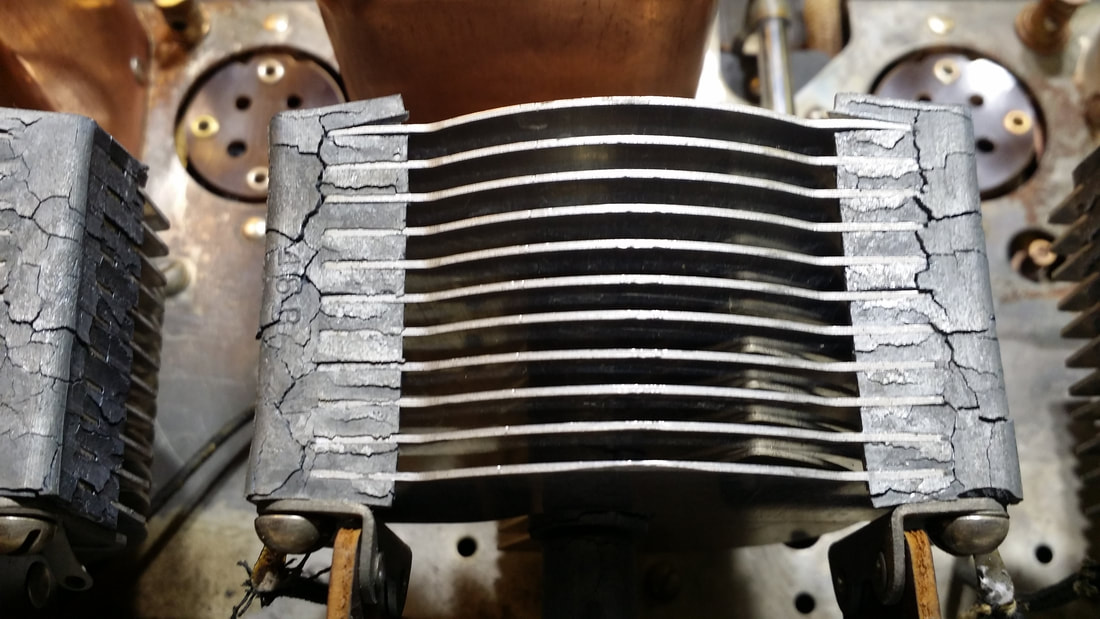
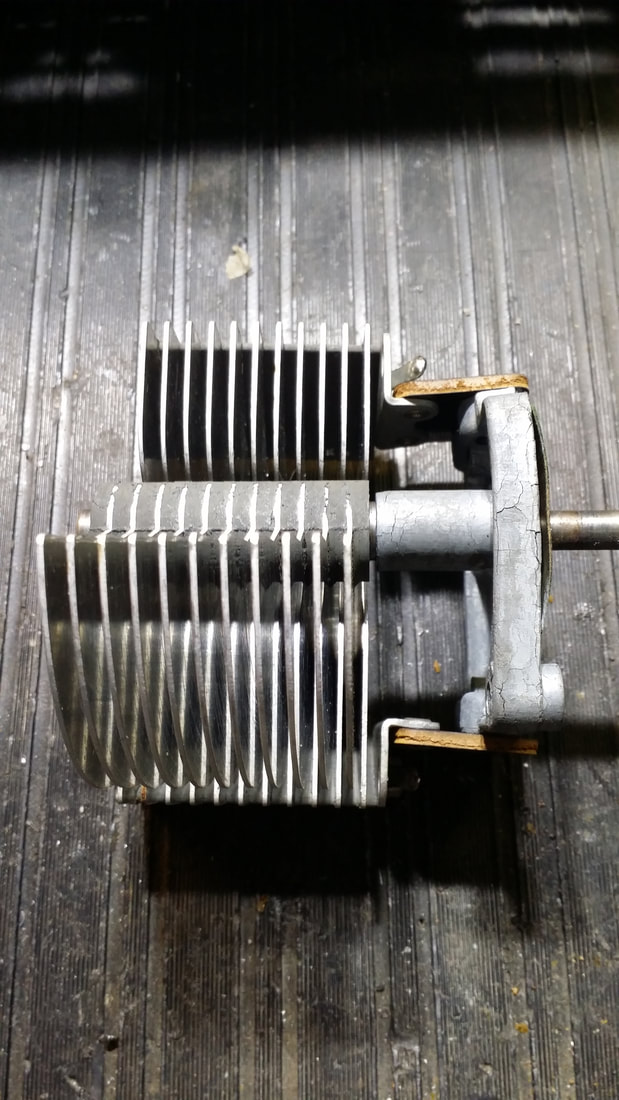
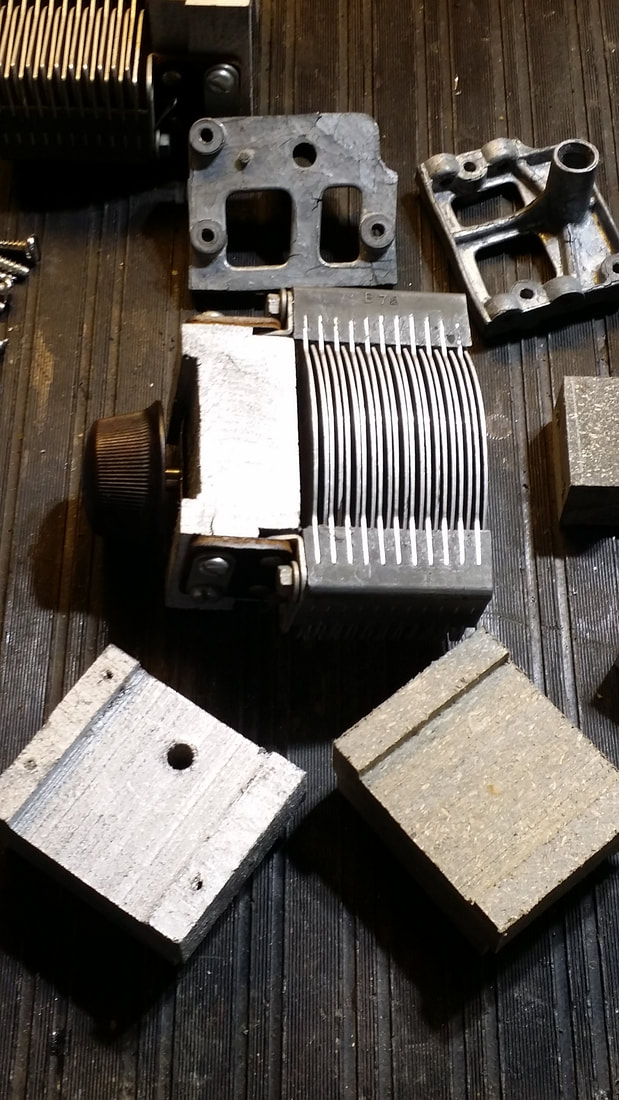
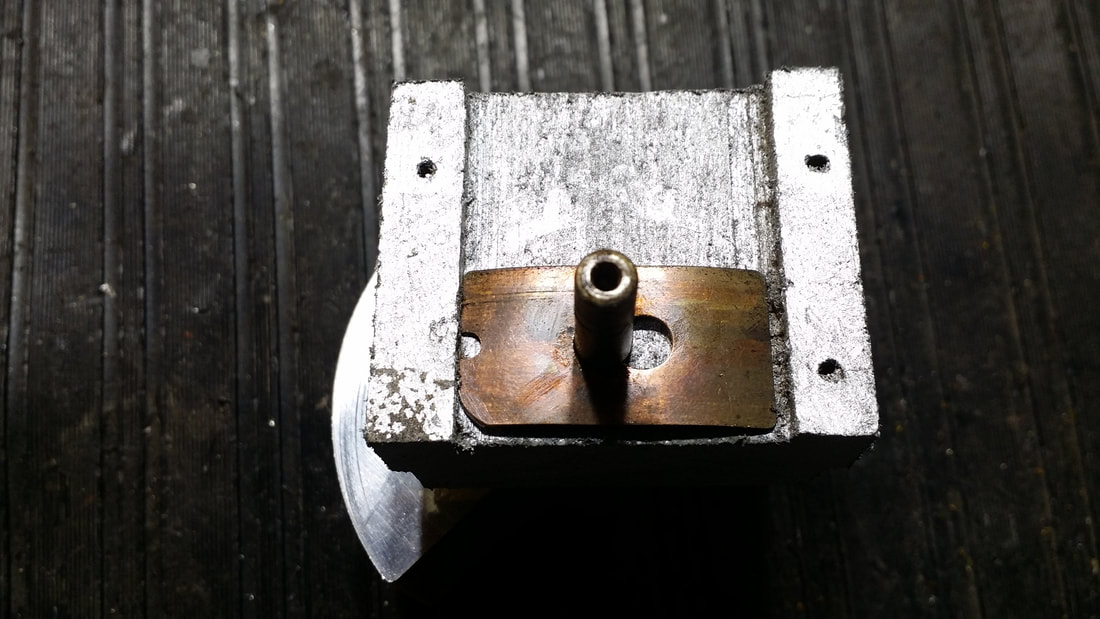
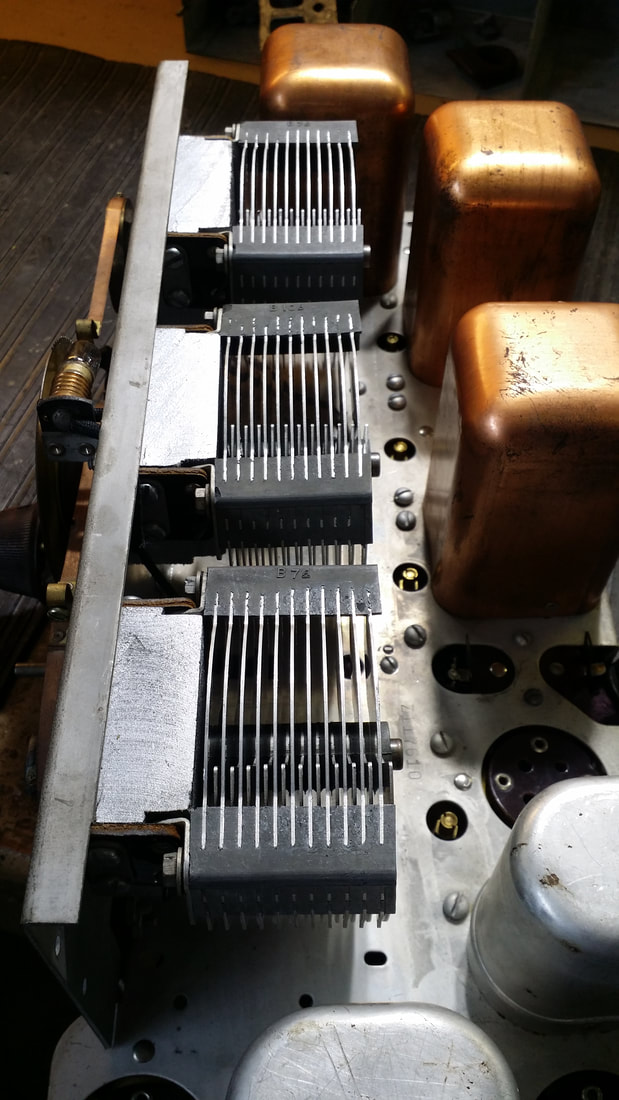
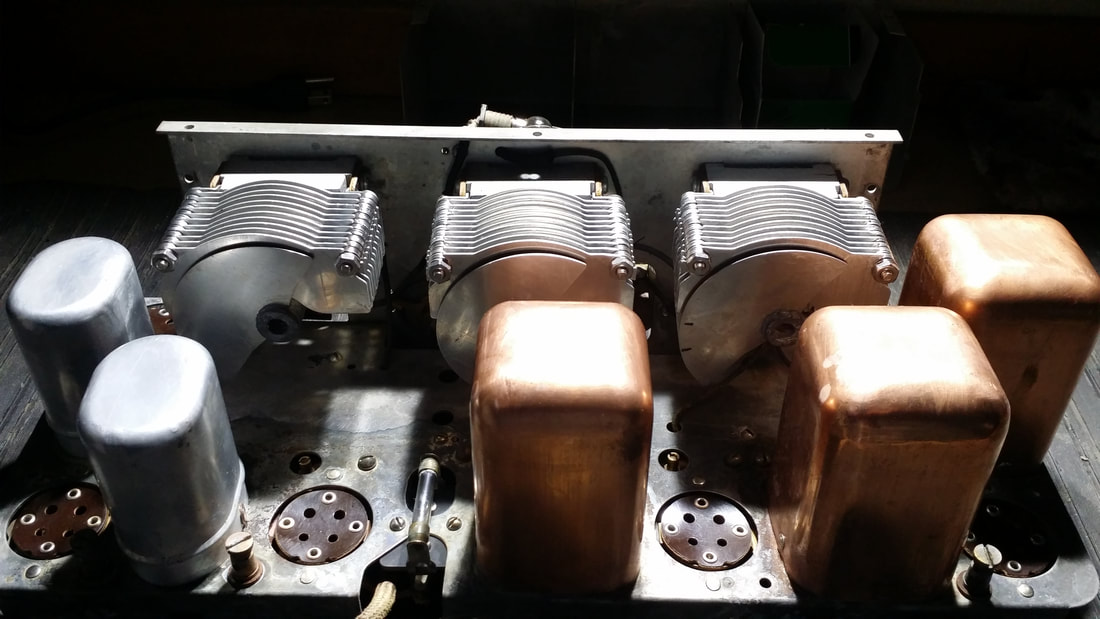
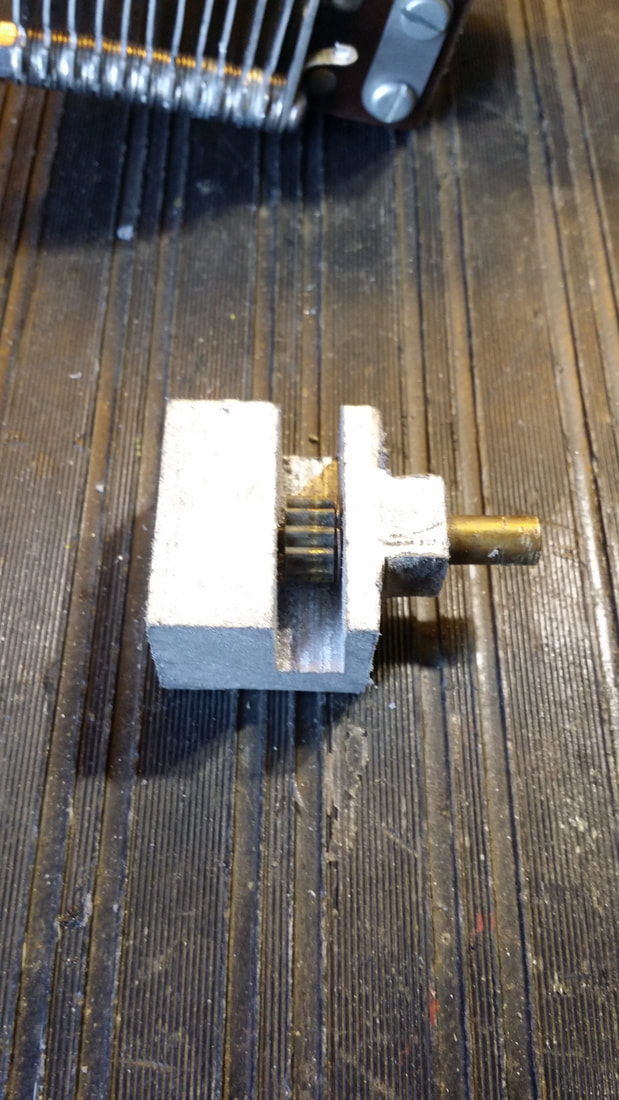
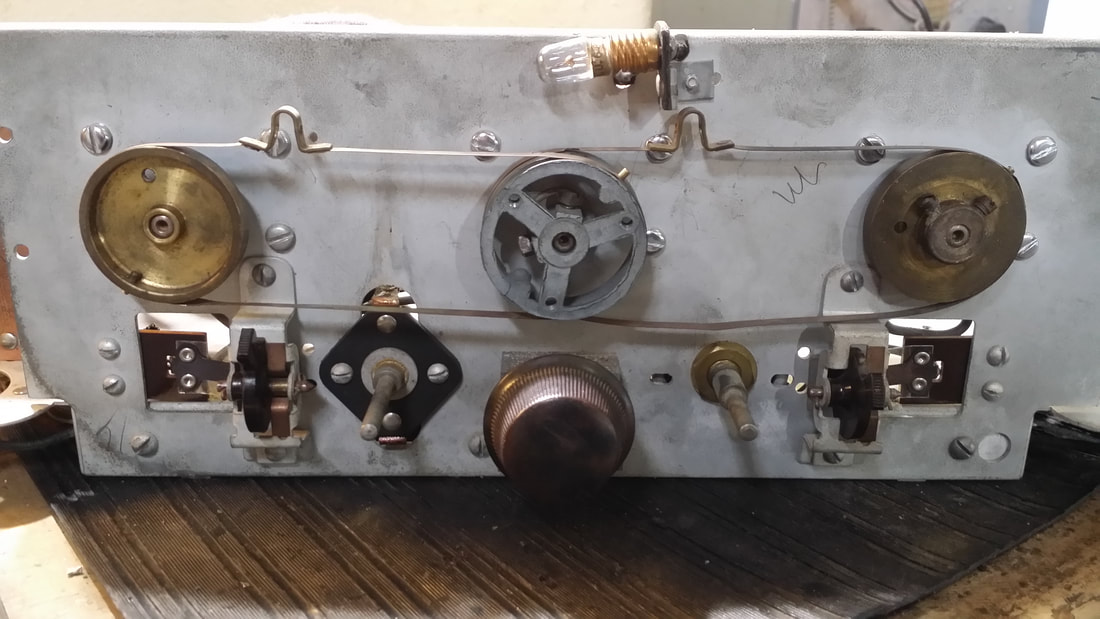
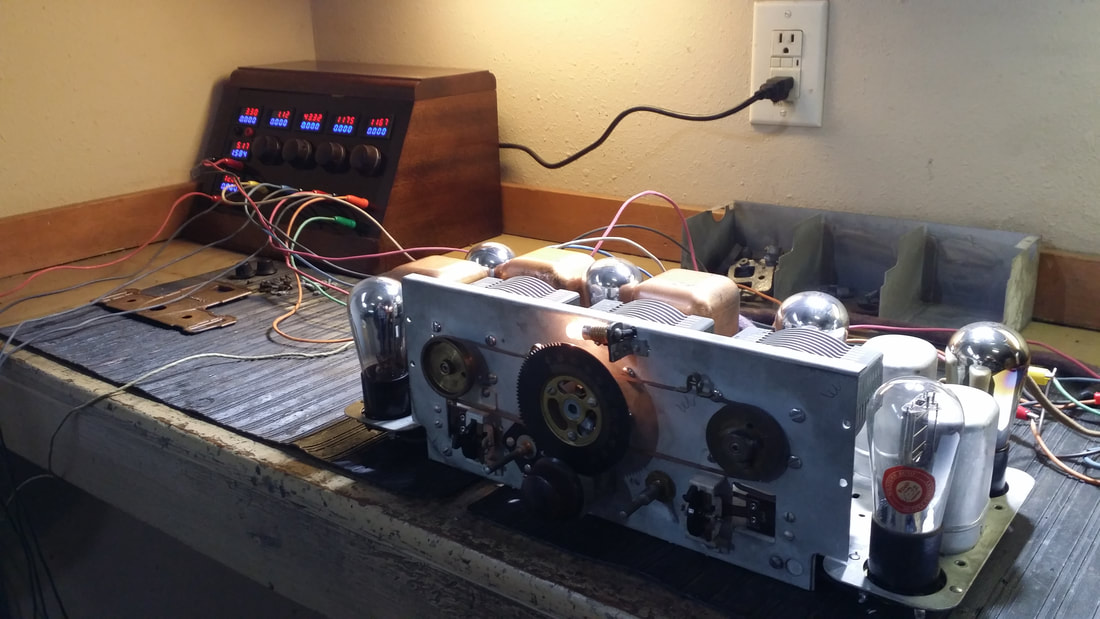
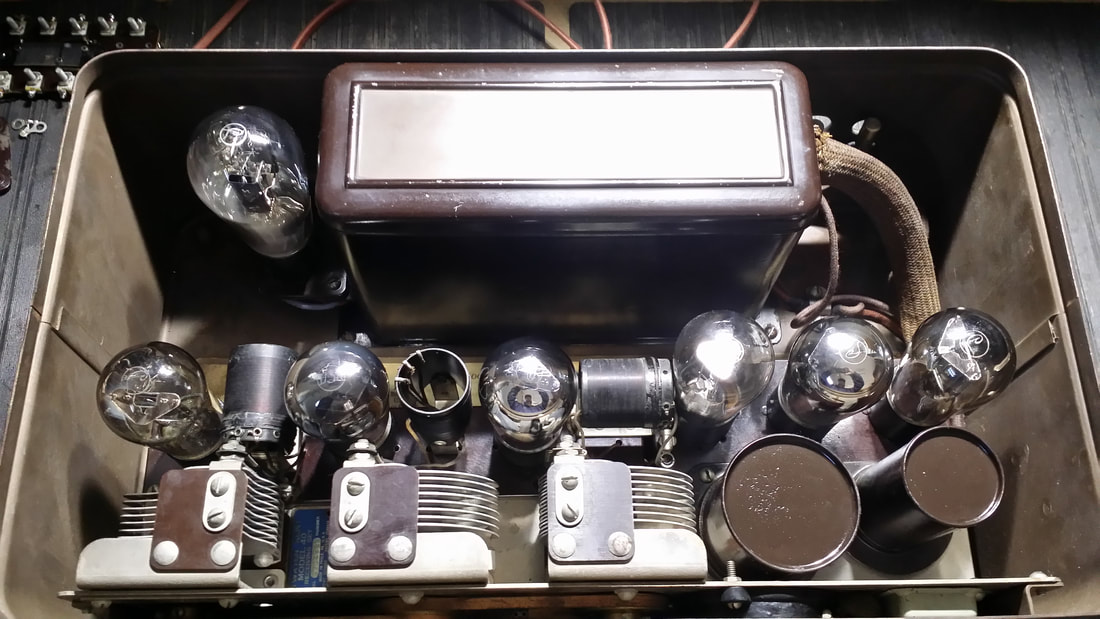
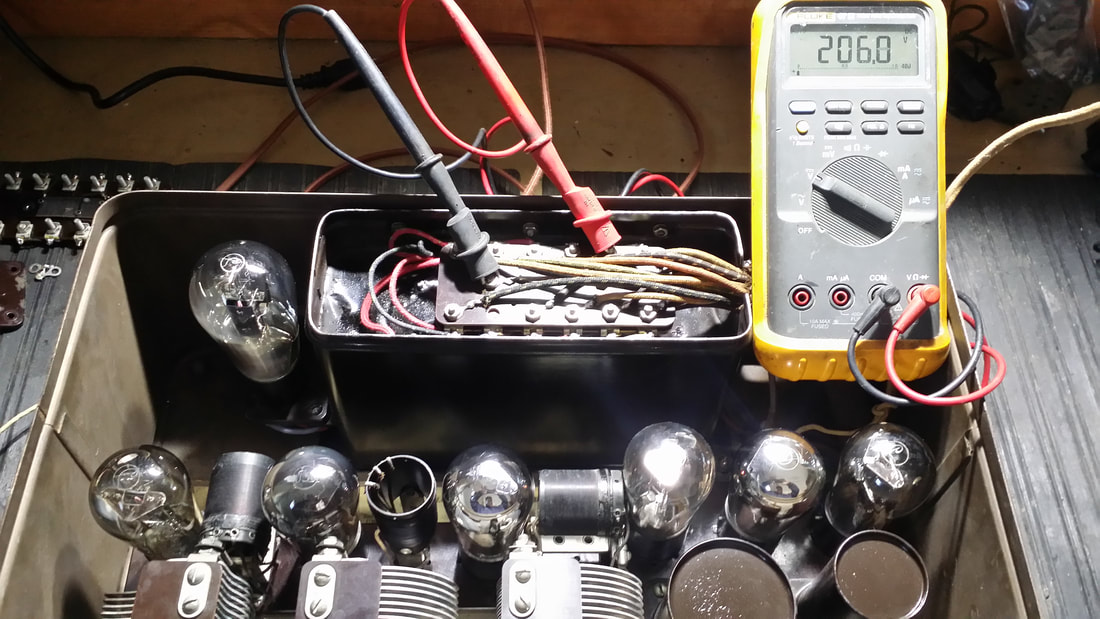
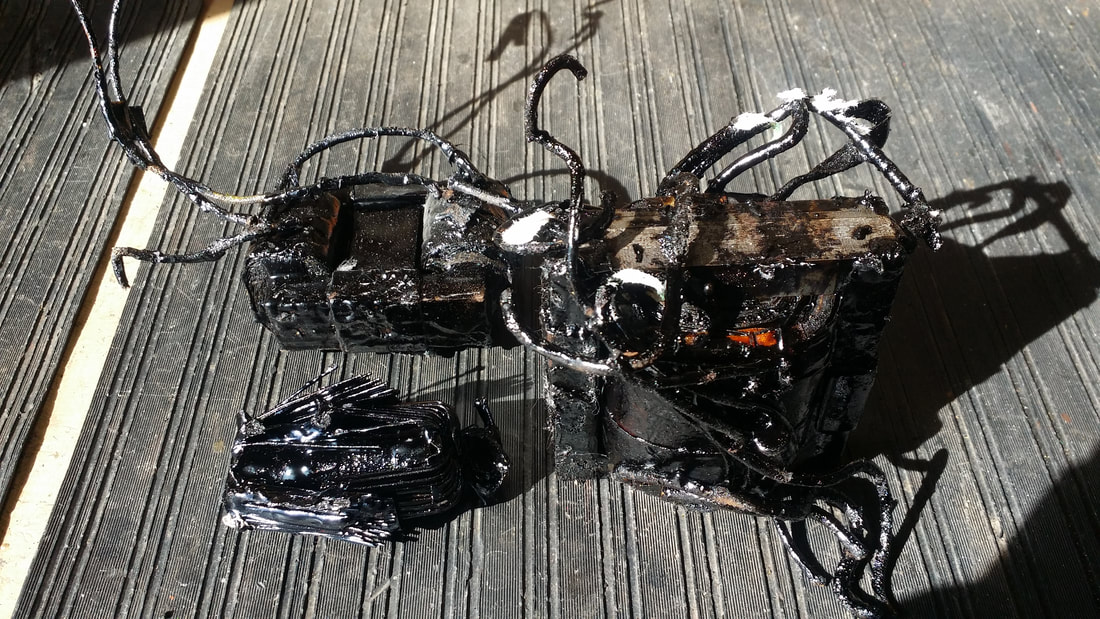
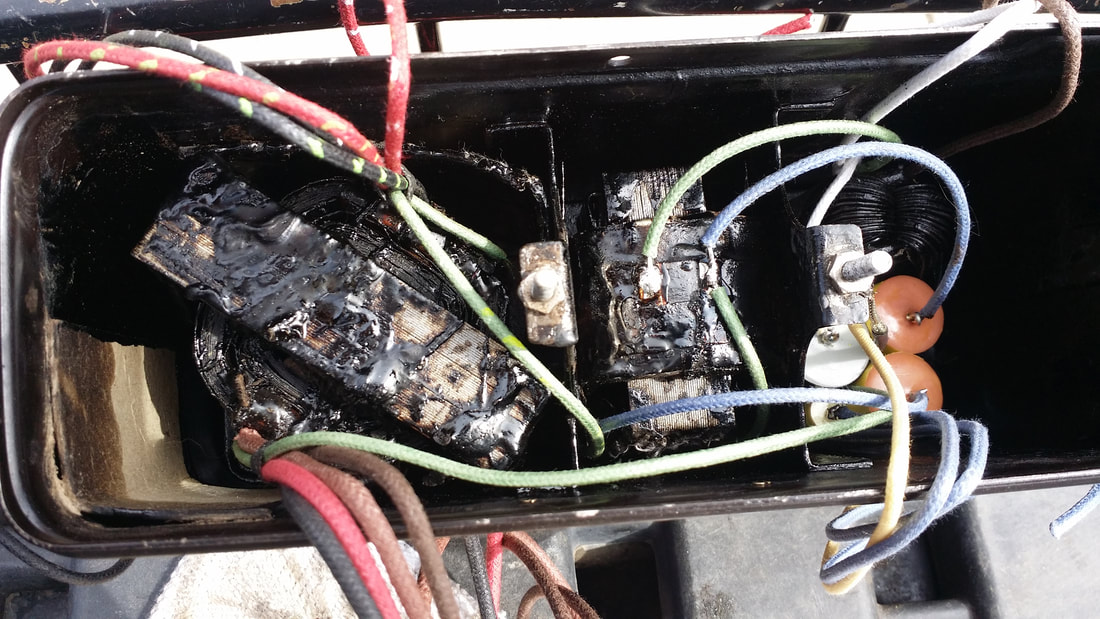
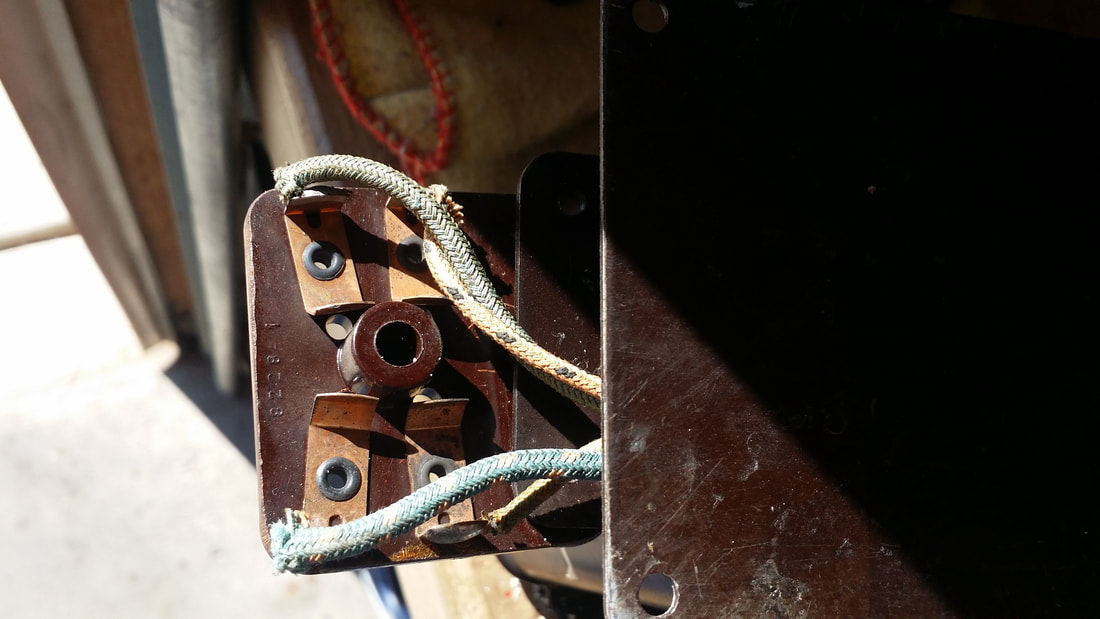
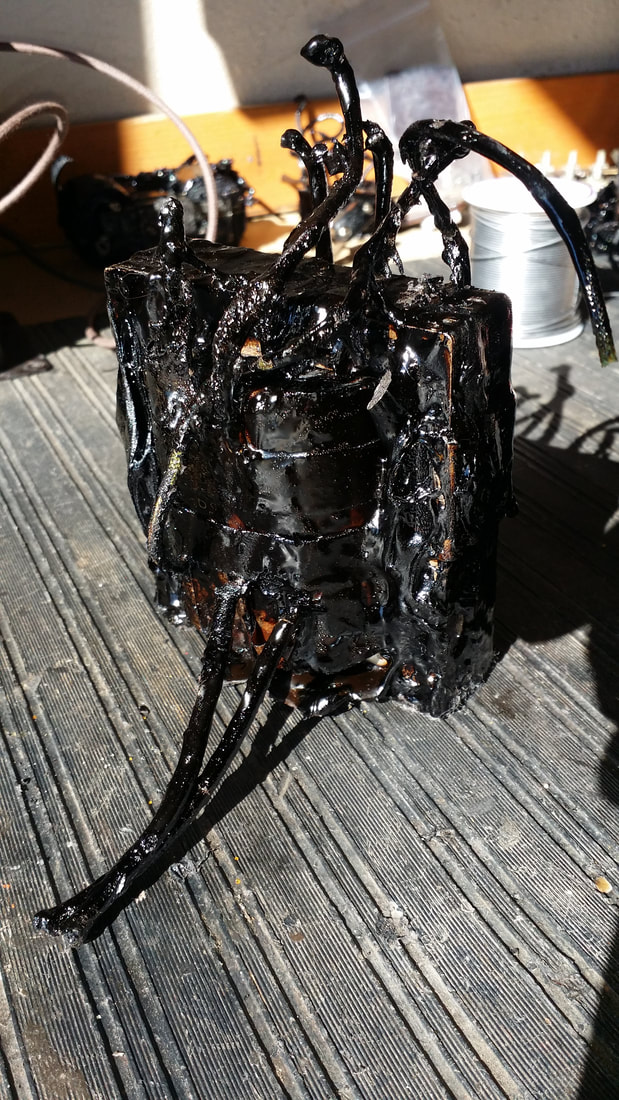
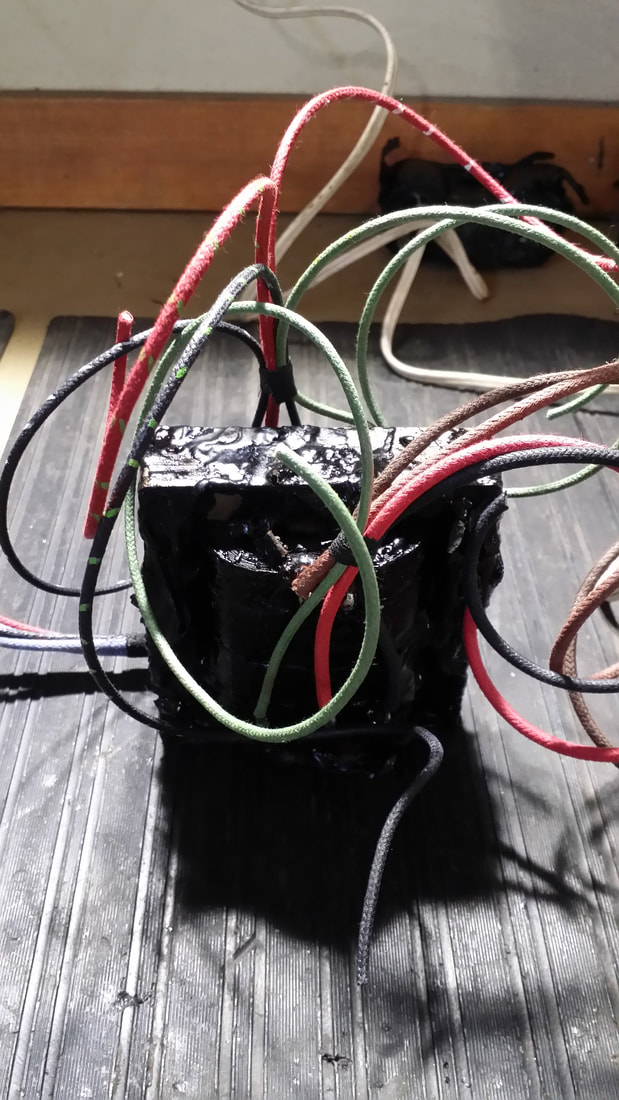
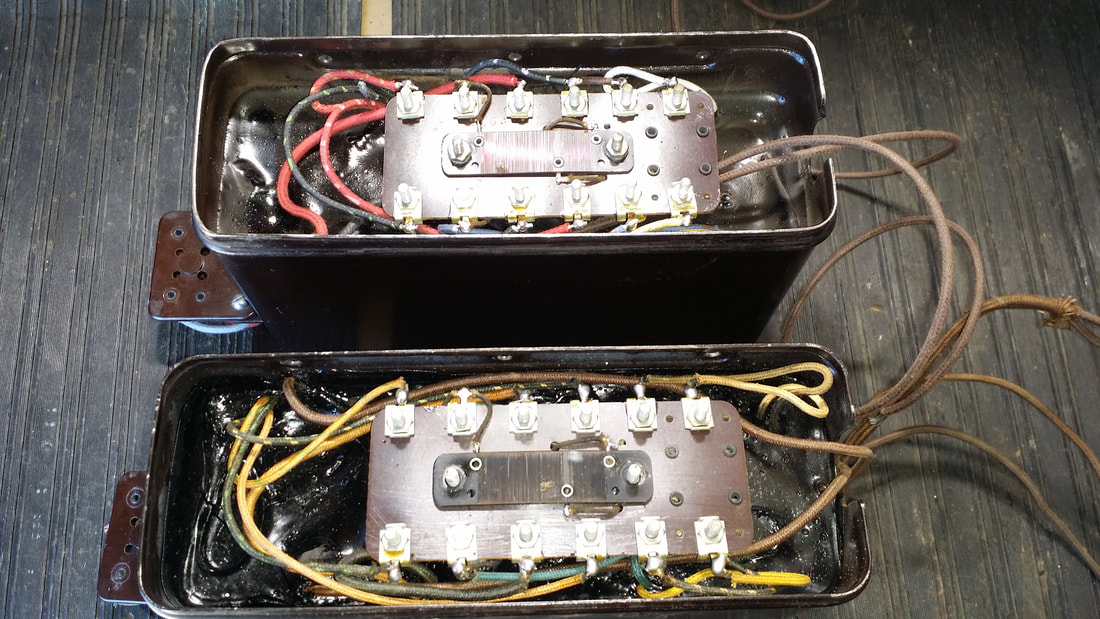
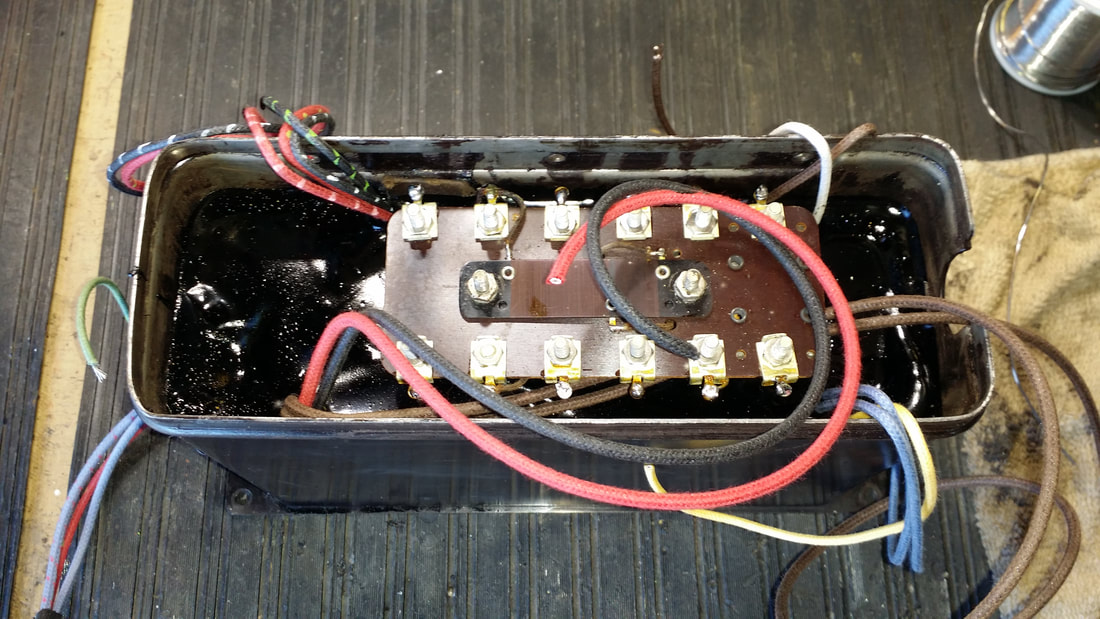
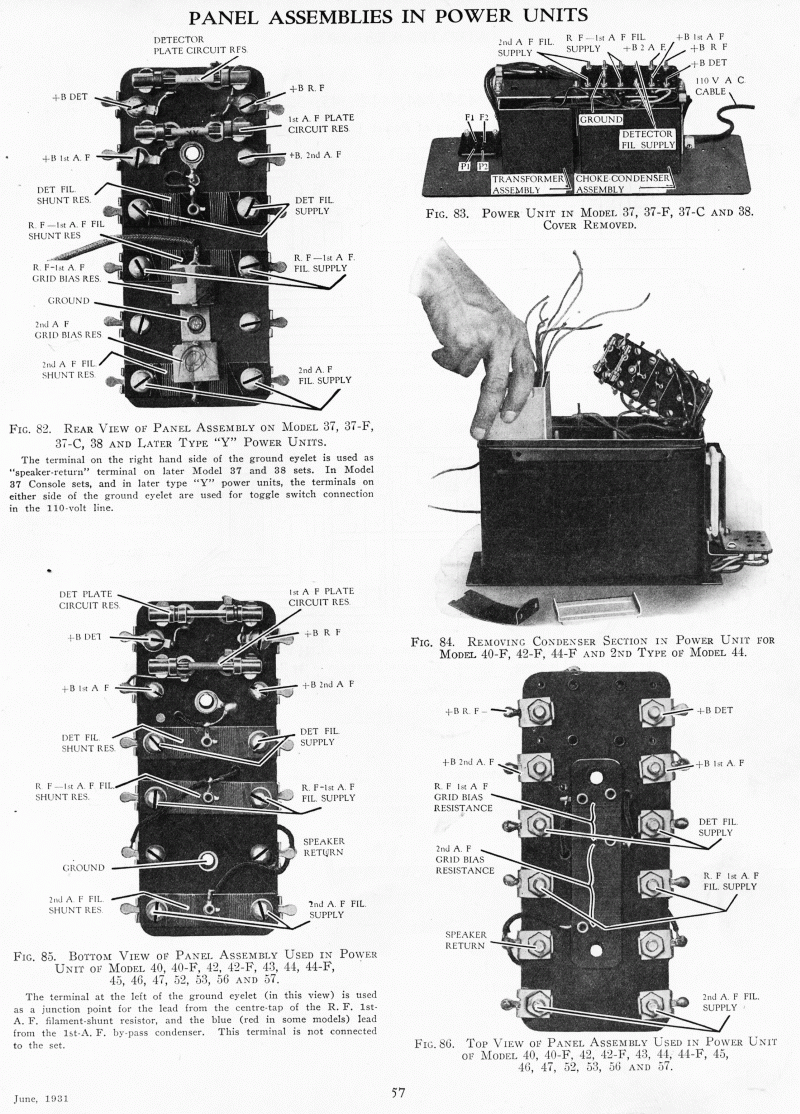
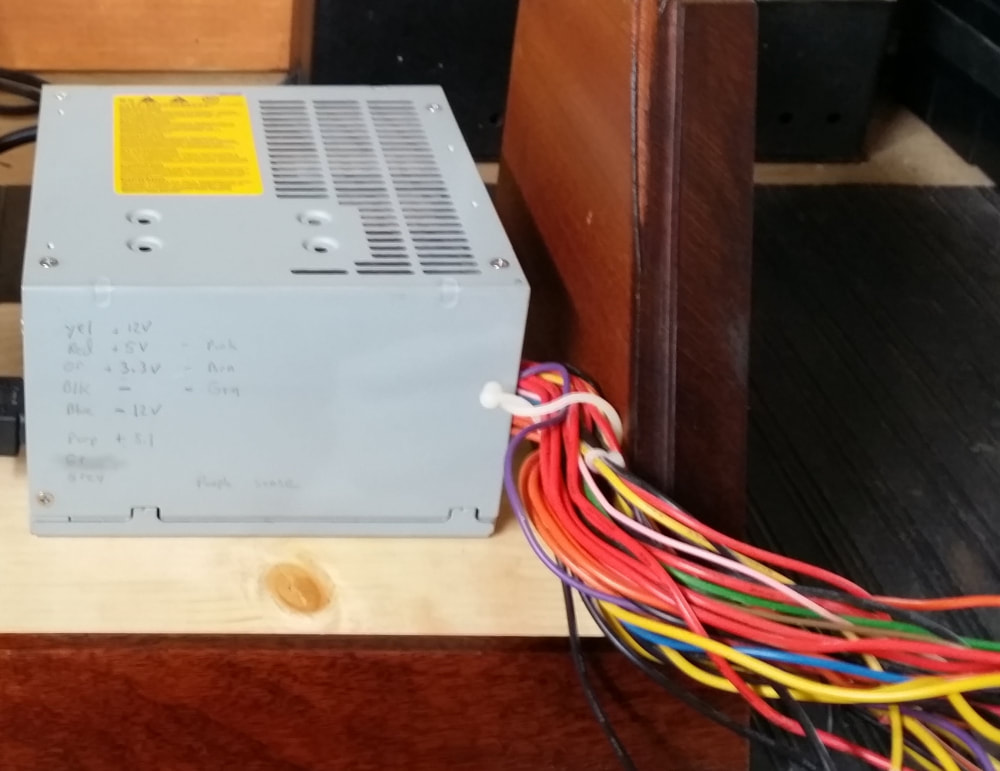
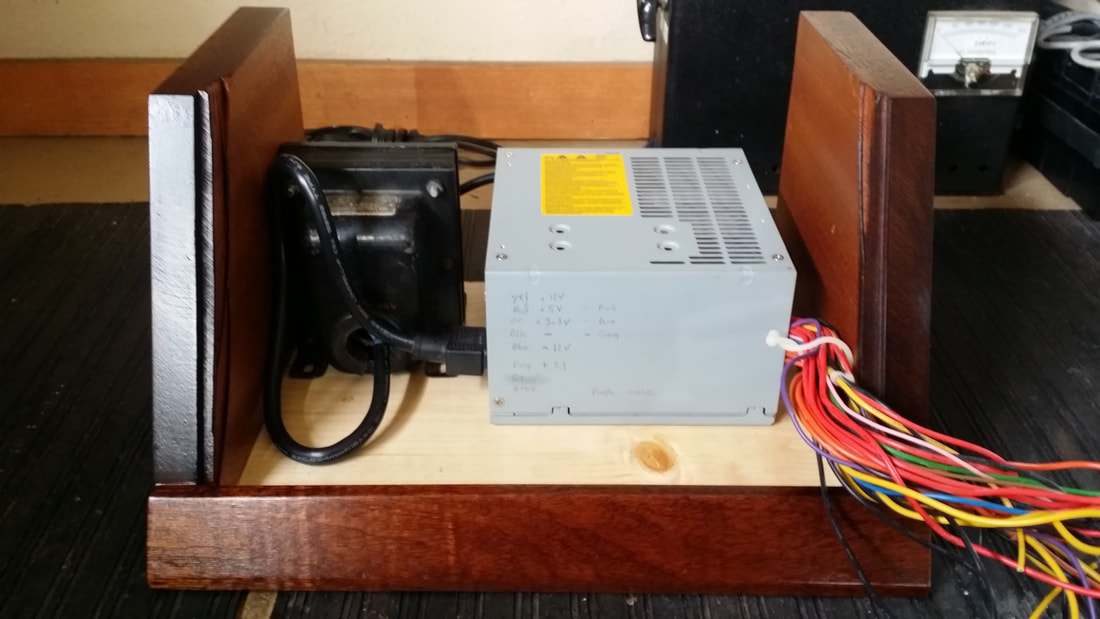
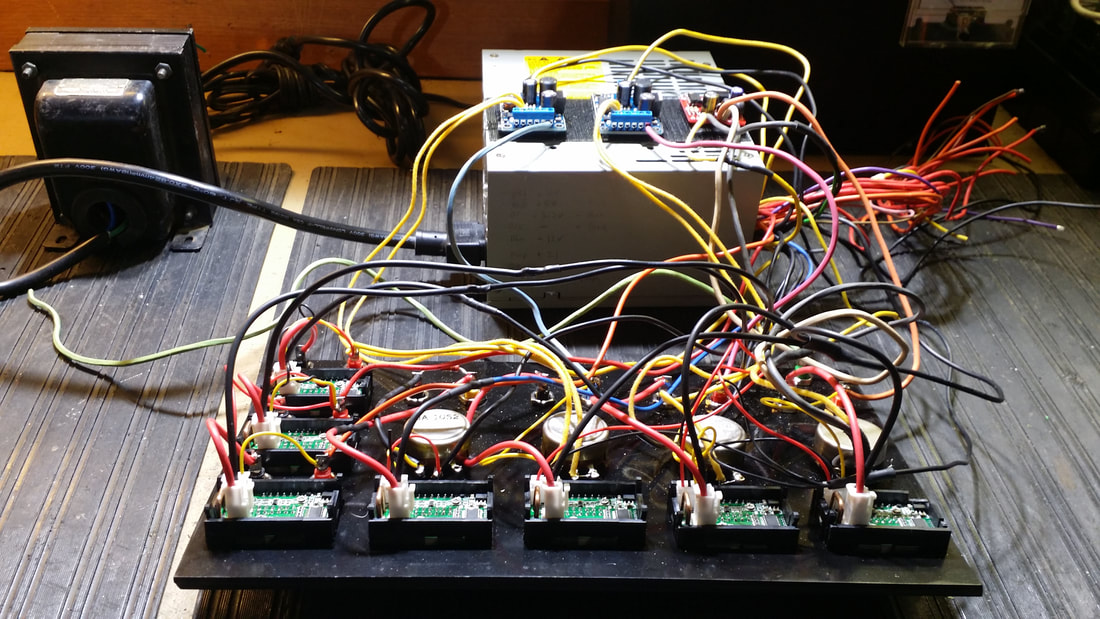
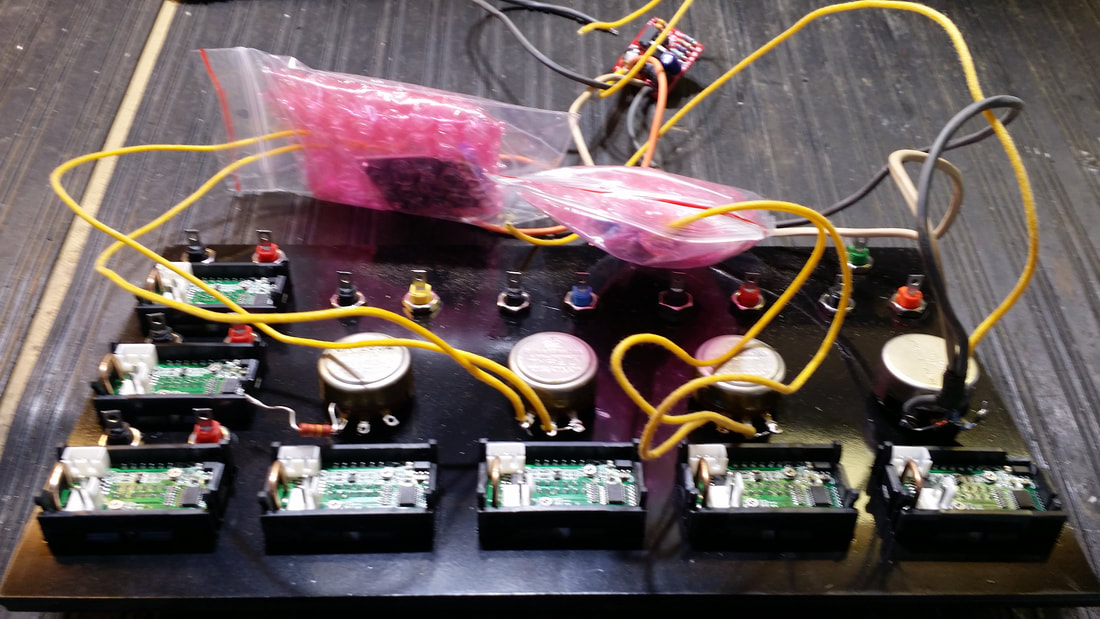
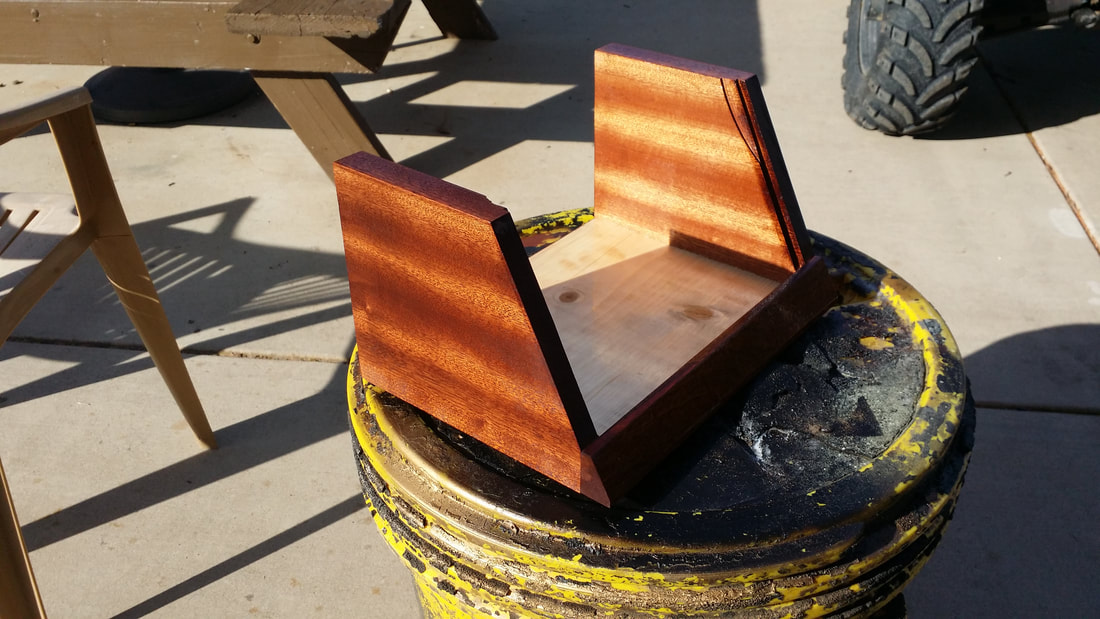
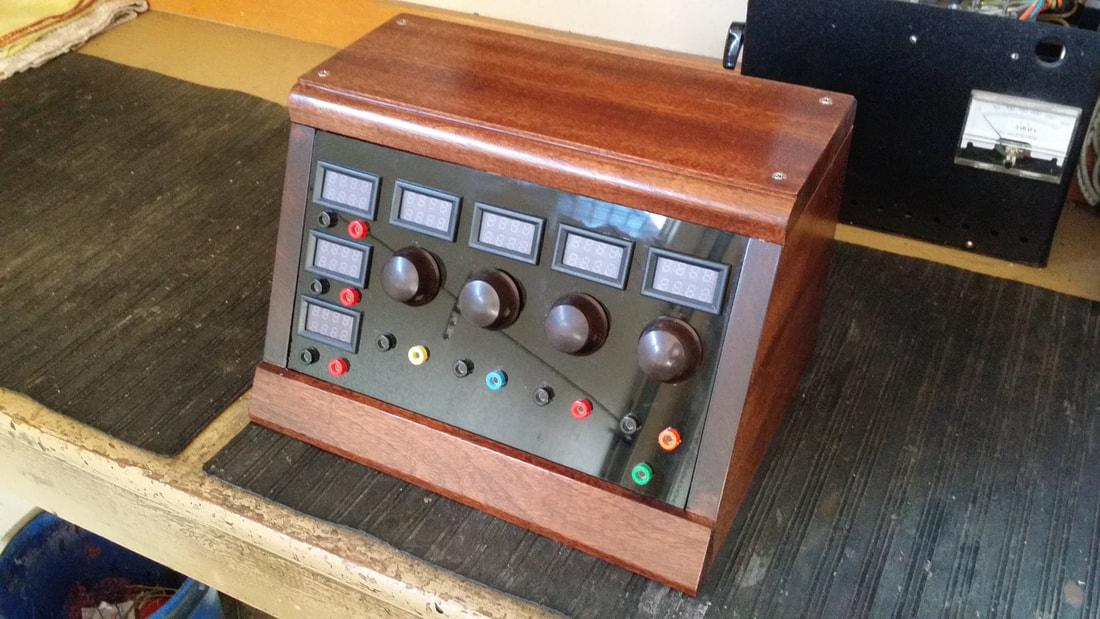
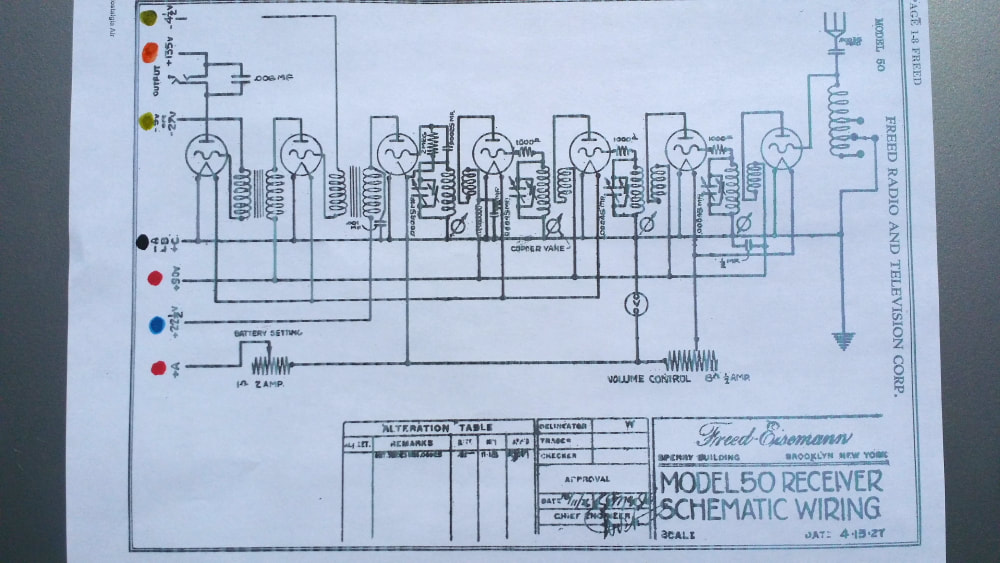
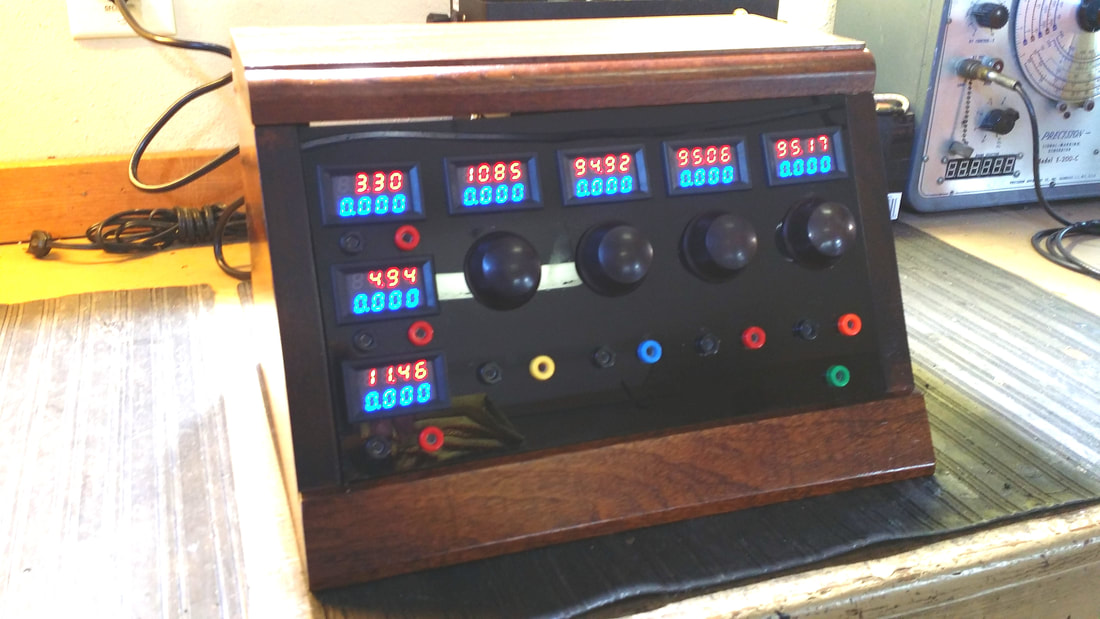
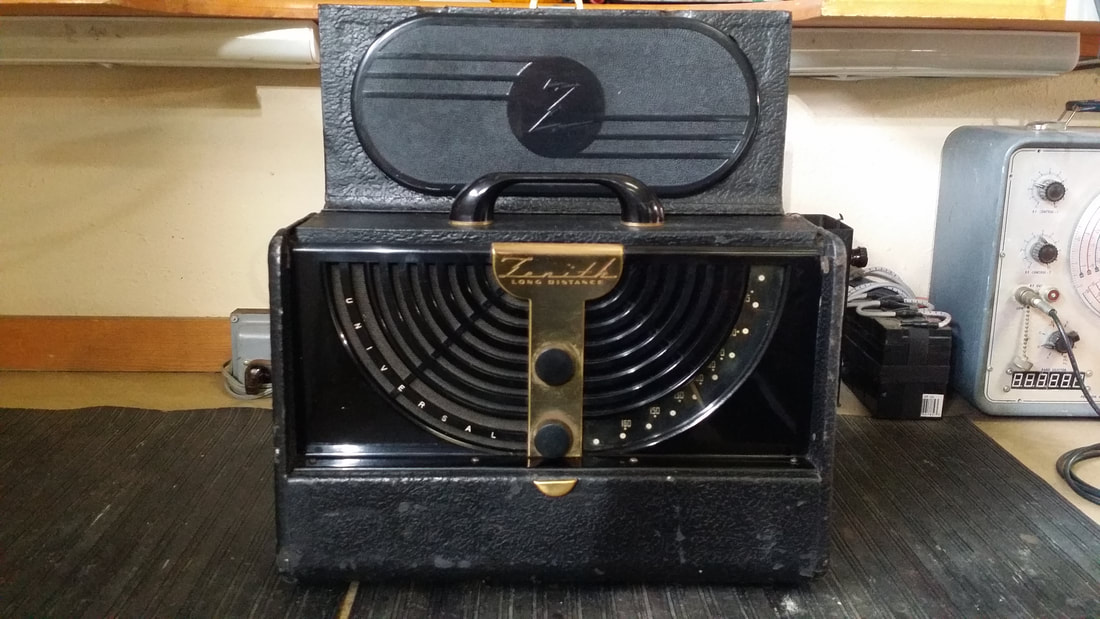
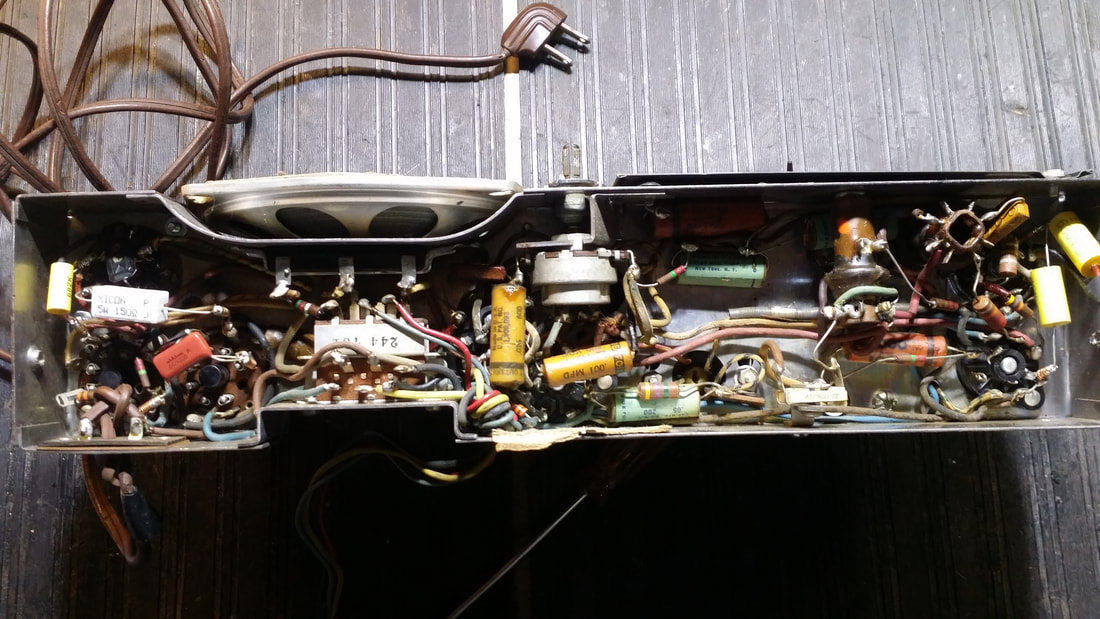
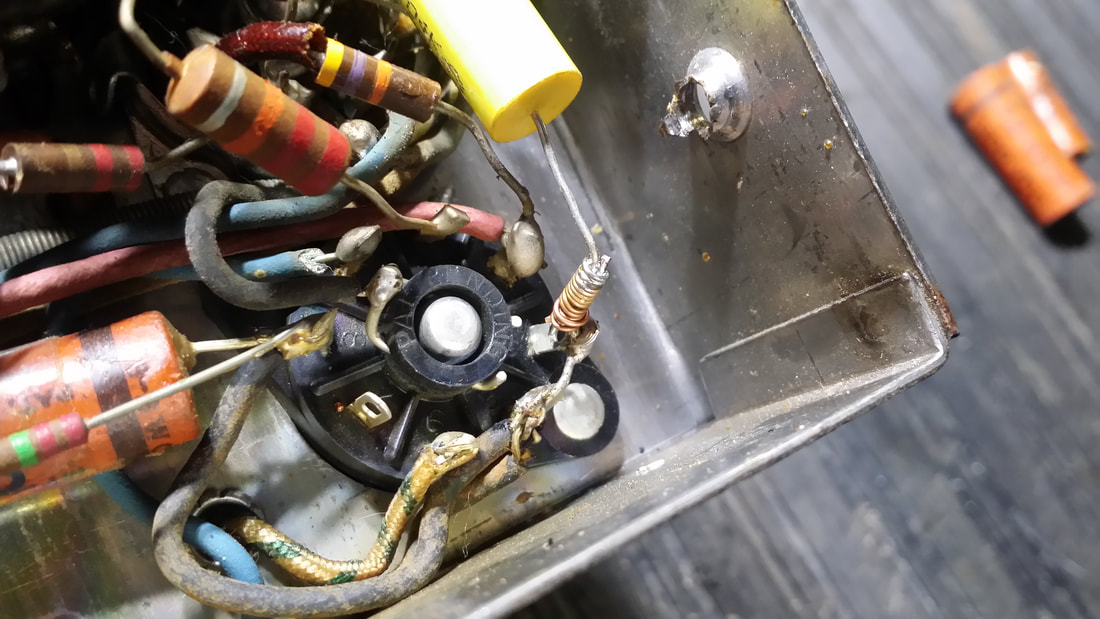
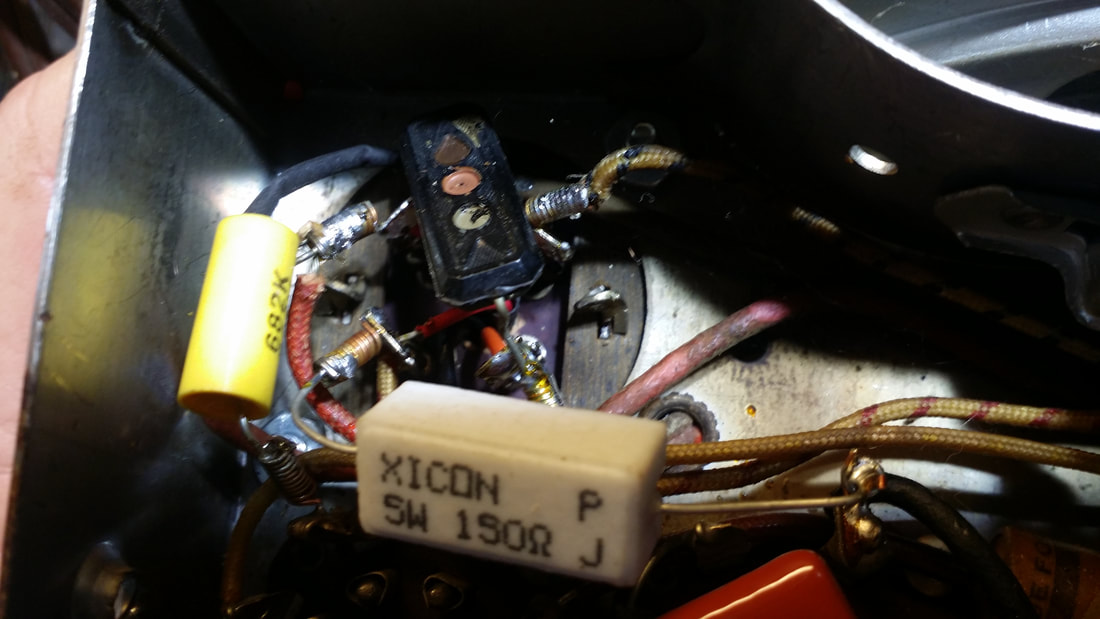
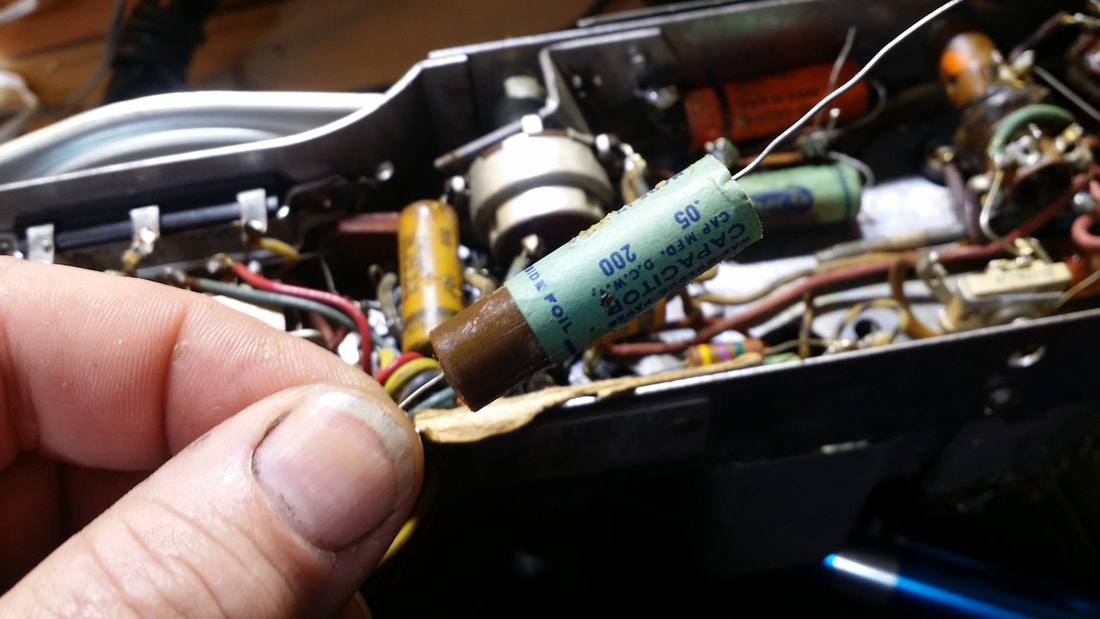
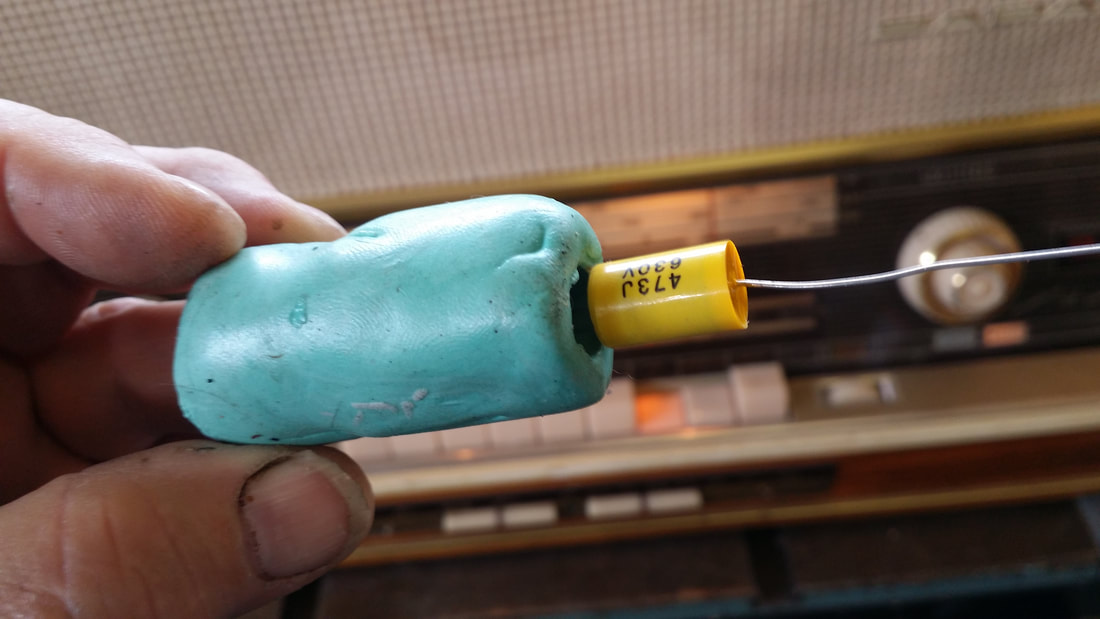
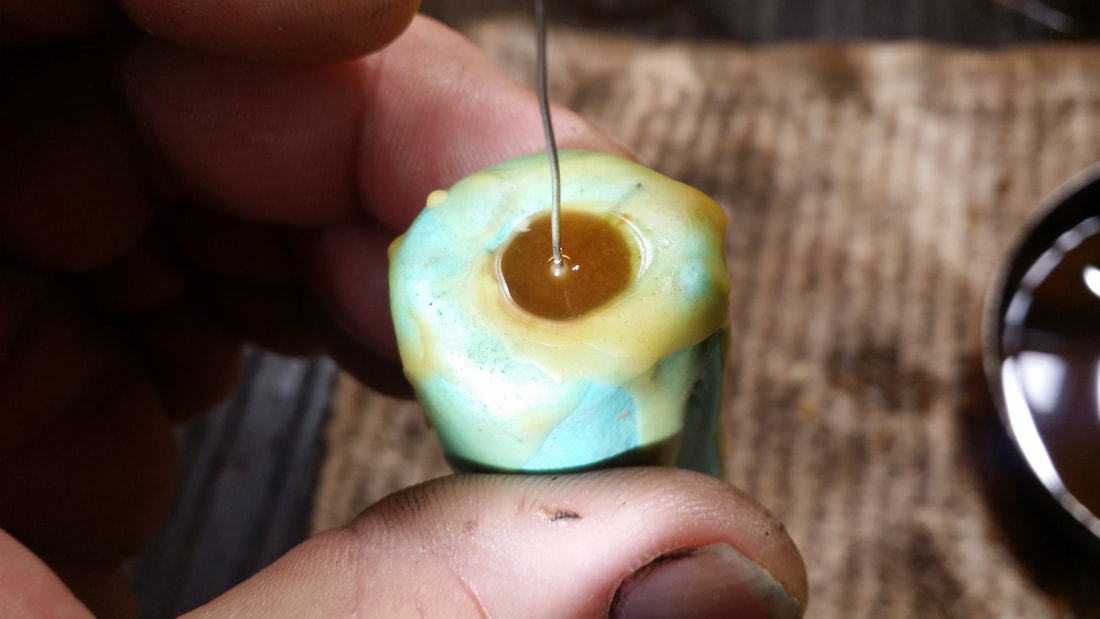
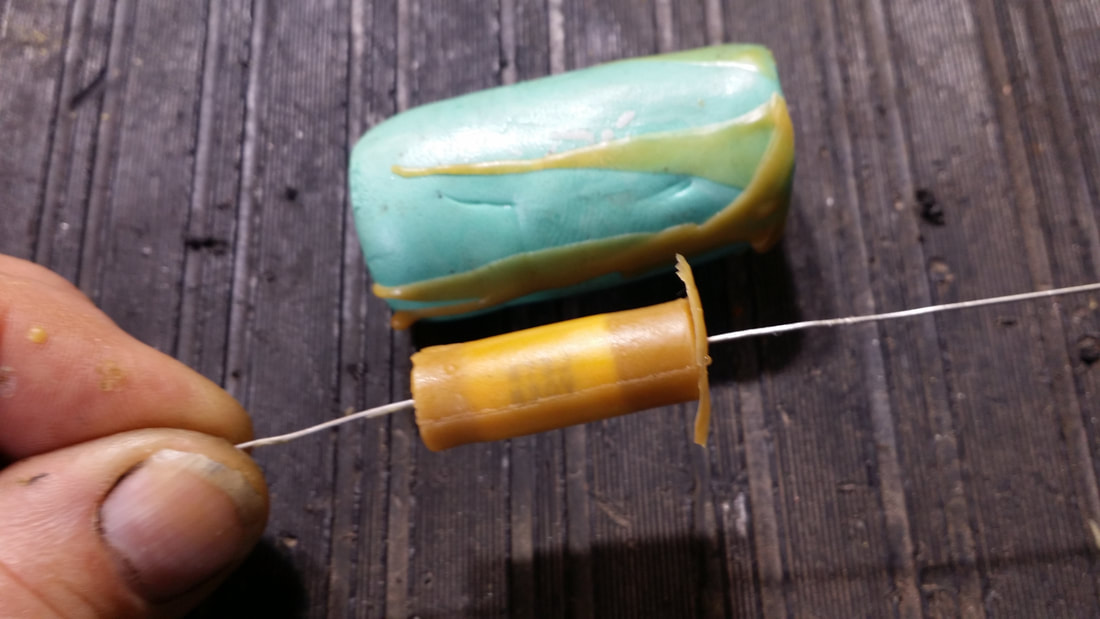
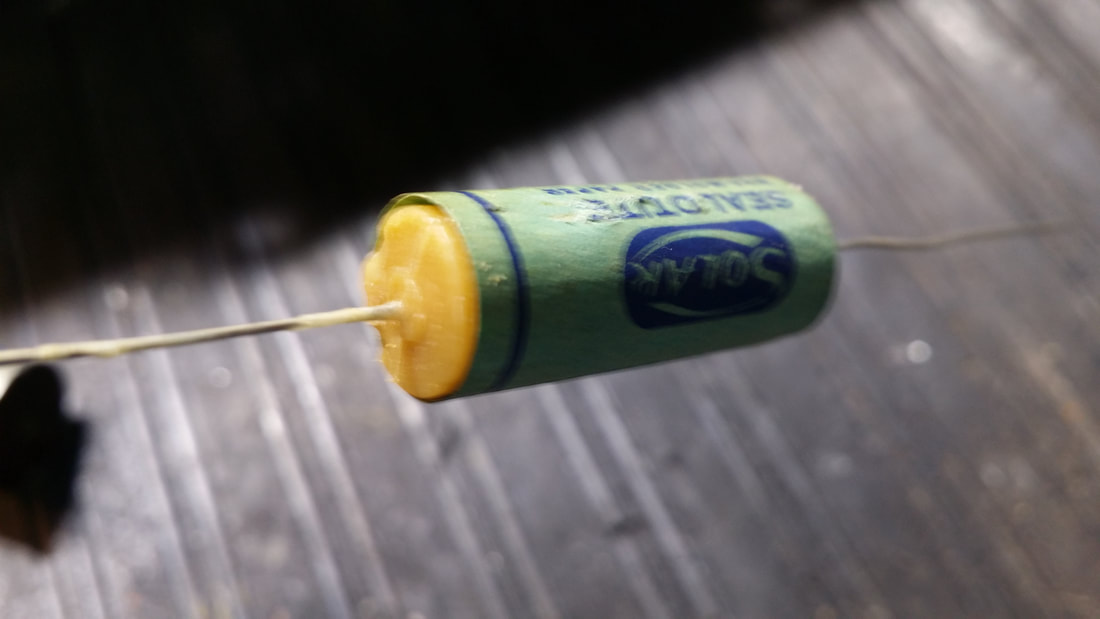
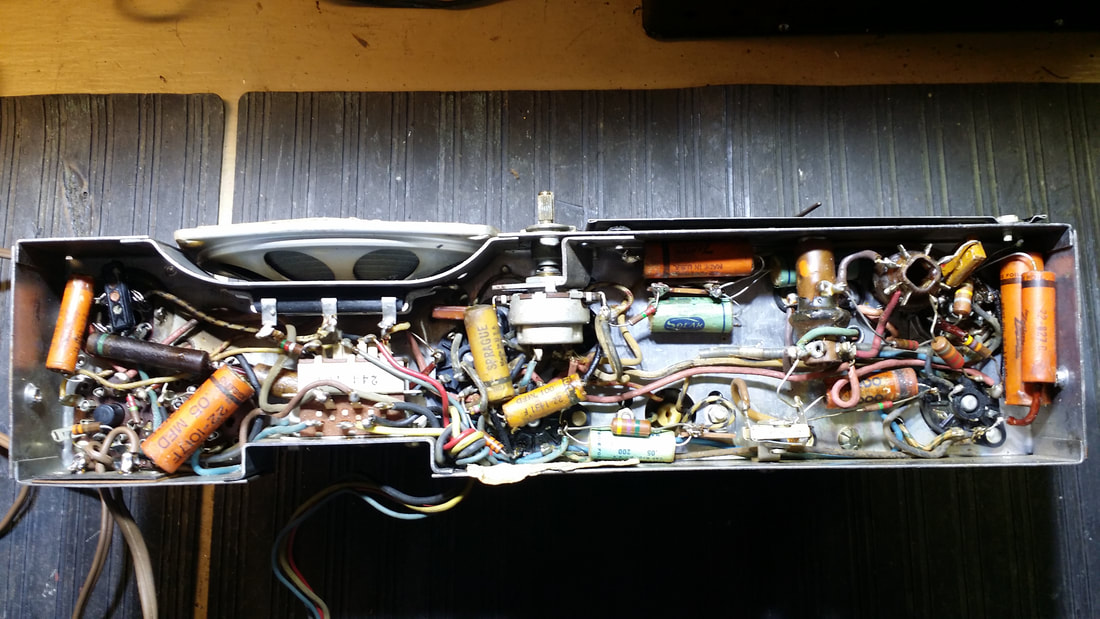
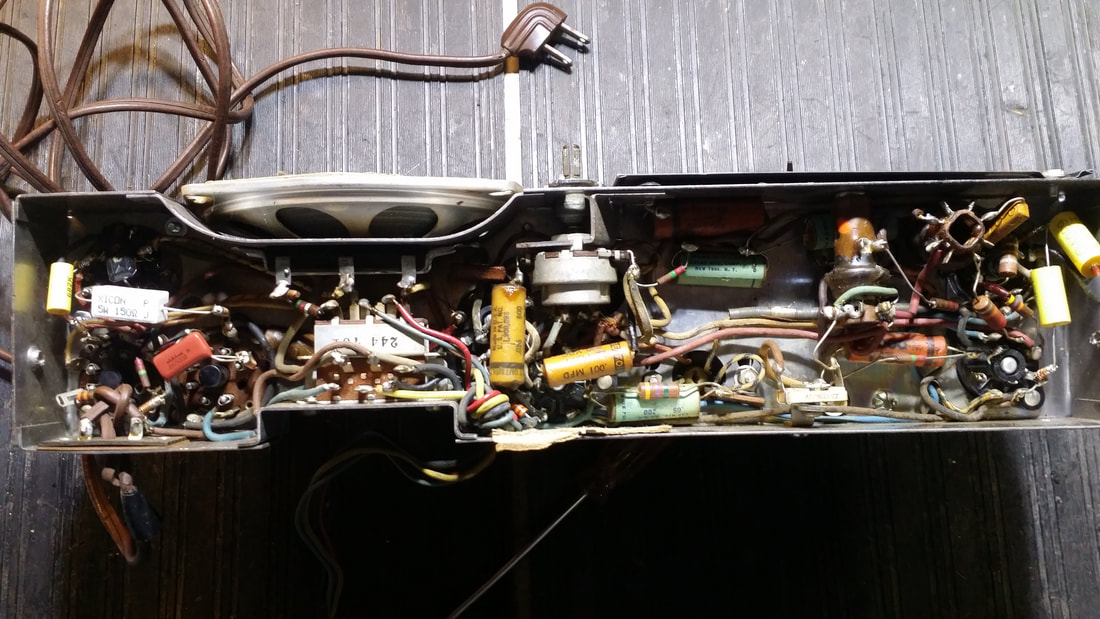
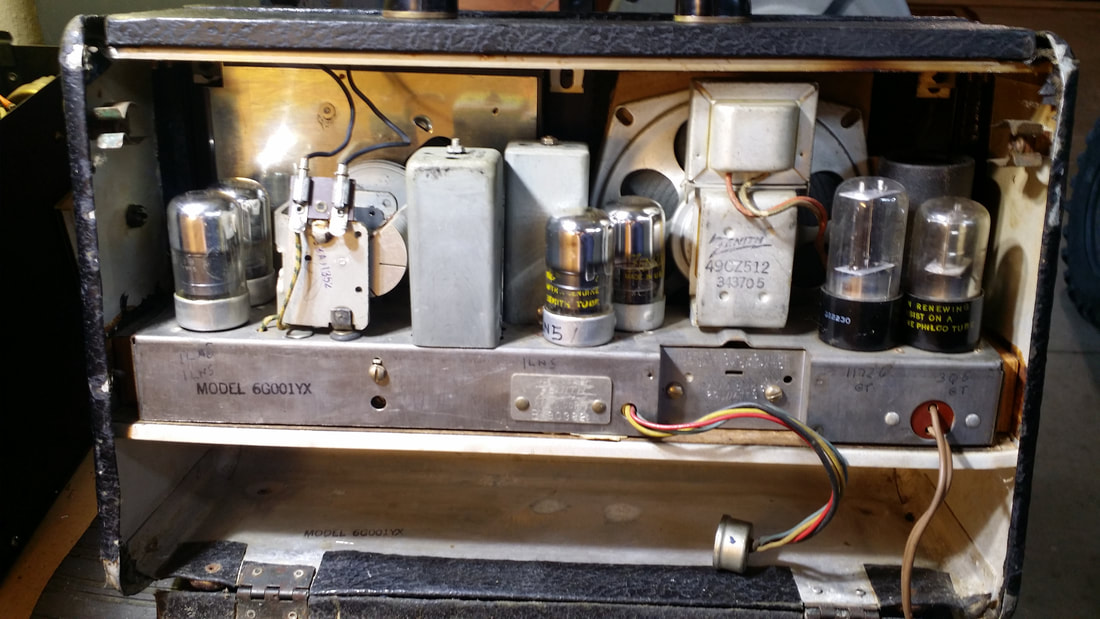
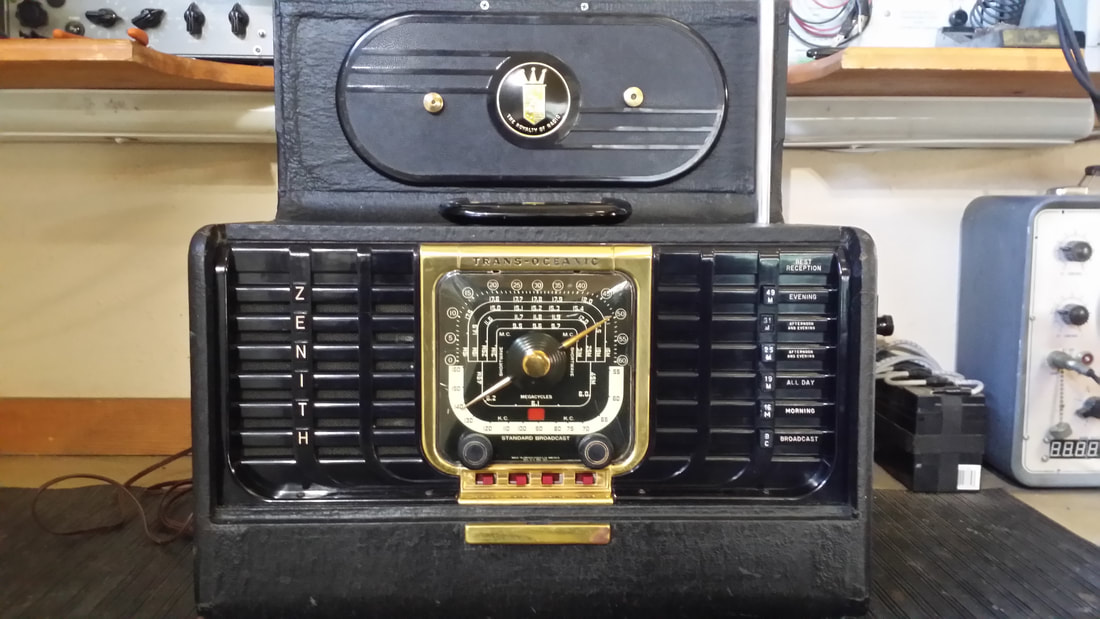
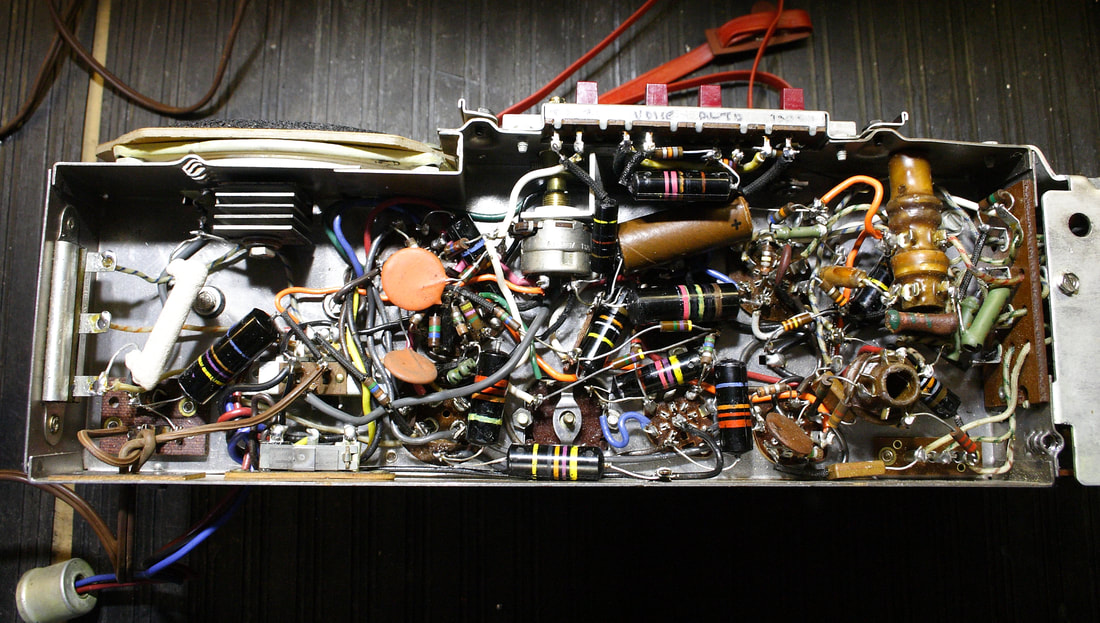
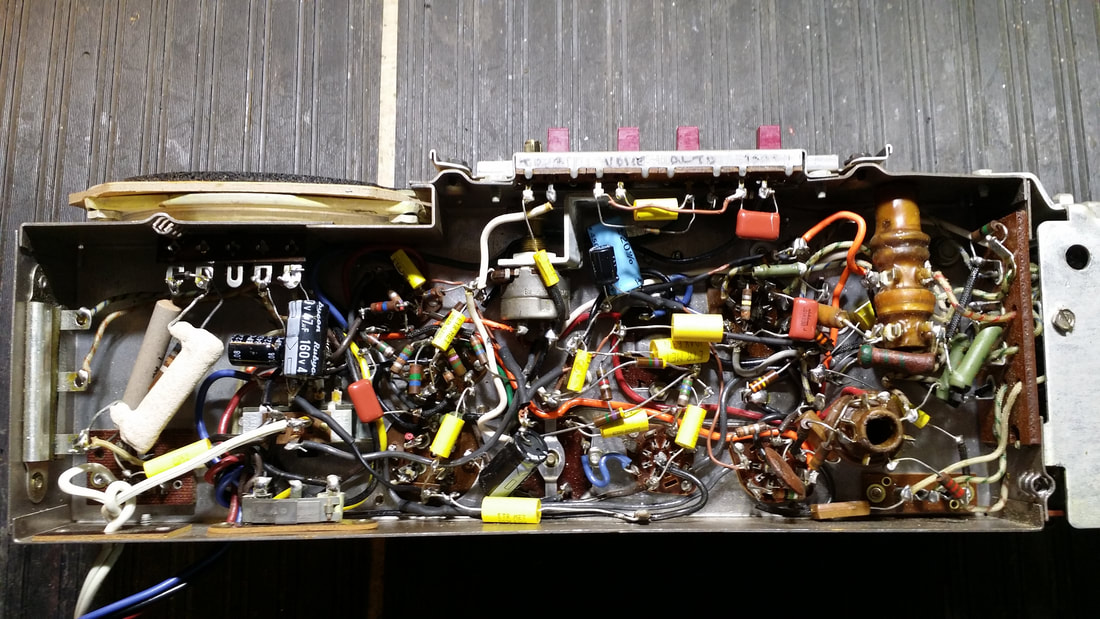
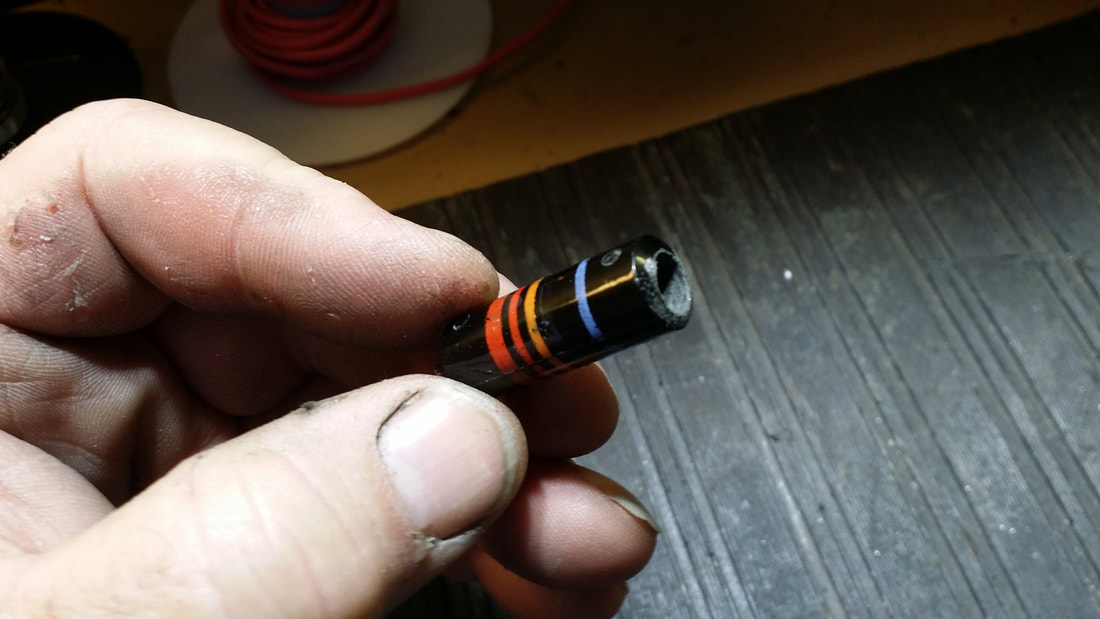
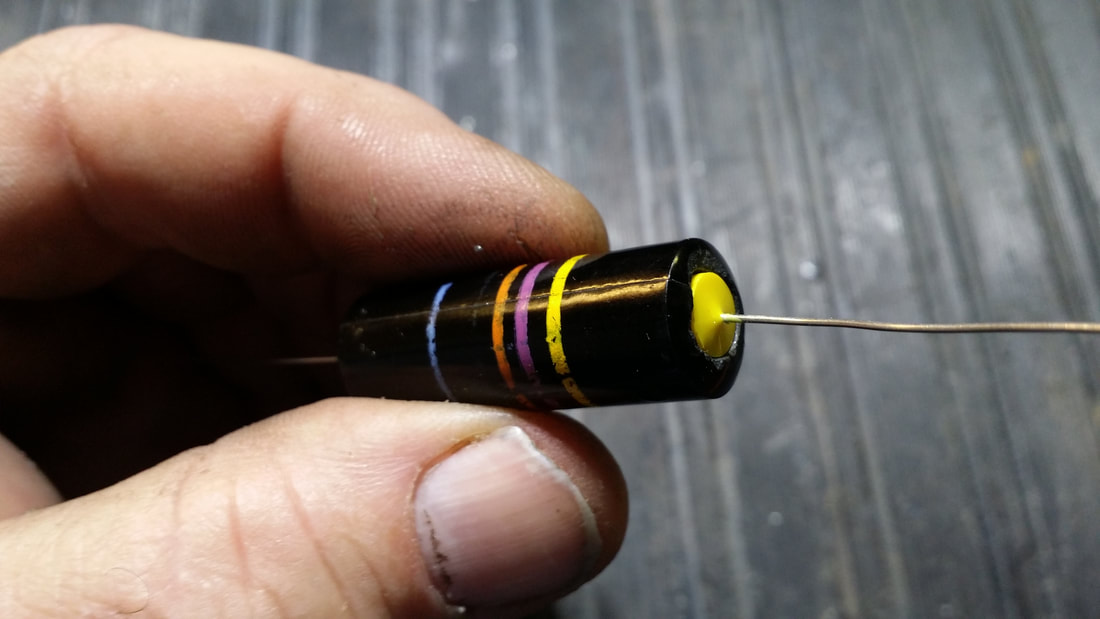
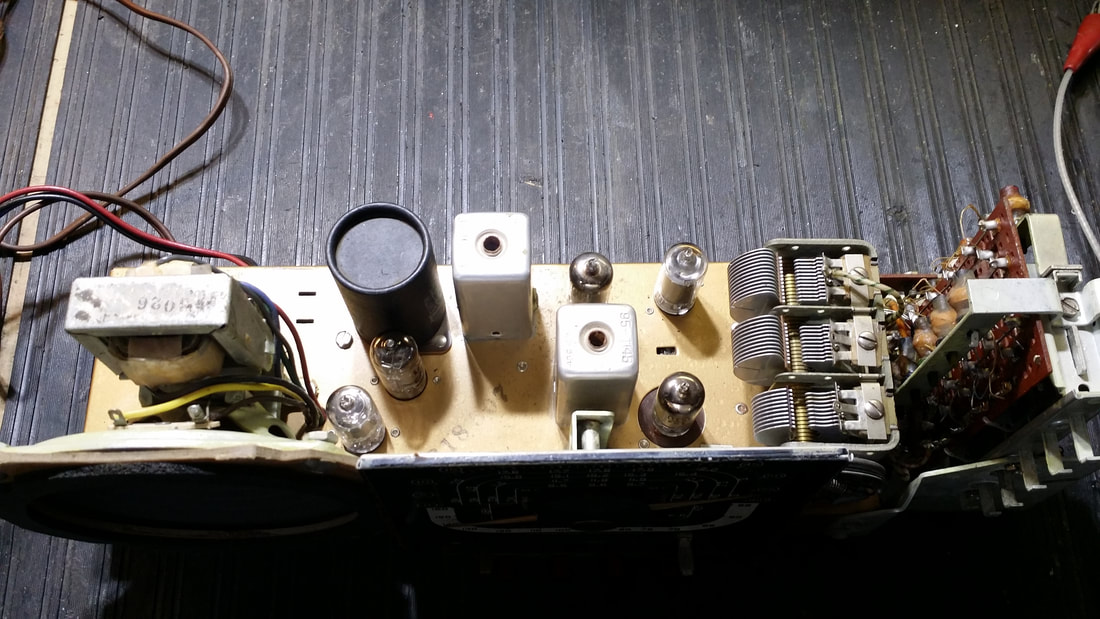
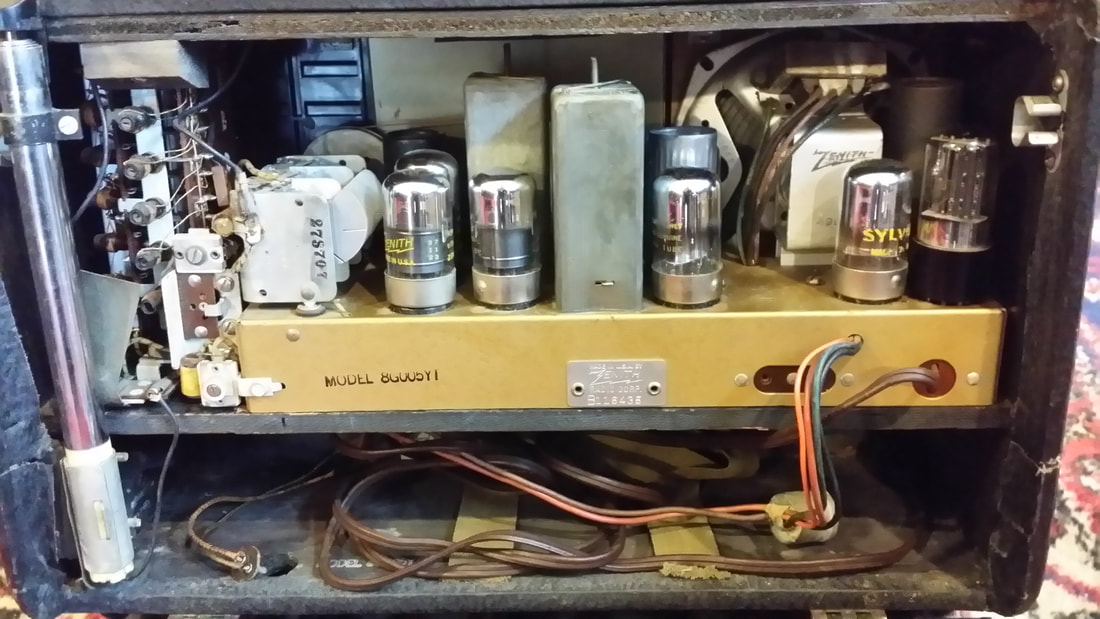
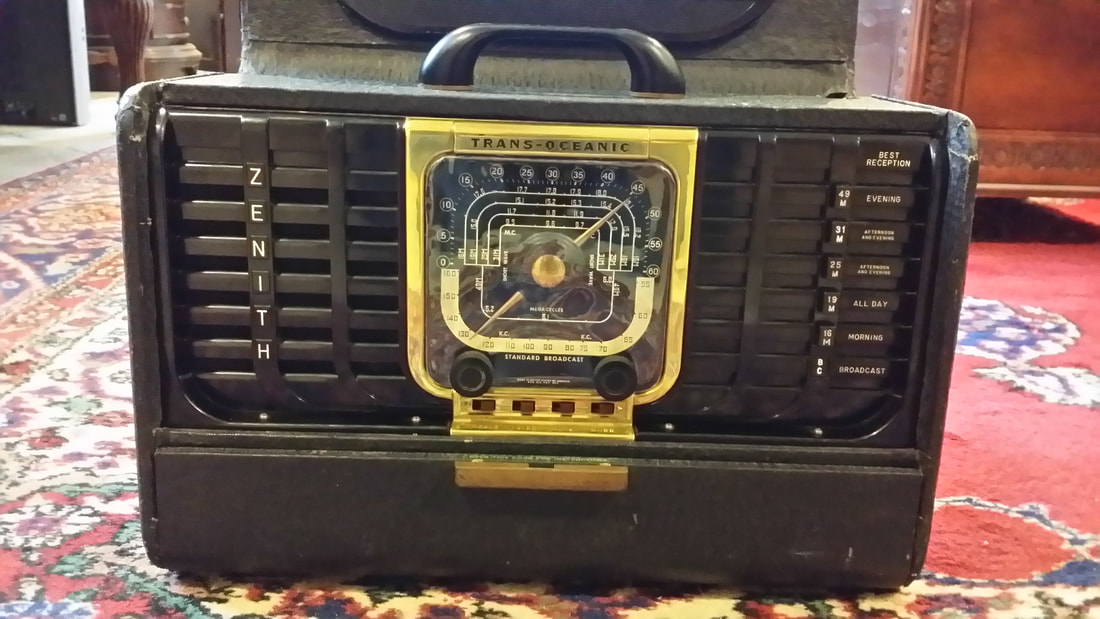
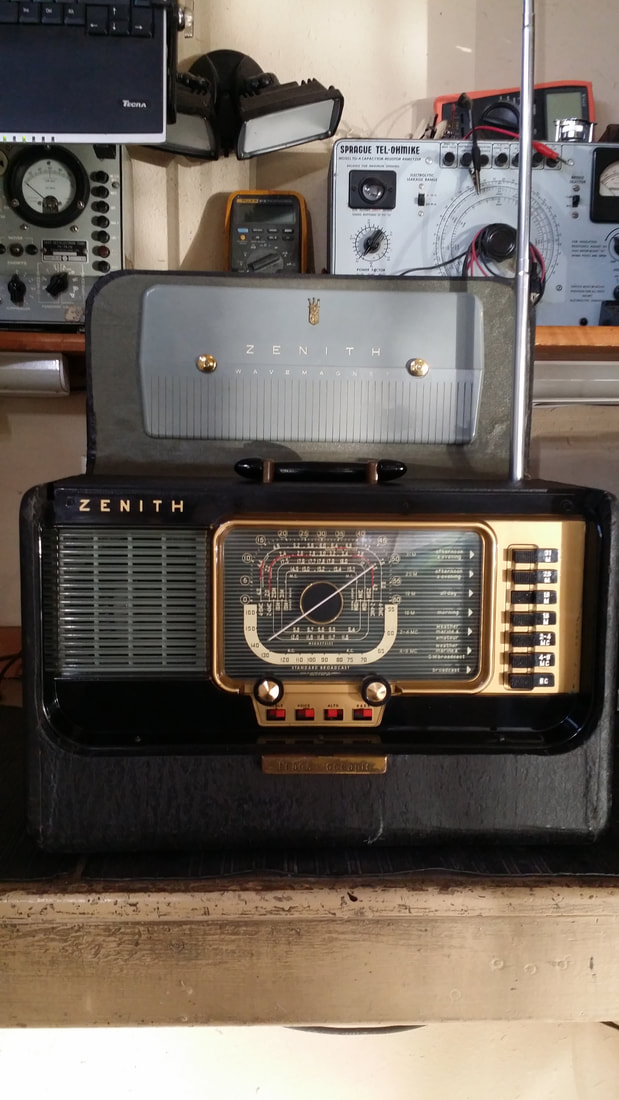
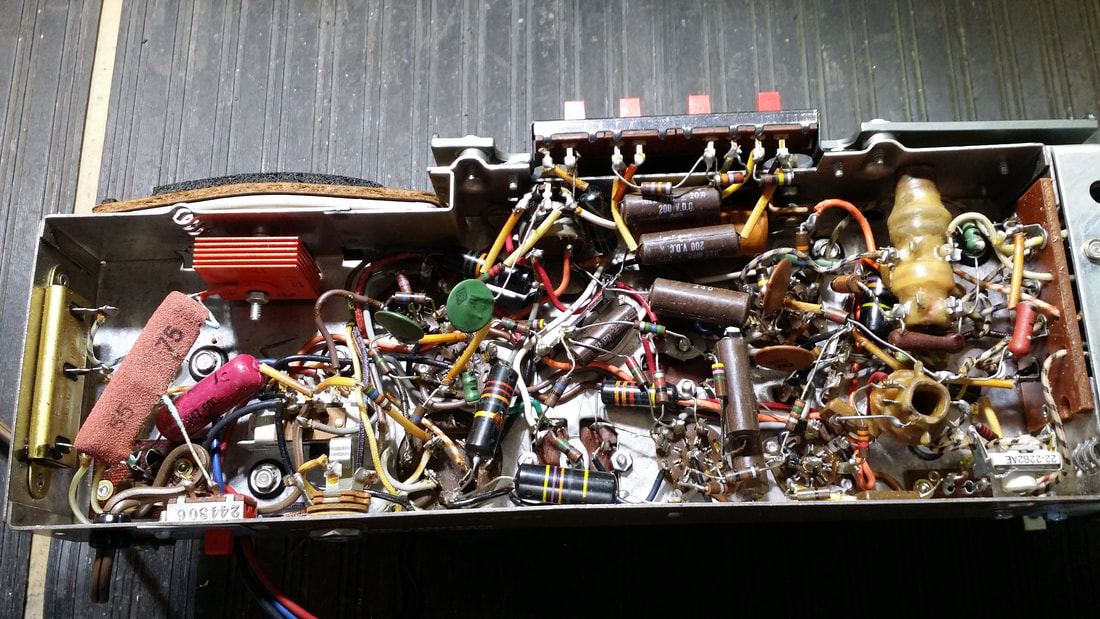
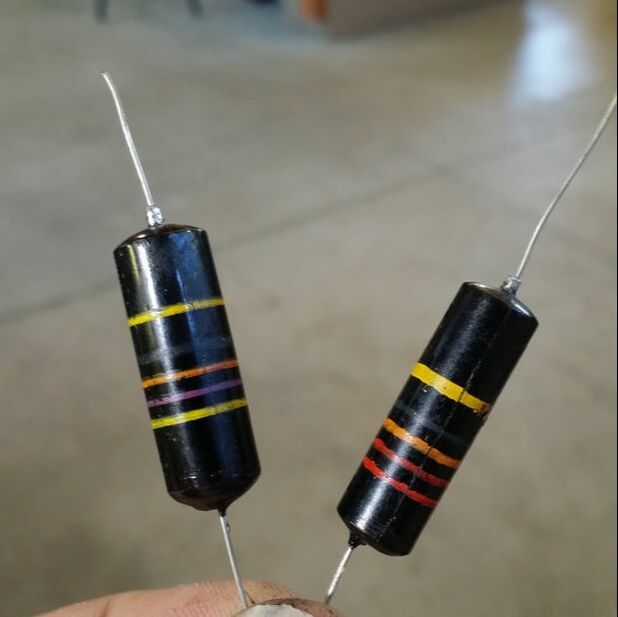
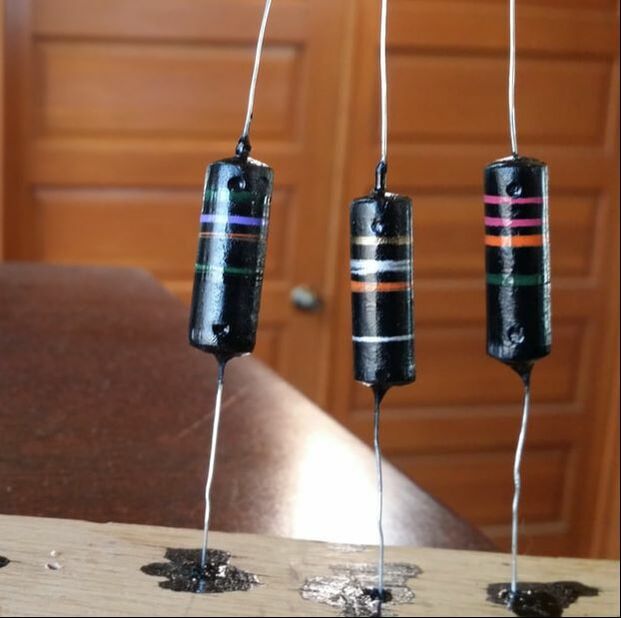
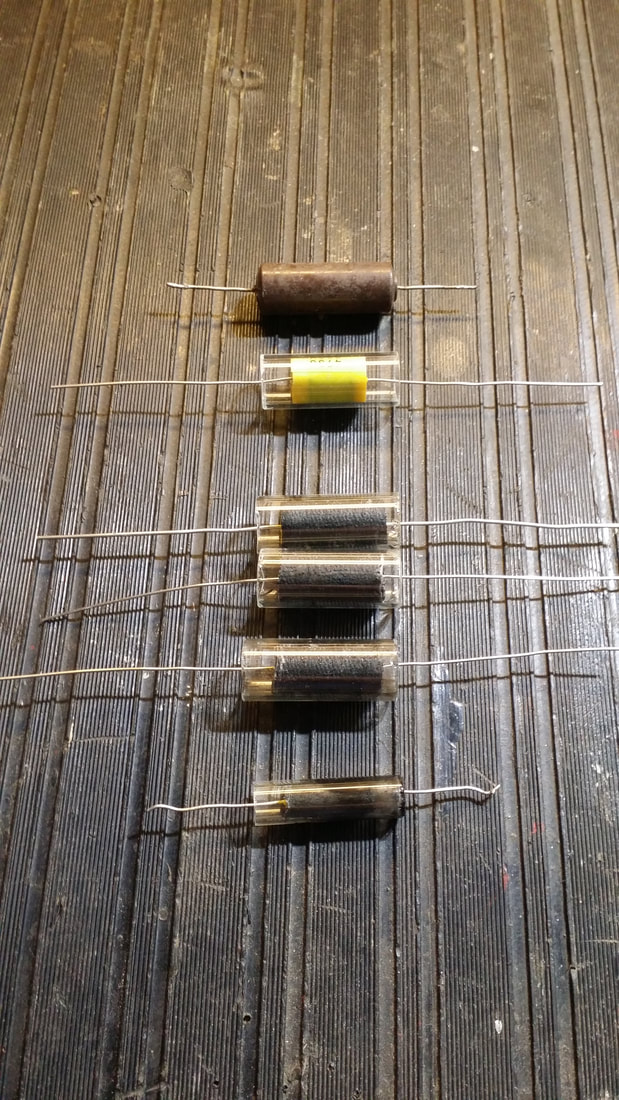
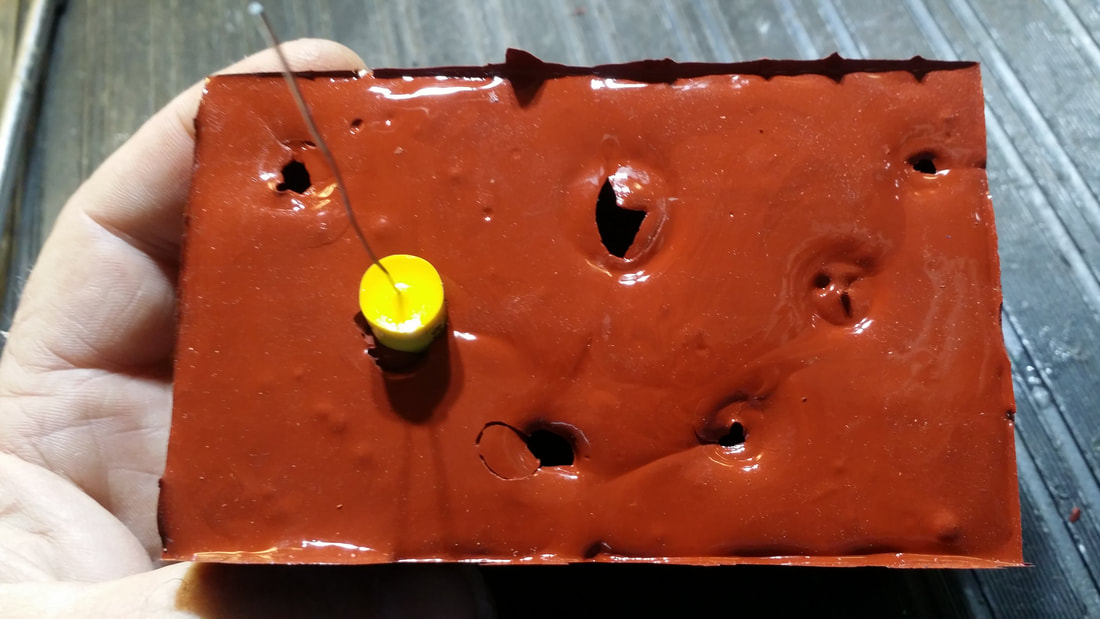
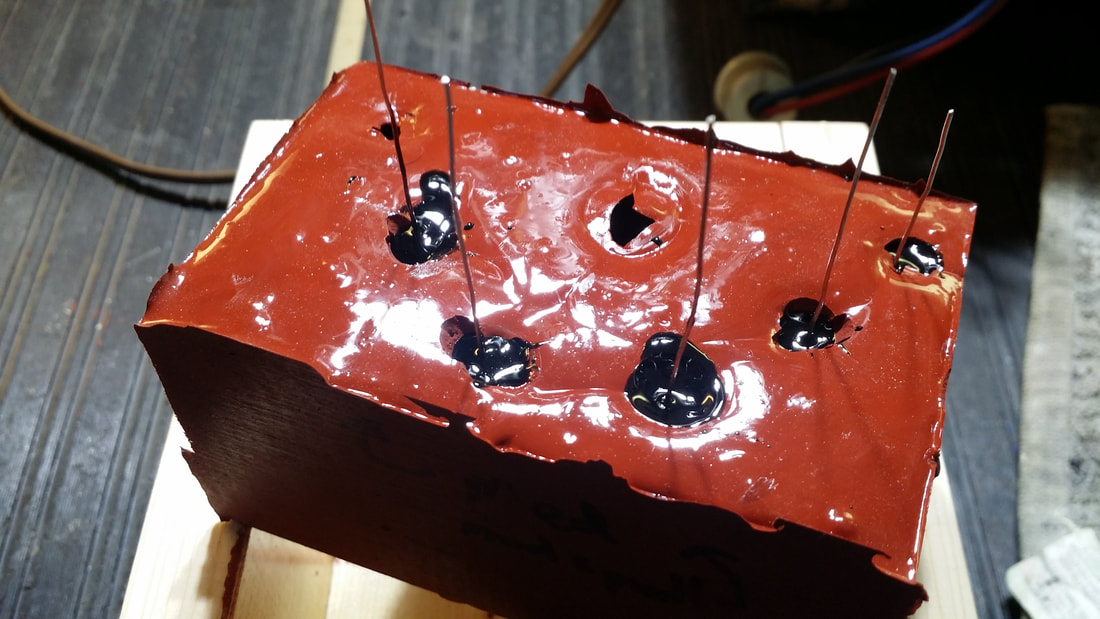
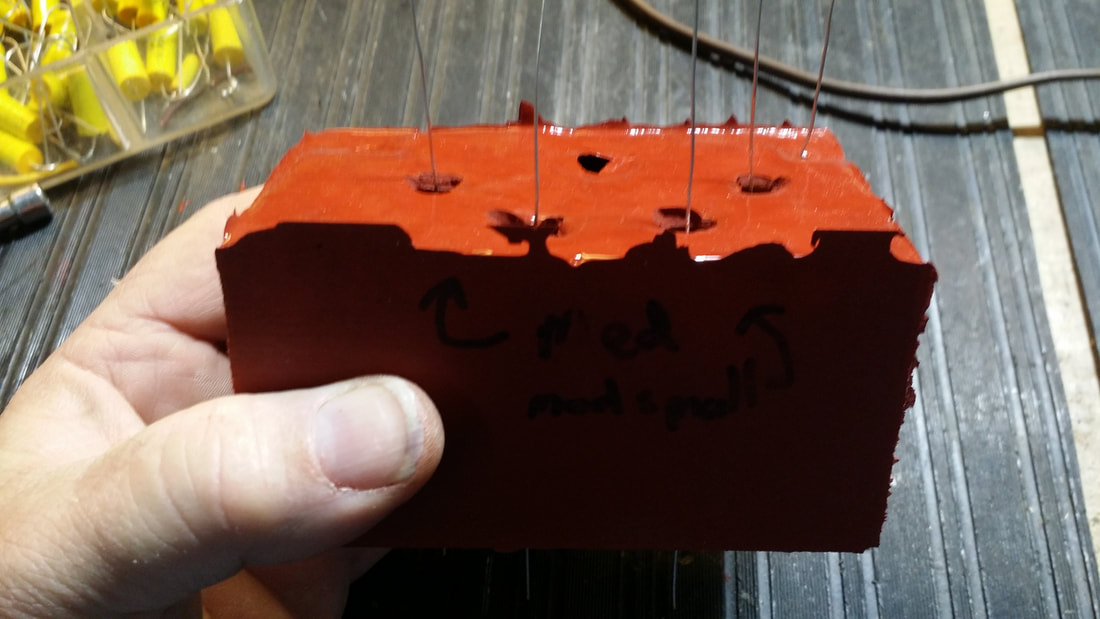
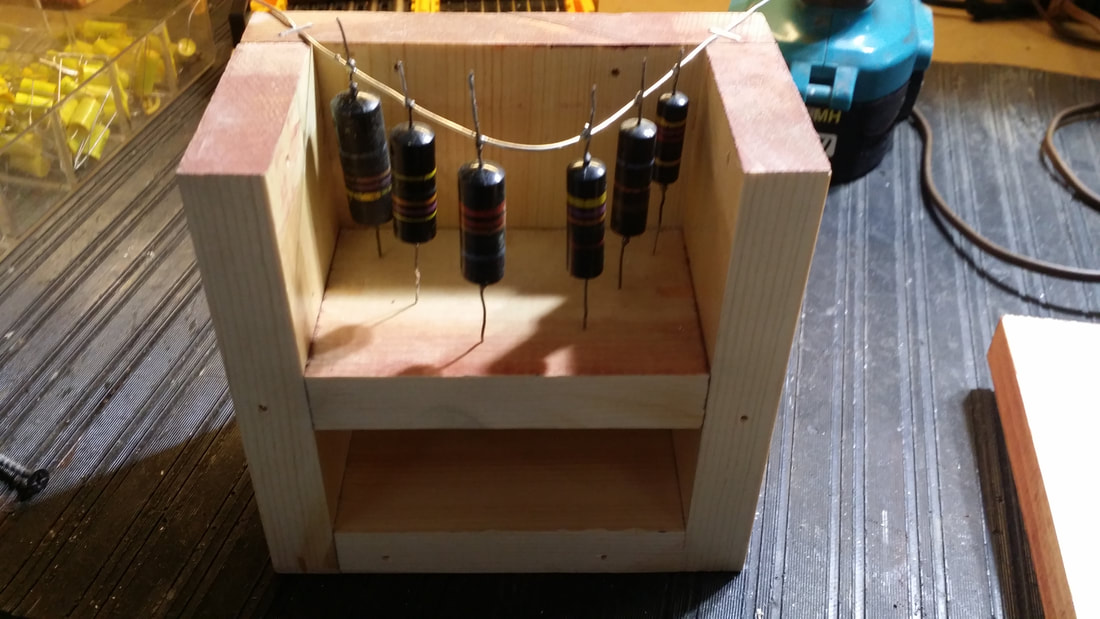
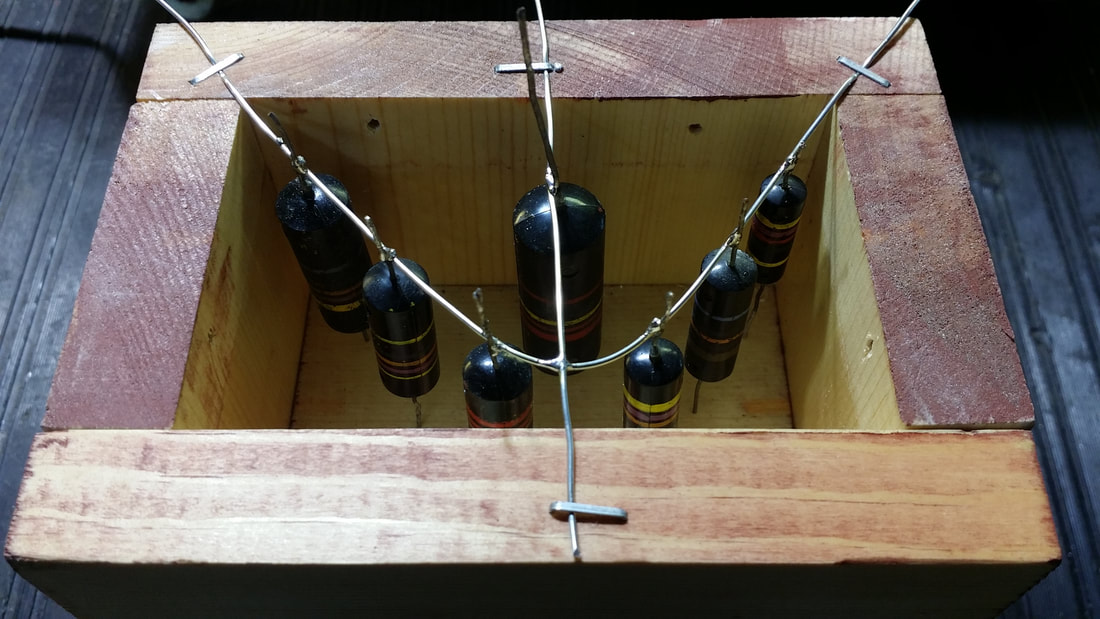
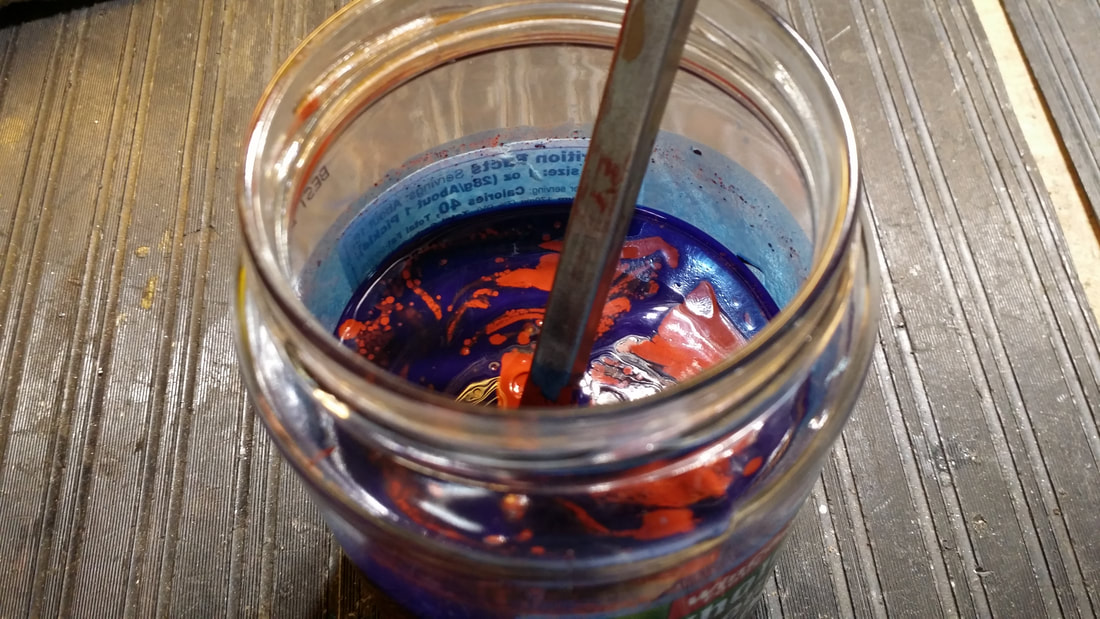
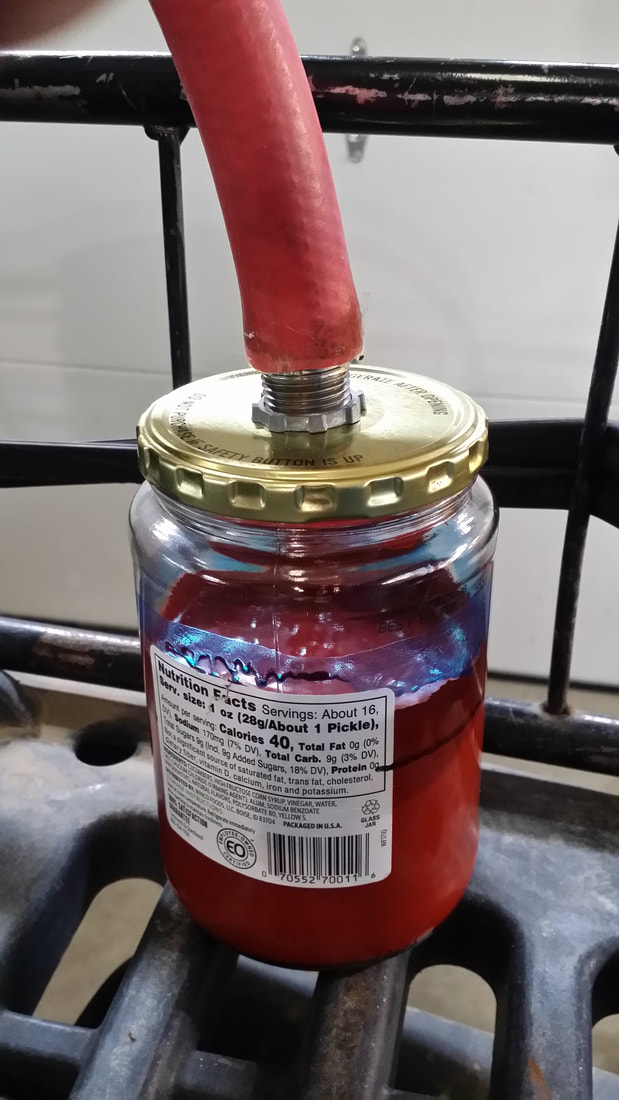
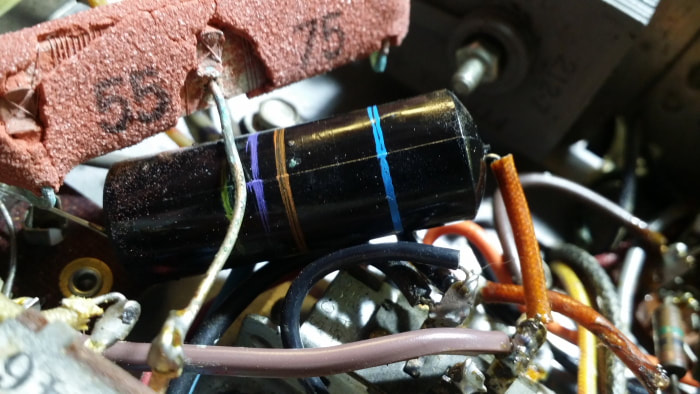
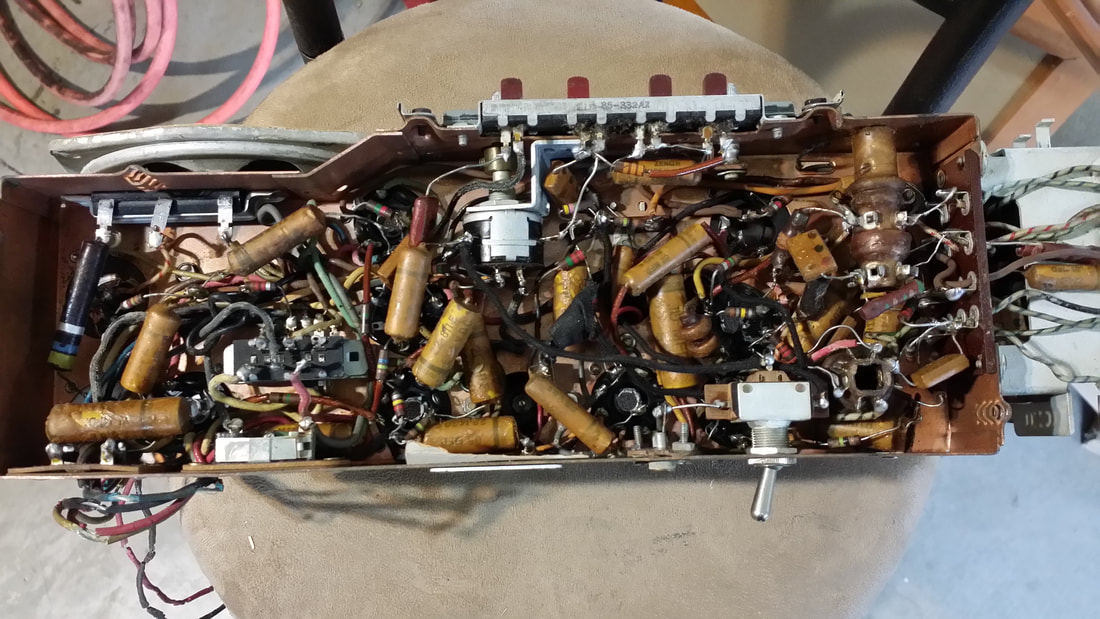

 RSS Feed
RSS Feed